

Estonia Travel Guide
Last Updated: April 29, 2024
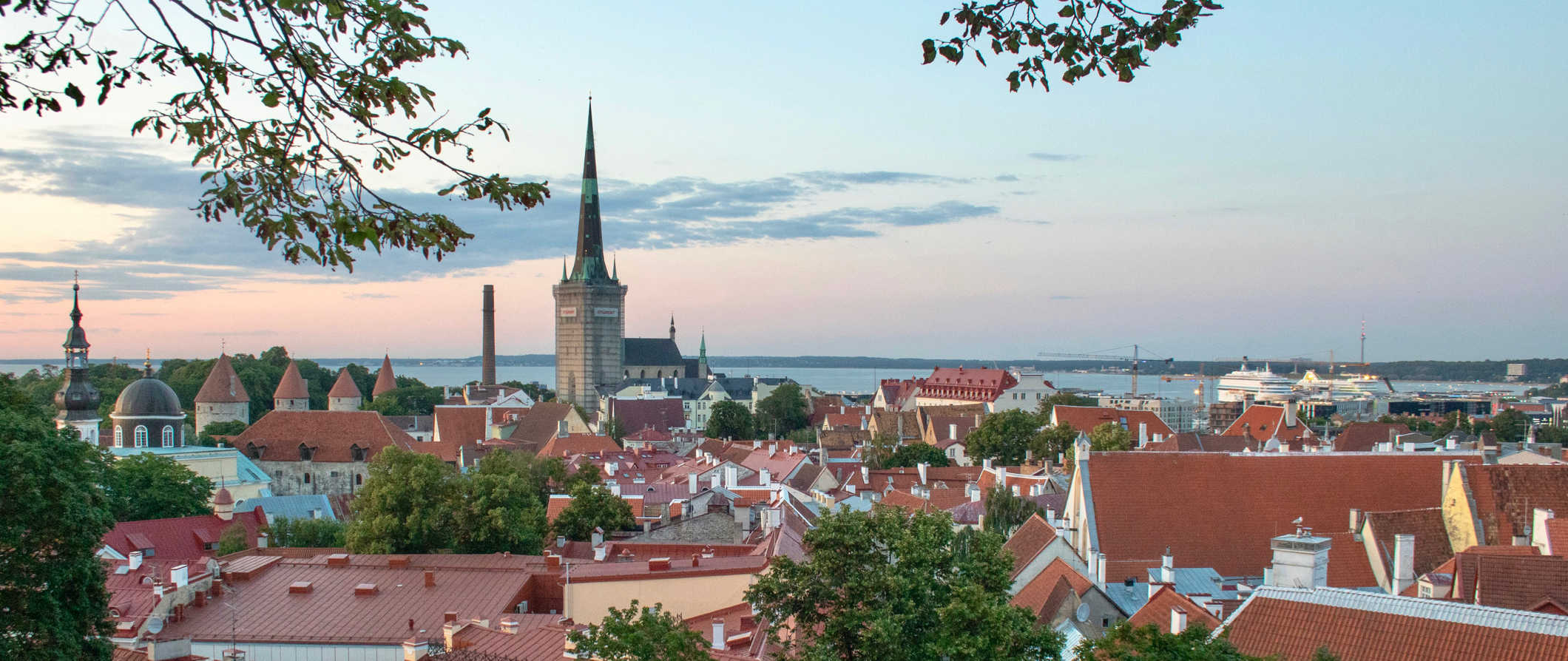
Tucked away in the Baltics, Estonia has become a popular destination thanks to cheap flights, beautiful cities, a wild nightlife, and the country’s stalwart support for digital nomads and remote workers (it’s also a popular spot for cruisers since many ships stop there as well).
I loved my time here. Unlike the stereotypes many people have about Eastern Europe, Estonia is a modern, organized, and tech-forward country. It has more start-ups than Silicon Valley and everything is done online here.
With more than 1,500 islands, swaths of untouched old-growth forests, and historic castles and churches, Estonia seamlessly blends old and new. Be sure to get out of Tallinn, too. There’s more to the country than just its capital.
This travel guide to Estonia can help you plan your trip, save money, and make the most of your time in this underrated European destination!
Table of Contents
- Things to See and Do
- Typical Costs
- Suggested Budget
- Money-Saving Tips
- Where to Stay
- How to Get Around
- How to Stay Safe
- Best Places to Book Your Trip
- Related Blogs on Estonia
Top 5 Things to See and Do in Estonia
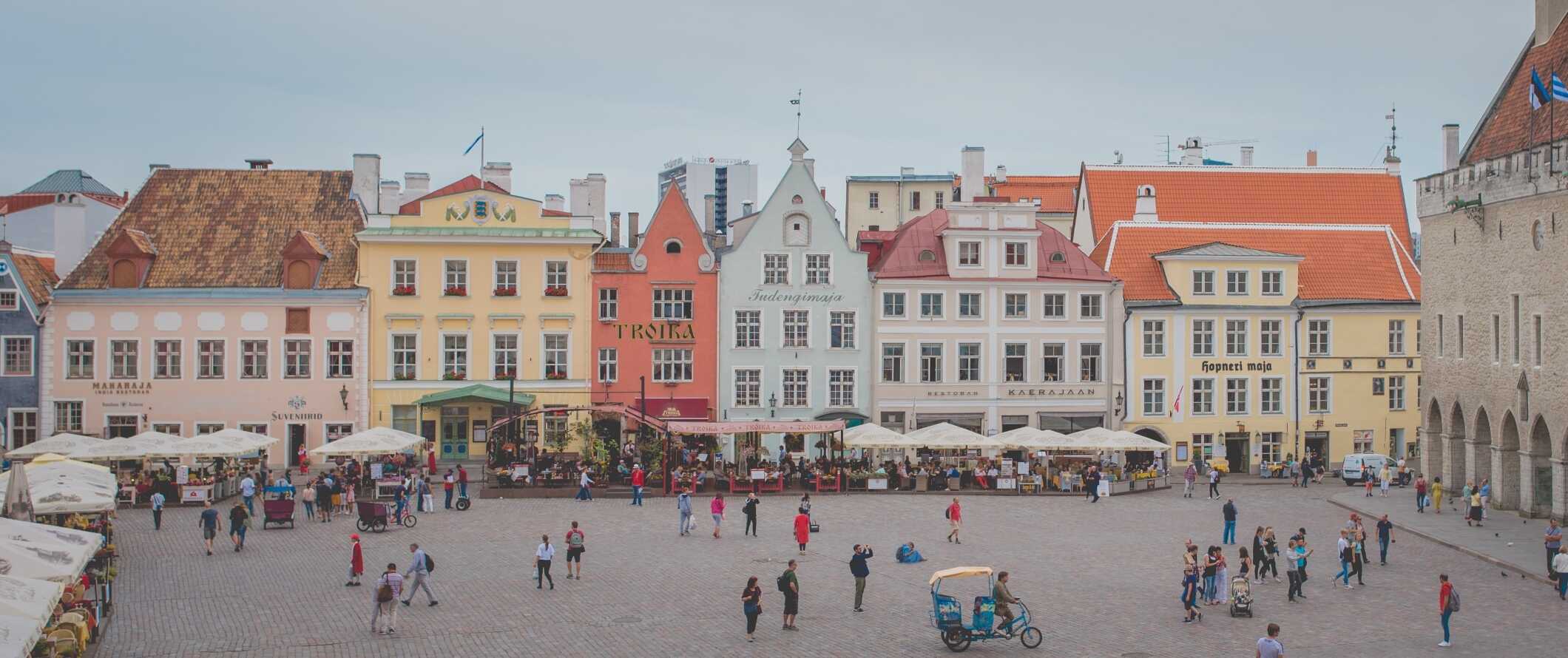
1. Party in Tallinn
Estonia’s historic capital city Tallinn is a cultural melting pot on the shores of the Baltic Sea. Here you can explore one of the best-preserved medieval cities in Northern Europe. Wander along the cobblestone streets while taking in historic architecture of the Old Town. While it has a lot of history to offer, it’s also ripe with bars, pubs, nightclubs, and cheap drinks. If you love live music, you’ll be impressed with Tallinn. There’s a vibrant party scene here that’s both fun and affordable.
2. Visit Pärnu
Overlooking Pärnu Bay is the resort city of Pärnu. Perched over the Baltic Sea, it’s a lovely place to relax for a few days. In the warmer months you can walk 20 minutes from the town center to the expansive Blue Flag beach with soft sand and calm water that is perfect for swimming and sunbathing. It makes for a perfect jumping-off point for anyone wanting to do any sailing while in Estonia. When you’ve had your fill of sand and saltwater, pamper yourself with a mud bath at the seaside 1920’s era spa. Like everywhere in Estonia, there’s some incredible historic architecture, like the old Russian style Transformation of Our Lord Church. Divided by the Pärnu River, the city is known for its 19th-century timber villas as well as the relaxing beaches of Pärnu Bay.
3. Get lost in Vanalinn
For the perfect mix of medieval and modern, venture into Tallinn’s Old Town, Vanalinn. This part of the city was built between the 13th and 16th centuries and was granted UNESCO World Heritage status in 1997. The original architecture is unbelievably well preserved — even after aggressive World War II bombings. Within the historic town square, you’ll find the 13th century Gothic Town Hall complete with a 64-meter-tall (209 feet) tower. It’s full of cobblestone streets and gothic architecture and makes for stunning photos and fun people watching.
4. Relax in Saaremaa
Home to the medieval castle Kuressaare (which dates to the 16th century), the island of Saaremaa is a beautiful place for hikers and bird watchers to escape into nature. Saaremaa is known for its beaches and traditional villages. Archeologists believe the island has been inhabited since 5000 BCE. The island is home to Vilsandi National Park, which spans 238 square kilometers (91 square miles) and is home to almost 250 species of birds. The climate makes it a hotspot for all types of flora and fauna. You can also visit the site of the Kaali meteorite strike (which happened over 3,000 years ago) with its huge craters and a unique museum full of chunks of the meteor.
5. Visit Lahemaa National Park
Located one hour east of Tallinn, this park showcases Estonia’s incredible natural beauty. The park was established in 1971 to protect the region, and it remains one of the main tourist attractions in the country. Spanning 750 square kilometers (289 square miles), it’s a wonderful hiking spot perfect for nature lovers thanks to the many large mammals living in the forests, including deer, wolves, bears, and lynx. About 70% of the park is covered in forest and there are a few incredible hiking trails to explore. Raised bogs are another interesting feature, especially Laukasoo Reserve which is believed to be 7000 years old. Those interested in architecture will love exploring the historic manors within the park, including the famous Baroque masterpiece Sagadi Manor. Admission is free.
Other Things to See and Do in Estonia
1. spot wildlife in soomaa national park.
Soomaa National Park is one of the most magical natural landscapes in Estonia. Spread out over 359 square kilometers (138 square miles), the park is home to elk, deer, boar, lynx, wolves, beavers, bears, and more. Located 140 kilometers (87 miles) south of Tallinn, the park is a popular getaway for hikers. The nearby Raudna River and Parnu Basin also offer the opportunity to kayak and canoe. Much of the park floods in the spring, giving you the chance to explore the forests via canoe/kayak. Admission to the park is free. Canoe and kayak rentals cost 27 EUR. Guided tours cost around 50 EUR.
2. Go skiing in Otepaa
A much-loved hiking and mountain biking destination during the summer, in the winter Otepaa transforms into the winter capital of Estonia. There are a couple of kilometers of mountains here and 8 different lifts that offer access. It’s one of the most budget-friendly places to ski in Europe . Lift passes cost around 38 EUR. Expect to pay another 35 EUR for a one-hour ski lesson and 15 EUR per day for ski rentals.
3. Explore Kuressaare Castle
Located on Saaremaa Island in western Estonia, Kuressaare Castle is the best-preserved castle in the Baltics. Built in the 14th century, the castle and its moat were constructed on the grounds of the original castle that dated to the 13th century. The current castle was constructed in the late Gothic style and consists of a large square building surrounding a spacious courtyard. A 36-meter (121-foot) defensive tower and traditional medieval portcullis make up the castle’s defenses. There’s a museum inside that sheds light on the castle’s history, including when the Nazis used the castle to execute dissidents. Admission to the castle is free while the museum costs 10 EUR. Bike rentals cost 4 EUR an hour and rowboats cost 10 EUR per hour.
4. Hang out in Tartu
Tartu holds the title of the intellectual (and hipster) capital of Estonia. Located two hours south of Tallinn, here you’ll find the country’s most prestigious university (University of Tartu), a historic citadel, and the ruins of the city’s cathedral (which dates to the 13th century). Be sure to explore Soup Town (a neighborhood composed of old wooden houses), see the 18th-century town hall (which stands out because it’s pink and red), and spend some time people-watching at a café in Raekoja Square, the city’s historic main square.
5. Visit the Estonian National Museum
Founded in 1909, this museum is located in Tartu. It was expanded in 2016 and moved into a massive new building. There are tons of exhibitions on Estonian history, with a detailed gallery on the Russian occupation of the country (which lasted from 1940-1991). The museum provides a solid historical and cultural foundation to help you better understand Estonia’s past and present. Admission is 14 EUR.
6. Visit Kaali Meteorite Crater Field
Located on Saaremaa Island, this site is where a giant meteorite hit over 7,500 years ago. There are 9 craters in total, with the largest crater spanning 110 meters in diameter (360 feet) and reaching depths of 22 meters (72 feet). All kinds of animal bones have been found here and there is a stone wall built around the area (dating to the Bronze Age), leaving archaeologists to surmise that the area was used for some kind of cult or religious ceremonies after the craters were made. Admission is free, though the small museum nearby costs 1.60 EUR to enter.
7. Enjoy an open-air festival in Viljandi
For summer festivals and live music, head to Viljandi. Located in the middle of the country, the town’s medieval castle is used for concerts and music festivals (especially traditional folk music). While you’re here, be sure to spend some time relaxing at Lake Viljandi where you can swim and enjoy the beach. Lake Võrtsjärv, the largest inland lake in the country, is also nearby.
8. Visit the Alexander Nevsky Cathedral
The Alexander Nevsky Cathedral is in the heart of Tallinn’s Old Town. Standing 45 meters tall (150 feet), it was built between 1894-1900 in the Russian Revival style. It was left to decline under Soviet rule, however, once Estonia gained independence it was restored to its former glory. As well as the elaborately decorated bells (the largest weighing almost 16 tons) there are some beautiful religious mosaics inside and incredibly detailed stained glass windows. Admission is free but it’s a place of worship so dress respectfully.
9. Try windsurfing
With so much of the country surrounded by water, Estonia is a perfect destination for windsurfing. There are windsurfing shops on the west coast and in the north that offer rentals for 25-40 EUR and lessons from 66 EUR per hour. If windsurfing isn’t your thing, you can also enjoy stand-up paddleboarding, wakeboarding, or water skiing. Expect to pay around 20 EUR for those activities.
10. Visit the KGB Museum
Located on the top floor of Tallinn’s luxurious Hotel Viru are the KGB’s former spy rooms (the KGB was the Soviet Union’s secret police). The rooms were discovered after the KGB fled Estonia in the early 1990s. The hotel owners decided to keep the rooms exactly the way they were. Inside are listening and surveillance equipment that looks like something straight out of a vintage spy movie. The museum is only accessible as part of a guided tour that can be booked from the hotel lobby. The tour costs 12 EUR.
11. Go birding in Matsalu National Park
This is one of the best places to spot endangered species like the white-tailed eagle or watch the migrating cranes. Established in 1957, the park was created to protect the nesting and migrating birds. It’s located on the west coast of the country, spanning almost 500 square kilometers (192 square miles). Every year, between 10,000-20,000 cranes and upwards of 40,000 ducks visit the park as they migrate. Admission is free.
12. Wander Linnahall
Commissioned by the Soviet Union to accommodate the 1980 Moscow Summer Olympics, Tallinn’s Linnahall sports complex is now a giant, imposing, concrete ghost town. An amphitheater that seats 5,000 was unable to be utilized once the Olympic-sized crowds had departed so it now lies crumbling (construction was rushed and was done poorly so the buildings are falling apart). Over 66 countries boycotted the games due to the U.S.’s disapproval of the Soviet-Afghan war. Today, the venue is not in use so you’re free to wander and explore. Its location above the city makes it a great lookout spot. It’s an interesting place to wander around if you have a spare few hours.
13. Visit the Estonian Open-Air Museum
Hidden amongst the trees and forests just outside of Tallinn, this open-air museum is a reconstruction of an 18th-century rural village. It’s home to all kinds of traditional Estonian buildings. There are actors dressed up in historical garb as well as traditional professions on display, such as basket weaving and blacksmithing. There are over 80 wooden buildings you can visit, including a church, school, tavern, and farmhouse. Admission is 10 EUR.
Estonia Travel Costs
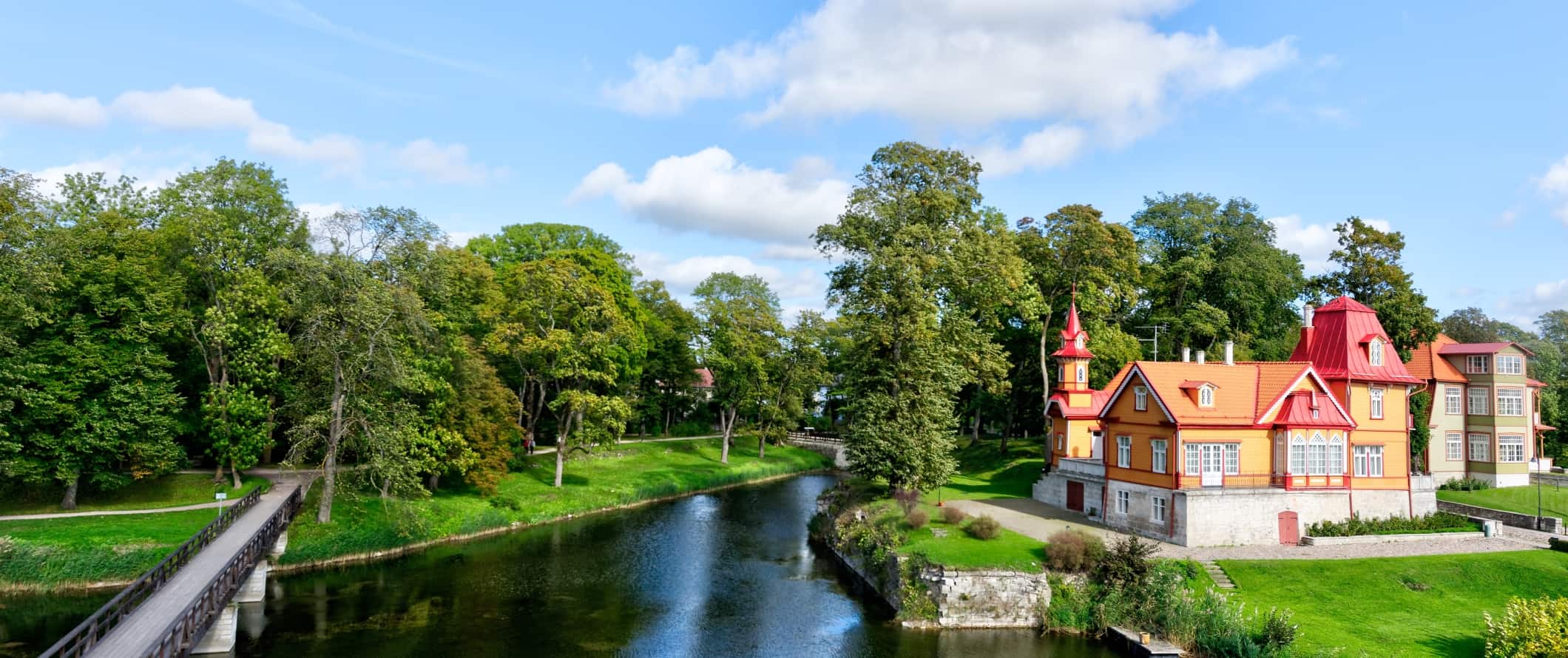
Accommodation – Hostel dorms start at 10 EUR per night for a bed in a 10-20 bed dorm. A smaller dorm with 6-8 beds costs 15 EUR per night. For a private room in a hostel, expect to pay at least 30 EUR per night. Free Wi-Fi is standard and most hostels have self-catering facilities. A few include free breakfast.
Budget hotels start at 40 EUR per night for a double or twin room that includes free breakfast and free Wi-Fi.
Airbnb is available around the country with private rooms starting at 20 EUR per night. For an entire home or apartment, expect to pay at least 35 EUR per night (though prices average double that).
For anyone traveling with a tent, Estonia is one of the best places in Europe for wild camping. Wild camping is permitted on government land (though some of the national parks do have restrictions). Here’s a list of the places you can wild camp in Estonia .
Food – Estonian food has a mix of influences from Russia, Germany, and Scandinavia. Dishes are commonly based around meat and potatoes as well as seasonal vegetables. Soups are a common main course as well. Pickled foods like beets, cucumbers, and fish, as well as rye bread and herring, make up the basis of much of the local cuisine. As in Scandinavia, open-faced sandwiches are a quick to-go snack. Verivorst and mulgikapsad (blood sausage and sauerkraut) are two of the most popular national dishes.
For an inexpensive meal at a café or restaurant, expect to pay between 6-13 EUR. A traditional sausage or stuffed pancake costs just under 3 EUR while fast food meals (think McDonald’s) cost around 7 EUR.
A multi-course meal at a restaurant with table service costs around 40 EUR, including a drink. Expect dishes like grilled salmon, lamb ribs, and roasted pork or duck. For something like Thai or Indian food (which is only really available in Tallinn and Tartu), expect to pay around 12-15 EUR for a meal.
Beer costs around 5 EUR. A latte/cappuccino is 3 EUR while bottled water is 1.50 EUR.
If you are planning to cook your own food, you can expect to spend around 30-40 EUR for a week’s worth of groceries. This includes basic staples like pasta, rice, seasonal produce, and some meat or fish.
Backpacking Estonia Suggested Budgets
On a backpacking budget of 35 EUR per day, you can stay in a hostel dorm, cook your meals, limit your drinking, take public transportation to get around, and do mostly free or cheap activities like free walking tours and visiting national parks. If you plan on drinking, add 5-10 EUR per day to your budget.
On a mid-range budget of 110 EUR per day, you can stay in a private hostel room or Airbnb, eat out at cheap restaurants serving traditional cuisine, drink more, take the occasional taxi to get around, and do more paid activities like museum visits or ski trips.
On a “luxury” budget of 225 EUR or more per day, you can stay in a hotel, eat out anywhere you want, drink as much as you want, rent a car to get around, and do more paid activities and guided tours. This is just the ground floor for luxury though. The sky is the limit!
You can use the chart below to get some idea of how much you need to budget daily, depending on your travel style. Keep in mind these are daily averages – some days you’ll spend more, some days you’ll spend less (you might spend less every day). We just want to give you a general idea of how to make your budget. Prices are in EUR.
Estonia Travel Guide: Money-Saving Tips
Estonia is a perfect destination for anyone on a budget. It’s not as cheap as it was years ago but there’s still a lot of value here — and still plenty of ways to reduce your costs! Here is how to save money during your visit:
- Take a free walking tour – Tallinn offers a handful of free walking tours which are great ways to get familiar with the city and the culture. Most hostels offer them and there are even some that have a special focus (such as the city’s Communist past). Just be sure to tip your guide at the end!
- Wild camp – If you really want to save money in Estonia, bring a tent. Wild camping is legal here so you can pitch your tent on public land throughout Estonia. Just make sure to pick up your trash when you’re done.
- Cook your own meals – Many hostels have kitchen facilities so you can cook your own meals. Buying your own groceries may not be as glamorous as going out to eat but it does save you money.
- Stay with a local – Staying with a local via Couchsurfing will get you a free place to stay while connecting you with a local who can share their insider tips and advice.
- Walk everywhere – All the major cities in Estonia are walkable so skip the public transportation if you want to save a few extra euros.
- Enjoy the free spaces – There are plenty of free parks as well as many free hiking trails around the country. If you’re on a tight budget, enjoy the outdoors.
- Bring a water bottle – The tap water in Estonia is safe to drink. Bring a reusable water bottle to avoid having to buy single-use plastic. LifeStraw is my go-to bottle as it has a built-in filter to ensure your water is always clean and safe.
Where to Stay in Estonia
Budget accommodation in Estonia is plentiful. Here are some of my favorite hostels in Estonia:
- Old Town Mukenof (Tallinn)
- Looming Hostel (Tartu)
- Hostel Louna (Parnu)
- Kalda Talu Puhkekeskus (Valga)
How to Get Around Estonia
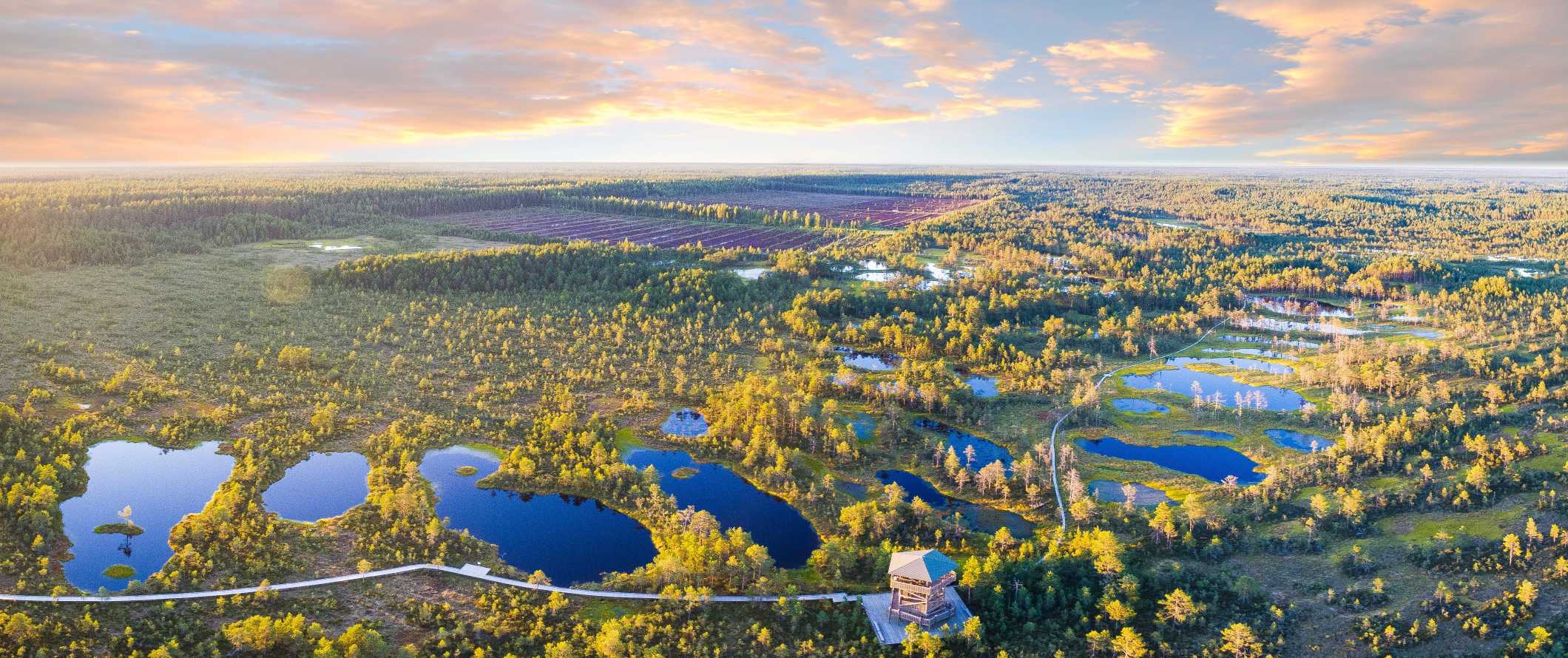
Public transportation – In most smaller towns and cities in Estonia, it’s possible to walk everywhere. However, in larger cities like Tallinn, you may want to use public transport to get around. In Tallinn, you can purchase QR-code tickets or load money onto a Smartcard (a pre-paid bus card). There is an extensive network of trams, trolleys, and buses that service the city and surrounding suburbs.
Public transportation prices vary by city but expect to pay around 1.50 EUR for a standard 1-hour adult ticket.
Train – The trains in Estonia are reliable, cheap, and fast. Many even have free Wi-Fi. You can take an express train to Tartu from Tallinn in just two hours for 8-12 EUR each way. The two-hour journey from Tallinn to Viljandi is 10-12 EUR while the seven-hour train ride from Tallinn to Riga, Latvia starts at just 15 EUR.
Bus – Many people favor train travel over bus travel in Estonia because the prices are similar and, in many cases, the trains are faster. However, there are more scheduled buses per day than trains so the bus might better fit your schedule.
Buses start at just 5 EUR. To get from Tallinn to Tartu takes 2.5 hours (just 30 minutes longer than the train) and costs around 10 EUR. The bus from Tallinn to Saaremaa Island takes around 4 hours and costs 11 EUR while the journey from Tallinn to Viljandi takes just over 2 hours and costs 9 EUR. Expect to pay around 16 EUR for the 5.5-hour bus to Riga, Latvia.
To find bus routes and prices, use BusBud .
Flying – Although there are domestic flights within Estonia, they’re prohibitively expensive and won’t save you any time as a high-speed train is almost as fast when you include check-in time. Skip flying.
Car rental – Car rentals cost as little as 28 EUR per day. You need an International Driving Permit (IDP) in order to rent a car here. For the best car rental prices, use Discover Cars .
When to Go to Estonia
The summer months of June-August are the busiest of the year (though busy in Estonia is far less busy than cities in Western Europe). During this time, the days are longer and the temperatures hover around 20°C (68°F). Almost all of Estonia’s festivals are held during these months.
To beat the crowds, visit between April-May or September-October. During these months, the temperatures are cooler, making it the perfect time to get outdoors and camp or hike. Plus, the peak tourist season is over so the crowds are thinner and things are a little cheaper.
During the winter, temperatures plummet and the country is blanketed in snow. Visiting Estonia during the winter can be a magical experience if you are interested in skiing or Christmas markets. Be warned though — temperatures can drop to -10°C (15°F).
How to Stay Safe in Estonia
Estonia is a safe country with a low crime rate. Within Tallinn, petty theft (including pickpocketing) is possible in the heavily-touristed areas, as well as on crowded public transportation and in busy bars/clubs. Keep your valuables out of sight and watch out for people (especially younger children) trying to distract you.
Solo female travelers should generally feel safe here, however, the standard precautions apply (never leave your drink unattended at the bar, never walk home alone intoxicated, etc.).
If you’re heading out to enjoy Tallinn’s famous nightlife, leave your valuables at home. Avoid walking alone at night and stick to the main roads. Muggings are rare, but they can occur. Travel in pairs or groups if possible and avoid walking alone at night if intoxicated, just to be safe.
One thing to be aware of is that reflectors are required by law to be worn by pedestrians at night. You can pick them up in most supermarkets cheaply and you just need to attach one to your jacket or bag when out after dark.
Scams here are rare but you can read about common travel scams to avoid here.
If you do experience an emergency, dial 112 for assistance.
The most important piece of advice I can offer is to purchase good travel insurance. Travel insurance protects you against illness, injury, theft, and cancellations. It’s comprehensive protection in case anything goes wrong. I never go on a trip without it as I’ve had to use it many times in the past. You can use the widget below to find the policy right for you:
Estonia Travel Guide: The Best Booking Resources
These are my favorite companies to use when I travel. They consistently have the best deals, offer world-class customer service and great value, and overall, are better than their competitors. They are the companies I use the most and are always the starting point in my search for travel deals.
- Skyscanner – Skyscanner is my favorite flight search engine. They search small websites and budget airlines that larger search sites tend to miss. They are hands down the number one place to start.
- Hostelworld – This is the best hostel accommodation site out there with the largest inventory, best search interface, and widest availability.
- Booking.com – The best all around booking site that constantly provides the cheapest and lowest rates. They have the widest selection of budget accommodation. In all my tests, they’ve always had the cheapest rates out of all the booking websites.
- HostelPass – This new card gives you up to 20% off hostels throughout Europe. It’s a great way to save money. They’re constantly adding new hostels too. I’ve always wanted something like this and glad it finallt exists.
- Get Your Guide – Get Your Guide is a huge online marketplace for tours and excursions. They have tons of tour options available in cities all around the world, including everything from cooking classes, walking tours, street art lessons, and more!
- The Man in Seat 61 – This website is the ultimate guide to train travel anywhere in the world. They have the most comprehensive information on routes, times, prices, and train conditions. If you are planning a long train journey or some epic train trip, consult this site.
- Rome2Rio – This website allows you to see how to get from point A to point B the best and cheapest way possible. It will give you all the bus, train, plane, or boat routes that can get you there as well as how much they cost.
- FlixBus – Flixbus has routes between 20 European countries with prices starting as low 5 EUR! Their buses include WiFi, electrical outlets, a free checked bag.
- SafetyWing – Safety Wing offers convenient and affordable plans tailored to digital nomads and long-term travelers. They have cheap monthly plans, great customer service, and an easy-to-use claims process that makes it perfect for those on the road.
- LifeStraw – My go-to company for reusable water bottles with built-in filters so you can ensure your drinking water is always clean and safe.
- Unbound Merino – They make lightweight, durable, easy-to-clean travel clothing.
- Top Travel Credit Cards – Points are the best way to cut down travel expenses. Here’s my favorite point earning credit cards so you can get free travel!
Estonia Travel Guide: Related Articles
Want more info? Check out all the articles I’ve written on Europe travel and continue planning your trip:

The 7 Best Hotels in London

10 Scotland Road Trip Tips You Need to Know Before You Go

The Perfect 7-Day Croatia Itinerary

The 6 Best Hotels in Copenhagen

The 6 Best Hotels in Florence

The 7 Best Hotels in Madrid
Get your free travel starter kit.
Enter your email and get planning cheatsheets including a step by step checklist, packing list, tips cheat sheet, and more so you can plan like a pro!

- Where To Stay
- Transportation
- Booking Resources
- Related Blogs

TOP OF PAGE
Quick Facts
Best Time To Go
Cost & Spending
Travel Tips
Regions & Highlights
What To See & Do
What To Eat
Where To Stay
Trip Planning

Welcome traveler!
We're Andre & Lisa, adventurers and experienced budget travelers.
We have over two decades of travel experience and since 2018 have led a full-time nomadic lifestyle.
L earn more about us !
Thank you for visiting and we hope you find value in our destination pages! We thoroughly research and curate all content ourselves and everything you find on this site is put together by only the two of us.

ESTONIA TRAVEL GUIDE
Estonia is a Baltic gem offering visitors the chance to see a tiny dynamic land on the shores of the Baltic Sea. Glorious beaches pepper the extensive coastline, although the swimming season is short.
One of the few countries to have emerged out of the Soviet set-up and learned quickly to pull its own weight, Estonia is, without doubt, the showcase story. In the early part of the last decade, the country got its first taste of independence – sweet and bitter though it was – the euphoria of freedom foiled by long lines to get rations and fuel - in addition to skyrocketing inflation. Today Estonia is catching up with the rest of Europe but is luckily still affordable for the budget traveller.
If you are fascinated by the thought of blood sausages on your dinner plate, love crisp sea breezes and lush forests, are adventurous enough to go bog walking, and willing to try a syrupy liquor of dubious distillation, Estonia is waiting for you.
- Capital: Tallinn
- Currency: Euro
- Area: total: 45,227 km²
- Population: 1,329 million (2020)
- Language: Estonian (official)
- Electricity: 230V/50Hz (European plug)
- 4 February, Independence Day (1918)
- 1 May, Spring Day
- 23 June, Victory Day
- 24 June, St. John’s Day
- 20 August, Restoration of Independence (1991)
- 26 December, 2nd Day of Christmas
Holidays falling on a weekend are not moved. Business openings and work schedules may be significantly affected by Christian holidays.
One of the most significant events in the Estonian calendar is the Tallinn Music Week , which transforms the capital into a bustling hub of musical talent and creativity. This festival showcases a wide range of genres, from classical to contemporary, and features both local and international artists.
For those with a penchant for folk music, the Viljandi Folk Music Festival is a must-visit. Set against the backdrop of the picturesque Viljandi Castle ruins, this event is a celebration of traditional music and dance, attracting performers and audiences from around the globe.
The Juu Jaab Festival on the serene island of Muhu is another highlight, especially for jazz enthusiasts. This festival has been a staple for over two decades, offering a unique blend of music performances in a natural setting.
The Saaremaa Opera Day s bring the grandeur of opera to the island of Saaremaa, featuring performances by renowned opera companies and soloists. It's an event that combines cultural sophistication with the island's tranquil beauty.
Lastly, the Tallinn Black Nights Film Festival is a haven for film buffs. As one of the largest film festivals in Northern Europe, it presents a vast selection of international cinema, fostering a cultural exchange and celebrating the art of filmmaking.
DO YOU NEED A VISA FOR
<<VISA RESULT>>
<< Visa Details >>
For the latest requirements or for application click
Let iVisa take the pain out of travel planning and assist you with Electronic visas, Travel Authorizations, Visas on Arrival, and even Paper Visas. They can also help with Health Declarations and Embassy Registrations. If you're from the US, they provide a One-Stop Shop to renew your Passport securely and error-free.
POSTS ON ESTONIA

SEASONS AT A GLANCE
Most destinations have different times of the year when they’re more or less popular with tourists.
Peak Season
Shoulder Season
Off Peak Season

BEST TIME TO VISIT ESTONIA
The best time to visit the Baltic States is late spring or summer when there’s usually enough fine weather to allow you to stroll around the cities and make significant forays into the great outdoors. On the whole, though, the only thing that’s predictable about the Baltic climate is the deep, dark winters – in all other seasons, the weather can be changeable in the extreme.
Summers are relatively short (roughly mid-June to late August), and although you may well experience a string of hot, dry days during this period, showers and chilly nights are equally likely. Remember to pack a waterproof jacket and warm sweater alongside your T-shirts.
Temperatures cool down rapidly from mid-September onwards, although autumn can be an extraordinarily beautiful season in which to visit, with the golden brown leaves of deciduous trees contrasting with the dark-green pines.
The first snowfalls can come as early as mid-November and by early to mid-December winter sets in with a vengeance. Average daytime temperatures can remain below zero right through until March, plummeting to minus 15–20°C in particularly cold spells. Winter can of course be a magical time, with lakes, rivers, and large expanses of the Baltic Sea freezing over, and crunchy snow cover adding an air of enchantment to medieval city centers.
Even when the spring thaw sets in, the countryside can remain grey and barren until well into April (or even May in northern Estonia), when a sudden explosion of colour transforms the landscape. The countryside takes on a green lushness, drawing cattle and horses out from their winter barns, while city-dwellers indulge in a frenzied stampede for the pavement cafés.
April & May - See the country shake off winter’s gloom.
June to August - White nights, beach parties, and loads of summer festivals.
December - Christmas markets, mulled wine, and long, cozy nights.
BEST TIME FOR:
The best time for outdoor activities in Estonia is from May to October.
Estonia offers a variety of hiking trails that cater to different levels of experience and accessibility needs. The Viru Bog trail in Lahemaa National Park is a popular choice, featuring a boardwalk and an observation tower, and is accessible to wheelchair users and strollers.
For a more unique experience, the Mukri Bog allows for bog-shoeing and has a viewing tower to take in the vast landscape. Additionally, the Meenikunno trail offers a serene walk through a beautiful bog area, complete with cabins and another observation tower for nature enthusiasts.
Estonia has some beautiful beaches with their short summer beach season stretching from the beginning of June to the end of August. Pärnu Beach, known for its sandy shores and summer vibrancy, is a popular spot for sunbathers and swimmers.
For a more serene experience, the beaches within Lahemaa National Park provide a peaceful retreat with pure northern waters and natural surroundings.
The surf season in Estonia is anytime from September to May, with the best surfing conditions during the colder months of September to December.
Estonia may not be the first place that comes to mind for surfing, but it does offer unique opportunities for the sport. The country has a surprisingly long coastline with several spots that are suitable for surfing, especially near the capital, Tallinn. Locations like Stroomi Beach, Kakumäe Beach, and Vääna-Jõesuu Beach are known for their surf breaks, particularly during the wind swells of the colder months.
While the surfing conditions are not as consistent as more famous destinations, the Estonian surf scene is active and welcoming, with a number of surf schools and clubs providing lessons and equipment for enthusiasts.
Estonia can have good winds for both windsurfing and kitesurfing almost all year round, except when it's snowing! May to October are the best months.
The south coast and the Estonian Islands are known for their kitesurfing spots, with the season sometimes extending into April and November with the use of warm equipment.
Enthusiasts can find friendly locals, beautiful nature, and good conditions, although it's advisable to prepare for the cold with at least a 5/3mm wetsuit. For those looking to learn or improve their skills, there are several kitesurf schools and rental services available across the country.
For more details on kite surfing in Estonia expand this section!
LOOKING FOR ALTERNATIVES
To estonia, find your perfect destination.
Advanced, real-time destination filter by visa required, region, health risk, travel budget, country value, tourist seasons, best weather and activity or sport.
ESTONIA TRAVEL COSTS
Estonia is generally cheaper than Western Europe, but it is no longer the bargain it used to be in the 1990s; and in touristy areas (like Tallinn's Old Town), prices are at Scandinavian levels.
A bottle of local beer (0,5l) costs around 1€ in shops and 2,5-3,5€ in modest pubs. Hard liquor, especially vodka is cheap compared to Western standards, with a 0.5l bottle of local mid-range vodka going for around 10€ in supermarkets. Food prices are close to Western European standards, usually somewhat cheaper but with some being paradoxically more expensive and can even be closer to Finnish prices. Western goods like clothes and electronics are as expensive (or even more so) than in the actual West.
In general, Estonia tends to be more expensive than its Baltic neighbors (Latvia and Lithuania) but cheaper than Finland. It's also generally more expensive than Russia.
VALUE RANK:
Find discount flights to, travel tips for estonia.
Traveling to Estonia can be a delightful experience with its blend of medieval charm, natural beauty, and modern culture. Here are some travel tips for visiting Estonia:
Visit Tallinn : Start your journey in Tallinn, the capital city, known for its well-preserved medieval Old Town. Explore its cobblestone streets, historic buildings, and charming cafes.
Learn a Few Estonian Phrases : While many Estonians speak English, learning a few basic Estonian phrases like "Tere" (Hello) and "Aitäh" (Thank you) can go a long way in showing respect for the local culture.
Try Estonian Cuisine : Sample traditional Estonian dishes such as black bread, marinated herring, and elk soup. Don't forget to try the local specialty, marzipan, which has been made in Tallinn since the Middle Ages.
Explore Nature : Estonia is blessed with beautiful natural landscapes, including forests, lakes, and islands. Visit Lahemaa National Park or Soomaa National Park for hiking, birdwatching, and canoeing.
Experience Sauna Culture : Saunas are an important part of Estonian culture. Try to experience an authentic Estonian sauna, either in a spa or a traditional smoke sauna in the countryside.
Respect the Environment : Estonia takes pride in its clean and well-preserved natural environment. Be sure to respect nature by disposing of waste properly and following designated trails while hiking.
Travel Outside Tallinn : While Tallinn is the main attraction, consider exploring other parts of Estonia such as Tartu, the university town, or the islands of Saaremaa and Hiiumaa for a more relaxed atmosphere.
Pack Accordingly : Estonia experiences four distinct seasons, with cold winters and mild summers. Pack accordingly depending on the time of year you plan to visit, and don't forget to bring layers, especially if you're visiting in spring or autumn.
Use Public Transportation : Estonia has an efficient public transportation system, especially in Tallinn. Consider using buses or trams to get around the city, or rent a bike to explore on two wheels.
Respect Local Customs : Estonians are generally reserved but friendly people. Respect their personal space and avoid loud or disruptive behavior, especially in public places.
By keeping these tips in mind, you'll be well-prepared to enjoy all that Estonia has to offer during your travels.
PUBLIC TRANSPORT IN ESTONIA
Buses are a good option domestically, as they're more frequent than trains and cover many destinations not serviced by the limited rail network. TPilet ( www.tpilet.ee ) has schedules and prices for all services. For comfortable, low-cost bus travel you can also have a look at FlixBus who runs the largest bus network in Europe.
Trains are handy for getting between Tallinn and Tartu, but services to Pärnu are extremely limited. Check 12Go for the best variety of options.
REGIONS & HIGHLIGHTS OF ESTONIA
Estonia is a small but diverse country with several regions offering unique attractions and experiences. Here are some of the main regions worth visiting and their highlights:
Tallinn and Harju County
Tallinn : Explore the charming medieval Old Town with its cobblestone streets, historic buildings, and panoramic viewpoints from Toompea Hill. Don't miss landmarks like Toompea Castle, Alexander Nevsky Cathedral, and the Town Hall Square. This city has charm by the bucket load, fusing the modern and medieval to come up with a vibrant vibe all of its own. It’s an intoxicating mix of church spires, glass skyscrapers, baroque palaces, appealing eateries, brooding battlements, shiny shopping malls, run-down wooden houses, and cafes set on sunny squares – with a few Soviet throwbacks in the mix.
Kadriorg : Visit the elegant Kadriorg Palace and Park, home to the Estonian Art Museum, as well as other museums and monuments.
Pirita : Enjoy outdoor activities such as beach walks, sailing, and visiting the ruins of St. Bridget's Convent.
Tartu and Tartu County
Tartu : Experience the lively atmosphere of Estonia's second-largest city, known for its university, vibrant cultural scene, and historical sites like Tartu Cathedral and the Town Hall Square. Tartu was the cradle of Estonia’s 19th-century national revival and lays claim to being the nation's cultural capital. Locals talk about a special Tartu vaim (spirit), created by the time-stands-still feel of its wooden houses and stately buildings, and by the beauty of its parks and riverfront. It's also Estonia’s premier university town, with students making up nearly one-fifth of the population – guaranteeing a vibrant nightlife for a city of its size.
Tartu University Museum : Explore the history of the university, one of the oldest in Northern Europe.
Ahja River Valley : Discover picturesque landscapes, hiking trails, and the stunning Ahja Waterfall.
Pärnu and Pärnu County
Pärnu : Relax in Estonia's summer capital, famous for its sandy beaches, spa resorts, and lively promenade lined with cafes and restaurants. Local families, young party-goers, and German, Swedish and Finnish holidaymakers join together in a collective prayer for sunny weather while strolling the golden-sand beaches, sprawling parks, and picturesque historic center of Pärnu (pair-nu), Estonia's premier seaside resort. The main thoroughfare of the old town is Rüütli, lined with splendid buildings dating back to the 17th century.
Pärnu Beach : Enjoy sunbathing, swimming, and water sports on one of the best beaches in Estonia.
Pärnu Old Town : Wander through the historic center with its colorful wooden houses and charming streets.
Kuressaare : Explore the island's main town with its medieval castle, Kuressaare Episcopal Castle, which now houses a museum.
Kaali Meteorite Crater Field : Visit one of the most impressive meteorite craters in Europe, surrounded by myth and legend.
Angla Windmills : See the iconic windmills that are symbols of Saaremaa's rural heritage.
Kärdla : Discover the island's capital with its wooden architecture, museums, and cozy cafes.
Kõpu Lighthouse : Climb the oldest lighthouse in the Baltic States for breathtaking views of the surrounding landscape.
Sääretirp : Walk along the narrow isthmus connecting two parts of the island, offering scenic views of the sea on both sides.
Lahemaa National Park (Located in Harju and Lääne-Viru Counties)
Palmse Manor : Visit the beautifully restored manor house and gardens, representing Estonia's noble heritage.
Viru Bog : Explore the wooden boardwalks through the picturesque bog landscape, rich in flora and fauna.
Jägala Waterfall : Admire the highest natural waterfall in Estonia, surrounded by lush forest.
SUGGESTED ITINERARY FOR VISITING ESTONIA
For first-time visitors to Estonia, here's a suggested itinerary that covers the country's highlights and allows you to experience its rich history, vibrant culture, and stunning natural landscapes over the course of about 7-10 days:
Day 1: Arrival in Tallinn
Arrive in Tallinn, Estonia's capital city.
Check into your accommodation and take some time to rest.
In the evening, explore Tallinn's Old Town, stroll along its cobblestone streets, and admire its medieval architecture.
Enjoy dinner at a traditional Estonian restaurant.
Day 2: Tallinn Exploration
Visit Toompea Hill for panoramic views of the city and explore attractions such as Toompea Castle and Alexander Nevsky Cathedral.
Wander through Town Hall Square and visit the Town Hall and Town Hall Pharmacy Museum.
Explore Kadriorg Palace and Park, including the Kumu Art Museum.
Optional: Visit the Seaplane Harbour Museum to learn about Estonia's maritime history.
Day 3: Day Trip to Lahemaa National Park
Take a day trip to Lahemaa National Park, located about an hour's drive from Tallinn.
Explore the park's diverse landscapes, including forests, bogs, and coastal cliffs.
Visit Palmse Manor and Sagadi Manor to learn about Estonia's noble heritage.
Enjoy nature walks or guided hikes in the park.
Return to Tallinn in the evening.
Day 4: Travel to Tartu
Travel to Tartu, Estonia's second-largest city and a center of culture and education.
Explore the historic center, including Tartu Cathedral and Town Hall Square.
Visit Tartu University Museum and the quirky AHHAA Science Centre.
Enjoy dinner at one of Tartu's cozy cafes or restaurants.
Day 5: Tartu and Surroundings
Explore more of Tartu, including the Botanical Gardens and Toome Hill Park.
Visit the Estonian National Museum to learn about Estonian history and culture.
Take a day trip to the Ahja River Valley for hiking and nature exploration.
Return to Tartu for the evening.
Day 6: Travel to Pärnu
Travel to Pärnu, Estonia's summer capital, known for its sandy beaches and spa resorts.
Relax on Pärnu Beach and take a stroll along the promenade.
Visit the Pärnu Museum to learn about the city's history.
Enjoy dinner at a seaside restaurant overlooking the Gulf of Finland.
Day 7: Explore Saaremaa
Take a ferry to Saaremaa, Estonia's largest island.
Explore the charming town of Kuressaare and visit Kuressaare Castle.
Visit the Kaali Meteorite Crater Field and Angla Windmills.
Enjoy the island's peaceful atmosphere and scenic landscapes.
Return to Pärnu in the evening.
Day 8: Return to Tallinn
Travel back to Tallinn from Pärnu or Saaremaa.
Spend your last day in Tallinn exploring any remaining attractions or shopping for souvenirs.
Enjoy a farewell dinner at a restaurant in Tallinn's Old Town.
Day 9: Departure
Depending on your departure time, you may have some free time to explore Tallinn further or relax before heading to the airport.
Depart from Tallinn, concluding your trip to Estonia.
This itinerary provides a well-rounded introduction to Estonia, covering its major cities, historical sites, and natural attractions. Feel free to adjust it based on your interests and available time.
WHAT TO SEE AND DO IN ESTONIA
When visiting Estonia, there's a wealth of experiences awaiting you, ranging from exploring medieval towns to immersing yourself in pristine nature. Here are some of the best things to see and do in Estonia
Explore Tallinn's Old Town : Wander through the cobblestone streets of Tallinn's Old Town, a UNESCO World Heritage site, and admire its well-preserved medieval architecture, including Toompea Castle, Alexander Nevsky Cathedral, and Town Hall Square.
Visit Kadriorg Palace and Park : Explore the elegant Kadriorg Palace, built by Peter the Great, and stroll through the beautiful park, which houses several museums, including the Kumu Art Museum.
Experience Estonian Sauna Culture : Relax and rejuvenate in an authentic Estonian sauna experience. Whether in a modern spa or a traditional smoke sauna in the countryside, saunas are an integral part of Estonian culture.
Discover Lahemaa National Park : Explore Estonia's largest national park, Lahemaa, known for its diverse landscapes, including forests, bogs, coastal cliffs, and historic manor houses.
Relax in Pärnu : Enjoy the sandy beaches and spa resorts of Pärnu, Estonia's summer capital. Take leisurely walks along the promenade, indulge in spa treatments, and soak up the sun.
Visit Tartu : Explore the vibrant university town of Tartu, known for its intellectual atmosphere, historical sites, and lively cultural scene. Don't miss attractions like Tartu University Museum and the quirky AHHAA Science Centre.
Experience Island Life : Take a ferry to the picturesque islands of Saaremaa and Hiiumaa. Explore their charming towns, visit historic sites like Kuressaare Castle, and enjoy the tranquility of the island landscapes.
Hike in Soomaa National Park : Venture into the "land of bogs" and experience the unique wilderness of Soomaa National Park. Join guided bog walks, canoe through flooded forests during the spring, and immerse yourself in nature.
Try Estonian Cuisine : Sample traditional Estonian dishes such as black bread, smoked fish, and hearty soups. Don't forget to indulge in local specialties like marzipan and Vana Tallinn liqueur.
Attend Festivals and Events : Experience Estonia's vibrant cultural scene by attending festivals and events throughout the year, such as the Tallinn Music Week, Viljandi Folk Music Festival, and Christmas markets in Tallinn's Old Town.
When visiting Estonia, there's a wealth of experiences awaiting you, ranging from exploring medieval towns to immersing yourself in pristine nature. Here are some of the best things to see and do in Estonia:
Explore Tallinn's Old Town : Wander through the cobblestone streets of Tallinn's Old Town, a UNESCO World Heritage site, and admire its well-preserved medieval architecture, including Toompea Castle, Alexander Nevsky Cathedral, and Town Hall Square.
Discover Lahemaa National Park : Explore Estonia's largest national park, Lahemaa, known for its diverse landscapes, including forests, bogs, coastal cliffs, and historic manor houses.
Relax in Pärnu : Enjoy the sandy beaches and spa resorts of Pärnu, Estonia's summer capital. Take leisurely walks along the promenade, indulge in spa treatments, and soak up the sun.
Visit Tartu : Explore the vibrant university town of Tartu, known for its intellectual atmosphere, historical sites, and lively cultural scene. Don't miss attractions like Tartu University Museum and the quirky AHHAA Science Centre.
Hike in Soomaa National Park : Venture into the "land of bogs" and experience the unique wilderness of Soomaa National Park. Join guided bog walks, canoe through flooded forests during the spring, and immerse yourself in nature.
Try Estonian Cuisine : Sample traditional Estonian dishes such as black bread, smoked fish, and hearty soups. Don't forget to indulge in local specialties like marzipan and Vana Tallinn liqueur.
Attend Festivals and Events : Experience Estonia's vibrant cultural scene by attending festivals and events throughout the year, such as the Tallinn Music Week, Viljandi Folk Music Festival, and Christmas markets in Tallinn's Old Town.

WHAT TO EAT IN ESTONIA
Estonian gastronomy mixes Nordic, Russian and German influences, and prizes local and seasonal produce. The closest thing to a national dish is verivorst , black pudding, served with mulgikapsad , which is basically sauerkraut stew.
Pork and potatoes -The traditional stodgy standbys, prepared a hundred different ways.
Other favourites - Black bread, sauerkraut, black pudding, smoked meat and fish, creamy salted butter and sour cream, which is served with almost everything.
Desserts - On the sweet side, you'll find delicious chocolates, marzipan and cakes.
Seasonal In summer - Berries enter the menu in both sweet and savoury dishes, while everyone goes crazy for forest mushrooms in the autumn.
Favourite drinks - Õlu (beer) is the favourite alcoholic drink. Popular brands include Saku and A Le Coq, and aficionados should seek out the product of the local microbreweries such as Tallinn's Põhjala. Other tipples include vodka (Viru Valge and Saremaa are the best-known local brands) and Vana Tallinn, a syrupy sweet liqueur, also available in a cream version.
LGBTQ IN ESTONIA
I'm a paragraph. I'm connected to your collection through a dataset.

WHERE TO STAY IN ESTONIA
For a first-time visit to Estonia, choosing the right base is crucial to explore the country's diverse attractions efficiently. Here are some suggestions for different regions and cities along with accommodation options:
Where to stay in Tallinn:
Tallinn, the capital city, is renowned for its well-preserved medieval old town and vibrant cultural scene.
Budget : 16eur Old Town Munkenhof : Situated near Tallinn's Town Hall Square, 16eur Old Town Munkenhof offers affordable accommodations in a convenient location. Guests can stay in simple yet comfortable rooms and enjoy easy access to the city's attractions.
Mid-range : Hotel Palace Tallinn : Located in the city center, Hotel Palace Tallinn offers mid-range accommodations with elegant decor and modern amenities. Guests can enjoy spacious rooms, a fitness center, sauna, and on-site dining options.
Luxury : Swissotel Tallinn : This luxury hotel is located in Tallinn's tallest building, offering stunning views of the Old Town and Baltic Sea. Swissotel Tallinn features luxurious rooms and suites, a rooftop bar, spa, fitness center, and on-site dining options.
Best value tip: Visit during the shoulder seasons (spring and autumn) to find better deals on accommodation.
Where to stay in Tartu:
Tartu, Estonia's second-largest city, is famous for its university town vibe, historical sites, and green spaces.
Budget : Hektor Design Hostel : Located near the city center, Hektor Design Hostel offers budget-friendly accommodations in a stylish and modern setting. Guests appreciate its clean rooms, friendly atmosphere, and on-site facilities such as a sauna and bicycle rental.
Mid-range : Dorpat Hotel & Convention Centre : Situated on the banks of the Emajõgi River, this hotel offers mid-range accommodations with scenic views. Guests can enjoy spacious rooms, a sauna, fitness center, and on-site dining options.
Luxury : Hotel Antonius : Situated in a 16th-century building in Tartu's Old Town, Hotel Antonius offers luxurious accommodations with a blend of historic charm and modern amenities. Guests can enjoy beautifully decorated rooms, a gourmet restaurant, and a cozy courtyard garden.
Best value tip: Look for accommodation deals during weekdays rather than weekends for better rates.
Where to stay in Pärnu:
Pärnu is a charming coastal town known for its sandy beaches, spa resorts, and relaxed atmosphere.
Budget : Hostel Louna : Situated in the heart of Pärnu, Hostel Louna offers budget-friendly accommodations within walking distance of the beach and other attractions. Guests appreciate its clean rooms, friendly staff, and communal kitchen facilities.
Mid-range : Hotel Victoria : Situated near the beach and Pärnu's main promenade, Hotel Victoria offers mid-range accommodations with modern amenities. Guests appreciate its central location, comfortable rooms, and friendly service.
Luxury : Hedon Spa & Hotel : Located on the beachfront, Hedon Spa & Hotel offers luxury accommodations with panoramic views of the sea. Guests can indulge in spacious rooms and suites, relax at the spa, dine at the gourmet restaurant, and enjoy beachfront access.
Best value tip: Consider visiting during the offseason (late spring or early autumn) to find better deals on accommodation and enjoy a quieter atmosphere.
For hassle-free bookings, use platforms like Booking.com for competitive rates or Holiday Swap for unique homes worldwide. Ensure to book in advance, especially during peak seasons, and align your preferences with nearby activities such as surfing, snorkeling, or cultural exploration.
CHOOSE ANOTHER DESTINATION
Recent blog posts, plan your trip, visa services, let ivisa take the pain out of travel planning and assist you with electronic visas, travel authorizations, visas on arrival, and even paper visas. they can also help with health declarations and embassy registrations. if you're from the us, they also provide a one-stop shop to renew your passport securely and error-free..
FLIGHTS Find a cheap flight by using Sky scanner or Momondo . These are our favorite flight search engines. They index other travel websites and airlines across the globe to easily find you the best deal.
ACCOMMODATION
Booking.com is our number one resource for researching and booking accommodation. In addition to Booking.com , we have found Agoda.com to consistently returns the cheapest rates in Southeast Asia. For longer stays, find unique homes worldwide on Holiday Swap , the most affordable travel platform that allows you to book homes anytime, anywhere in only a few clicks.
TRANSPORT
DiscoverCars.com is a leader in online car rental bookings; we compare car rental deals from many companies so that you can choose which is best for your trip. 12Go connects the world door-to-door, from transfers to flights, under the same user-friendly ticket.
INSURANCE Travel insurance can protect you against unexpecte d illness, injury, theft, and cancellations.
Heymondo (International Travel Insurance)
World Nomads (Travel / medical insurance for long-term travelers and nomads)
SafetyWing Nomad Insurance (Travel / medical insurance for long-term travelers and nomads)
SafetyWing Remote Health (Global Health Insurance for Nomads)
Need more help to book your trip? Check our complete resource page for all the best companies to use when you travel. You will only find the companies we use ourselves.
Please note that some of the links above may be affiliate links, and at no additional cost to you,
we may earn a commission if you end up making a purchase and the income goes to keeping the site ad free.

- How much does it cost to explore Estonia?
This article may contain links to products and services we use and recommend. We may receive compensation when you click on links to those products. For more information, see our Disclosure Policy .
Download your Sustainable Travel Checklist and show the world you care
Travel cost assumptions, what is the currency of estonia, map of accommodation, points of interest, eateries and transport, recommended movies to provide inspiration for your next trip, accommodation, groceries and dining, experiences, miscellaneous, how much does it cost to explore the baltics, travel costs summary table, download our comprehensive travel risk register, how much did it cost you to explore estonia, author: paul ryken.
Estonia is one of 51 countries that receive more tourists each year than its total population, and it is not surprising why. Tourism in Estonia is recognised as a major source of employment, and a significant contributor to Estonia ’s economic growth.
While we (coming from New Zealand and Germany, respectively) are not the Estonian Tourist Board ’s priority market, as independent travellers, we represent a growth market they are targeting with the National Tourism Development Plan that commenced in 2020.
So what did we get up to, and more importantly, how much did it cost to explore the Republic of Estonia ?
Our daily expenses in Estonia were EUR47.30 / USD52.85 per person per day, which means, we went a bit over our budget of USD50.00. We spent a total of eight days in Estonia – two nights in Tartu , three nights in Tallinn and three nights on Saaremaa Island.
As travellers, we should all be aware of our travel behaviour and its environmental, economic and social impact; and make conscious decisions about it. Too often, we hear negative stories in the media about tourists behaving badly.
Here is your chance to tick some boxes and check out what it really takes to travel with a sustainable mindset.
The fine print: I agree to receive the Minimalist Journeys newsletter full of news, actionable tips and practical advice every month. I know I can unsubscribe at any time. I have read and agree to the Terms of Use and Privacy Policy .
When reading this article, please keep the following in mind:
- Our travel costs are based upon a couple travelling together.
- We are independent travellers, researching and organising our own itinerary using our go-to travel planning tools .
- Accommodation: We usually stay in self-catered accommodation (homestays, locally owned guesthouses, hostels and short-term rentals) - in our own room with (preferably) our own bathroom, though the kitchen may be shared.
- Dining and Groceries: We have at least two meals a day at home . We like to eat out once a day to every few days (and prefer locally owned restaurants and small eateries away from the tourist hotspots).
- Transportation: We walk a lot, and wherever possible, we travel by public transport . Only occasionally do we hire a vehicle.
- Experiences: Many of the activities we do are free of charge or cost very little. When we pay for attractions or activities , we are selective as our funds are limited (just like everyone elses).
- In addition to above expense categories, we include in our total daily costs our mail scanning and forwarding service , mobile phone plans and travel insurance - though only for the period we are in the country.
- We use a multi-currency personal account with Wise to manage our currencies XE to transfer money as required.
- Not included are the costs for entry or exit transportation into/out of the country.

The currency in Estonia is the Euro and has been since 01 January 2011. It was the first of the three Baltic states to adopt the Euro, before Lithuania and Latvia .
Below is a map of the recommended accommodation, points of interest, eateries and transport terminals/stops mentioned in this article.
If you're looking for some travel inspiration, why not turn to the big screen? Movies have the power to transport us to different places, sparking our wanderlust and making us dream of new adventures. And with 80+ films to choose from, covering classics and hidden gems all around the world, you will be planning your next adventure in no time.
As we did in Lithuania and Latvia , we sourced our accommodation through short-term rentals , renting a room in our host’s home or small apartments. Staying in residential neighbourhoods close to public transport allows us to stay within our accommodation budget while not compromising on certain comforts, such as our own bathroom and a kitchen where we can prepare meals, therefore reducing dining costs.
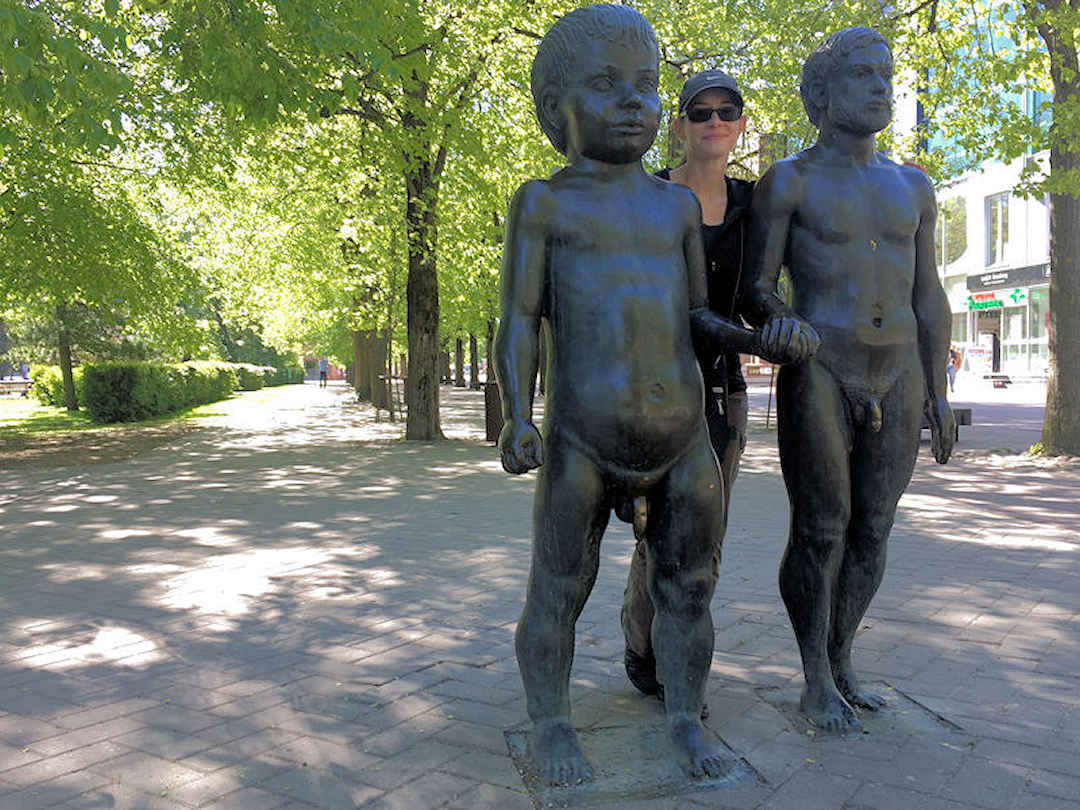
Tartu , a university town in the south-east of Estonia , was not only packed with history but also some interesting art works
How to save money on accommodation
For accommodation, as with any other travel expenses, it’s worth shopping around. When we book accommodation somewhere, we tend to look across a number of booking platforms to find the best value for money option. Wherever you book, do make sure you read the fine print to make sure you compare apples with apples. For example, your stay may incur extra charges (like local tourist taxes or cleaning fees). Some booking platforms include them, while with others, you have to pay them to your host upon arrival.
Nightly rates are generally cheaper outside of peak season. If you can only travel in peak season, look for accommodation options that are a little further away from the main tourist attractions, yet have good connections by public transport.
We use and recommend the following booking platforms.

Taking the bus between Tallinn and Kuressaare includes a ferry crossing between mainland Europe and the island of Muhu
How to save money on transportation
Being flexible is what really pays when it comes to transportation and air travel in particular. Travel outside of peak season if you can. If you can't, fares might still be cheaper during certain times of the week and even hours of the day, so check websites like Skyscanner and Google Flights that allow you to see a whole month and all the options on any given date.
If there are several airports in the vicinity of your home (or in the vicinity of your destination) compare the prices between the different options. For example, flying to Mykonos and taking the ferry to Santorini might end up being way cheaper than flying from your home airport straight to Santorini .
We use and recommend the following online travel agents and service providers for our transportation needs:
To find good flight deals, we use one-stop travel sites or travel aggregators. Each shows the cheapest airfares on any given day, so you can choose to fly a day/week/month earlier or later, pending your flexibility.
If you find a good deal, book it there and then as prices change constantly. Ideally do your research with your browser in incognito mode, as cookies will show booking sites how keen you are to do a certain trip, which may affect the price quoted – that goes for all online travel bookings (not just flights). The best fares generally go first, so planning ahead is important when it comes to (air) transportation. The same is true if you want to use air points/miles, as there is only a very limited number of seats available for any given flight. We tend to not actually go through the flight aggregators, but book with the airline/s directly . The price is usually the same but we have a direct contract with the airline (rather than with the middleman) in case something goes wrong.
If you plan to travel across multiple continents, you may want to compare passes that offer several destinations as a package (such as around-the-world fares offered by One World or Star Alliance members) vs booking each leg of your trip individually. If you are travelling during peak season those multi-destination packages may be a better deal than booking each leg individually. You can do overland sections on around-the-world tickets too, which means you could supplement your around-the-world ticket with cheap flights, bus and train rides in between destinations.
Vehicle rental (including relocations)
Unless your trip takes you across oceans, another way to save on transport is to look for vehicle/motorhome relocations . There are websites in many countries offering massively discounted one-way rates (often including fuel and/or insurance) to those driving a vehicle/motorhome from A to B within a certain period. These deals are fairly last minute, and A and B are usually bigger transport hubs, but if that’s an option just search for vehicle/motorhome relocation at your destination.
Speaking of vehicles: If you are planning to hire a vehicle at your destination, it also pays to shop around. We use and recommend Discover Cars , an aggregator website that allows you to search across major car rental companies at once. And you don’t have to pay for the hire until you pick up the car.
Hitchhiking
A final option to save on transport costs is… to hitch a ride. While Paul and I did it safely in Dominica on a public holiday (when there was no other option), and we have taken plenty of people along in our campervan in New Zealand , there are many countries we wouldn’t feel safe hitchhiking. Judge for yourself where and when you can and can’t do it.
By the time we arrived in Estonia , we thought we’d tried all the different Baltic cuisines available. We were wrong and pleased to once again extend our culinary experiences.
As usual, we ate a hot lunch while out and about and a cold dinner of local cheeses, meats and bread in the evening. On average, our daily lunch cost us EUR9.54 per person.
In Tartu , our favourite cafe was Kohvik Crepp , a French cafe serving large portions at very reasonable prices. Choose any galette (savoury pancake served with a small salad) and you won’t be disappointed. Two meals and two drinks cost us EUR18.00.
Despite being in the touristy area of Tallinn , Von Krahli AED was a great choice on our first day in the capital. Our meals were delicious and worth every cent of our total cost of EUR37.40 (including two drinks).
How to save money on dining and groceries?
Dining out all the time can quickly get expensive. We always try and book accommodation where we have access to a kitchen - either our own little kitchenette or the kitchen of our host. That way, we can store food in the fridge and make our own meals. We usually have breakfast and one other meal at our accommodation, and one meal when we're out and about.
Restaurants (even in tourist hotspots) often have special lunch offers (for example, a three-course meal for EUR10). Portion sizes in many parts of the world are usually quite substantial, so we often share a three-course meal. The same applies if you go out for dinner: Order a starter or salad and a main, and that's usually enough for two people. An added benefit: there is less food waste.
As for groceries: every country has more expensive and cheaper supermarkets. Ask your host what the cheaper options are (for example, Aldi or Lidl in many European countries) and avoid convenience stores as much as possible.
Experiencing the local cuisine is one of the reasons why WE travel… Paul and I tend to only eat out once a day (sometimes only once a week), usually at lunchtime. This allows us to try local dishes while taking advantage of awesome lunch deals. It also means we don’t have to roam around unknown parts of town every night in search of a restaurant.
Tartu is easily walkable. So, one Spring morning, we decided to do our own self-guided walking tour, using the guide map called Strolls in Tartu . Because it was self-guided, we were able to do it at our own pace, stopping longer at some sites and skipping sections we were less interested in. We walked around Tartu Old Town and up to Toome Hill Park as well as through the University of Tartu Botanical Gardens. Absolutely FREE.
I have an affinity for sports history and knowing that the Estonian Sports and Olympic Museum was in Tartu , it deserved a visit. Did I know any famous Estonian sportspeople before I visited the museum? No. Did I know what the national sport of Estonia was? No. But that’s why you go to museums. To learn, to take it all in, and hopefully, you walk away more knowledgeable. For EUR6 and two hours of my time, I learned a lot about the history of Estonian sports – from the very first sportsmen, through the twentieth century until the Soviet occupation and today.
Oh, and depending on who you talk to, the national sport is basketball or ice hockey. Or is it kiiking ?
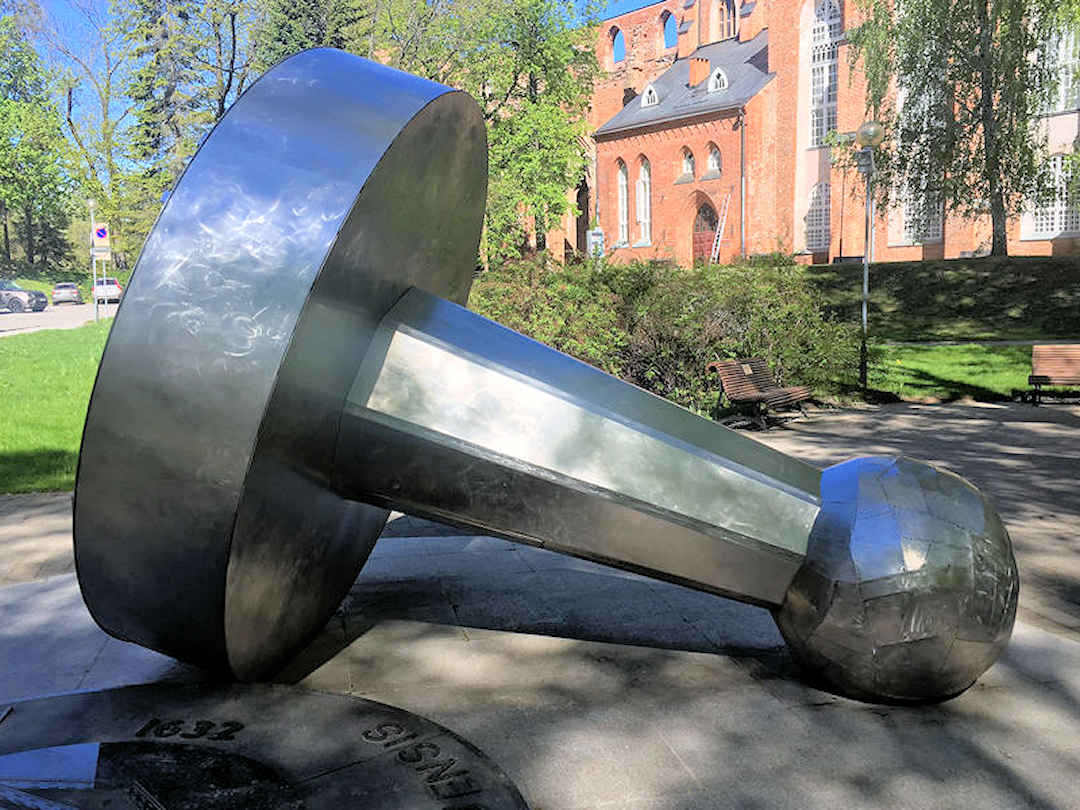
The self-guided walking tour in Tartu takes you past important sites of one of the oldest universities in Europe
We did, and certainly recommend, the Free Walking Tours (wherever they exist). Heli – our guide in Tallinn was enthusiastic, extremely knowledgeable and able to deliver the tales of the old city with humour and a little bit of gusto. She was not scared to embellish some history to get a point across but then reminded us of the reason Estonians are such proud but diverse people.
We normally miss out on free events as we travel from city to city, but this time, we were fortunate. The biggest museum event of the year was happening while we were in Tallinn ! Once a year, museums and heritage sites in Estonia open their doors longer than usual (until 2300h) and free of charge. So how many museum visits could we fit into one evening? – Here’s your chance to find out.
We started with a 30-minute concert at the Cathedral of St Mary the Virgin before I climbed the church tower for a spectacular view of the city. Next, we headed to the Museum of the Popular Front (No longer open) to get an in-depth understanding of Estonia ’s struggle for independence in the early 1990s. Our final stop was for the rooftop views from the National Library of Estonia . All this for free.
On another day, we went to the Estonian Maritime Museum , located in a building originally constructed as a hangar for seaplanes over 100 years ago. The maritime museum has only been open for seven years and caters for young and old. The main attraction inside the museum is the 1936 submarine Lembit. Unlike a lot of retired submarines I have visited, this one retains a lot of the mechanical and functioning components. The ticket was a bit too expensive for what it was, at EUR15 per adult.
While there are buses on Saaremaa Island, they are infrequent. So, to see the historic, cultural and natural highlights of the island, you do need a vehicle. We hired a car for 24 hours for that purpose and visited:
- the Kaali Meteorite Craters – a group of nine craters that were created by a meteorite shower
- Panga Cliff – one of the few sea cliffs on an otherwise flat island; and
- Angla Windmill Park (entry fee of EUR4 per adult).
Since we stayed in the town of Kuressaare , we were able to walk to the Kuressaare Castle – an eclectic museum representing different periods of Estonian history . Well worth the visit, but make sure you ask for a map to help guide you through the collection in chronological order. The entry fee was EUR8 per adult.
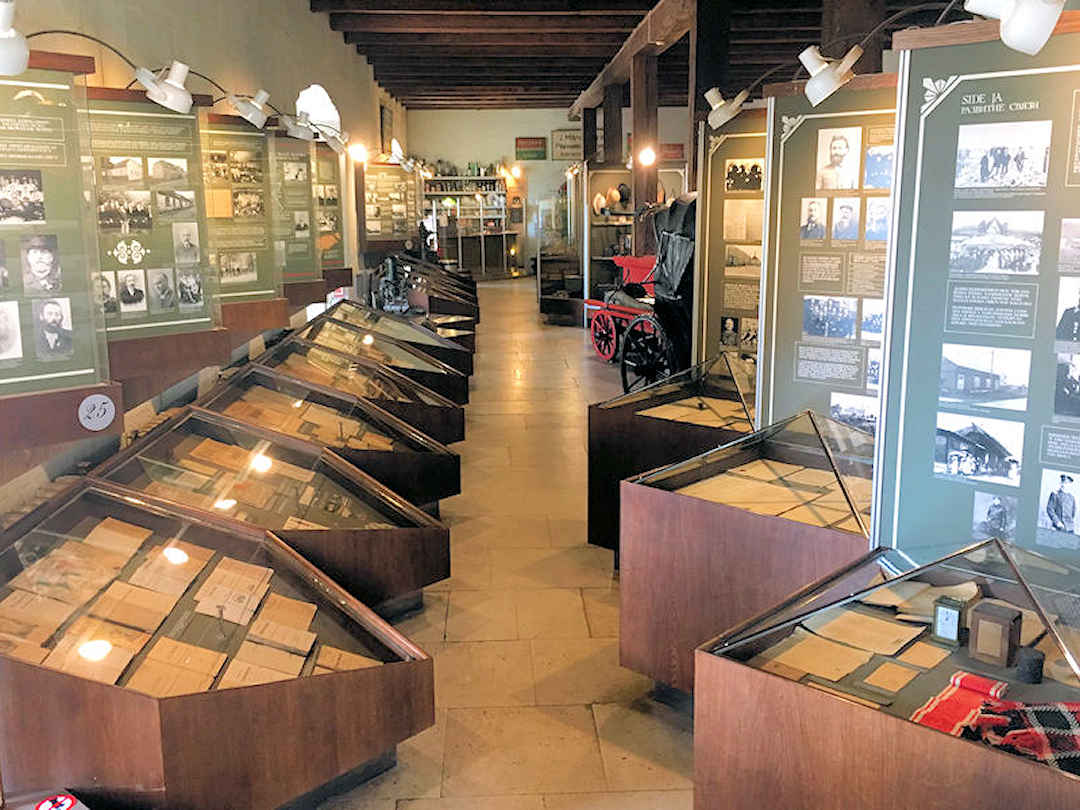
Kuressaare Castle is full of exhibits and information. The museum was very interesting, but with some reorganisation, it could be even better.
How to save money on experiences
Free activities or experiences.
Many activities (and some of our most treasured experiences) are free or cost very little. On our journeys, we have
- Visited many museums free of charge (including the Colosseum and Forum in Rome which are free on the first Sunday of the month )
- Joined Al Green’s Baptist Church Service in Memphis (rather than pay the exorbitant entry fees at nearby Graceland)
- Attended free guided walking tours around the world (you pay a tip at the end based on your budget and how much you liked the tour)
- Did countless self-guided walks and used public transport to get to know a city
- Hiked in the Andes in Ecuador and climbed volcanoes in the Caribbean
- Swam and snorkelled at countless beaches, using tree shade rather than paying for parasols; and
- Attended free performances and danced with locals in Cuba .
Just search for free activities in your destination and chances are someone has made a nice list for you already.
Paid Experiences
Paying for experiences or activities can add up quickly, especially if you're travelling as a family. Make use of family passes (if available). Look out for special deals and discount coupons. If you travel in a group, it may also pay to book a private tour and share the cost. Shop around - here are some of the service providers we have used and can recommend:
Be aware that public toilets, like a lot of public toilets in Europe , are not free – even in a shopping centre or a bus station. The average cost in Estonia was EUR0.50 per use.
Visiting the Baltic countries cost us on average EUR45.17/USD50.54 per person per day. Check out our individual country costs here:
Eight nights in Estonia : USD845.52 / EUR756.87 (two people) Daily Expenses in Estonia : USD52.85 / EUR47.30 (per person)
Withdrawing cash overseas can be expensive but it doesn’t have to be. We can show you how to avoid unnecessary fees and make your travel budget stretch further.
How do you determine which card is best for your overseas trip? Using the right one can save bank fees and make your travel budget stretch further.
Ever been caught out by the bad FX rates and exorbitant commissions charged by FX bureaus? These tips allow you to minimise these charges in future . We also recommend XE Money Transfer to keep more of your money when you complete a transfer.
From a safety point of view , we like to have as little cash as possible on us, yet enough to not feel uncomfortable. Of the expenses incurred in Estonia , we paid 30% in cash. The biggest cash amount was EUR64 for our accommodation in Tartu .
First designed to assist us on a three-month South America trip, this travel risk register will open your eyes to what you need to do about the various risks you may encounter. Easy to follow and update.
I wrote this Estonia travel costs guide based on our own peronal experience. If you have explored Estonia as well and you have something to add about your travel costs , please feel free to contact me. If you liked my travel cost saving tips and found them helpful, I would appreciate it if you could share them with your friends and family via the Share buttons below. Even better, link to the page from your personal blog or social media platforms.


All Destinations , Europe
Is tallinn expensive everything i spent in 2 days in estonia.

Is Tallinn expensive? What are the costs of travel in Estonia?
I recently spent just under two days in the Estonian capital, and was curious about the costs as I knew it was supposed to be pricier than other Baltic countries!
So, I recorded all of my expenses to help other travellers to the country.
Here’s everything I spent and my thoughts!
Is Tallinn expensive?
Tallinn isn’t expensive per se, but prices are higher than in the other Baltic capitals and some Eastern European countries.
In recent years, the country’s tech boom means that it has developed quickly and prices have risen more so than elsewhere in the region.
However, it’s still cheaper than many capitals in Western Europe!
I was in Tallinn for just less than two days, and here’s everything I spent:
This came to a total of €220.99 for all my expenses in just under 48 hours in the city.
Cost of accommodation in Tallinn
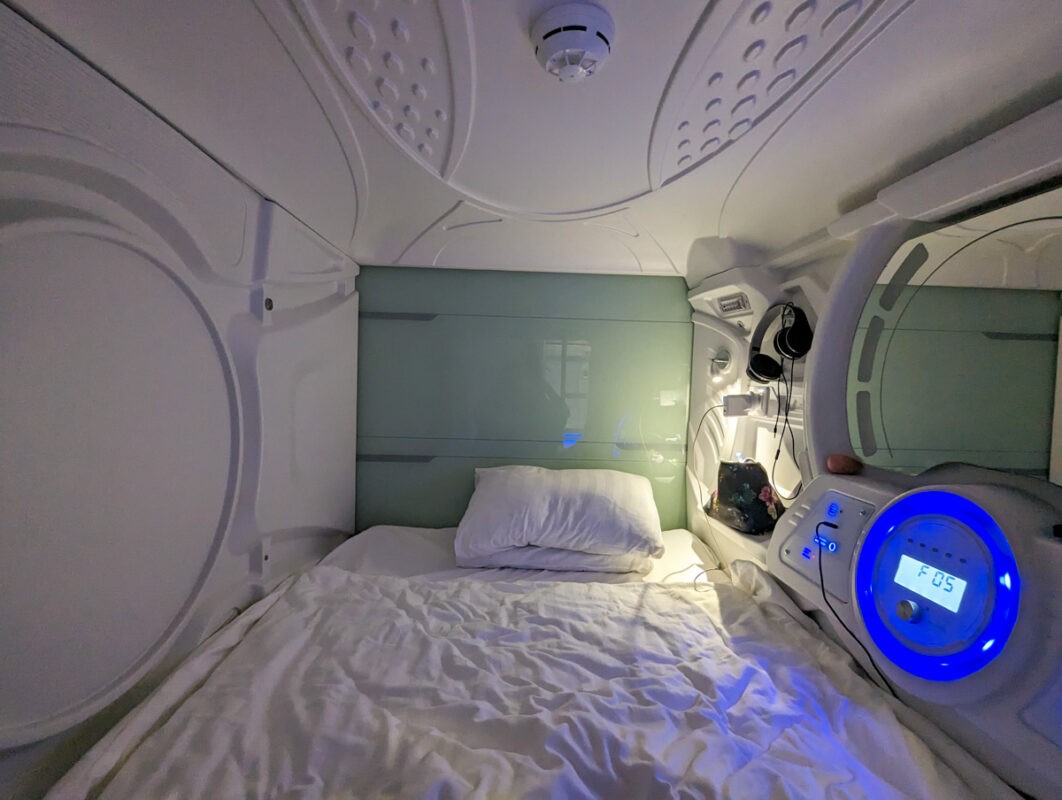
I stayed in Capsule Hostels Tallinn .
Now, while I stayed in many a hostel in my early and mid-twenties, I’ve long since hung up my hostel shoes. I’m in my 30s now, I’m working on the road, and I need a good night’s sleep!
But I decided to make an exception for Capsule Hostels Tallinn, as I quite enjoy a capsule hostel (having stayed in them in Singapore and Malaysia) and it was significantly cheaper than having my own room.
The stay cost me €62.98 for two nights , which seemed a bit steep for a capsule hostel, especially given that breakfast wasn’t included.
It also wasn’t in the city centre – it was a 40-minute walk or a quick 10-minute tram ride away.
The capsules were organized into separate rooms, giving off a slight hostel vibe which I wasn’t too keen on.
But I enjoyed it once I was inside my pod! I had my own space, unlike a hostel.
It was equipped with a comfortable mattress and various amenities like adjustable lighting, a plug, USB ports and a control panel for air circulation added to the comfort.
The shared bathroom facilities were ok but could be a little dirty – just like shared bathrooms can be!
There was a kitchen and lounging area, which were quite nice, although it was very quiet when I was there (which was fine for me – I wanted to get some work done!).
I also did some self-serve laundry at the hostel – it was only €2 but I put it on the wrong setting and it took four hours to wash and dry!
If I stayed again, I’d probably choose Citybox Tallinn City Center . This hotel has modern rooms and is between the port and Old Town (it’s a 15-minute walk to Tallinn Town Hall). Single rooms start at around €34 per night!
For some affordable luxury, Rixwell Collection Savoy Boutique Hotel is on the south side of the city centre and single rooms begin at €87 per night.
Cost of food and drink in Tallinn
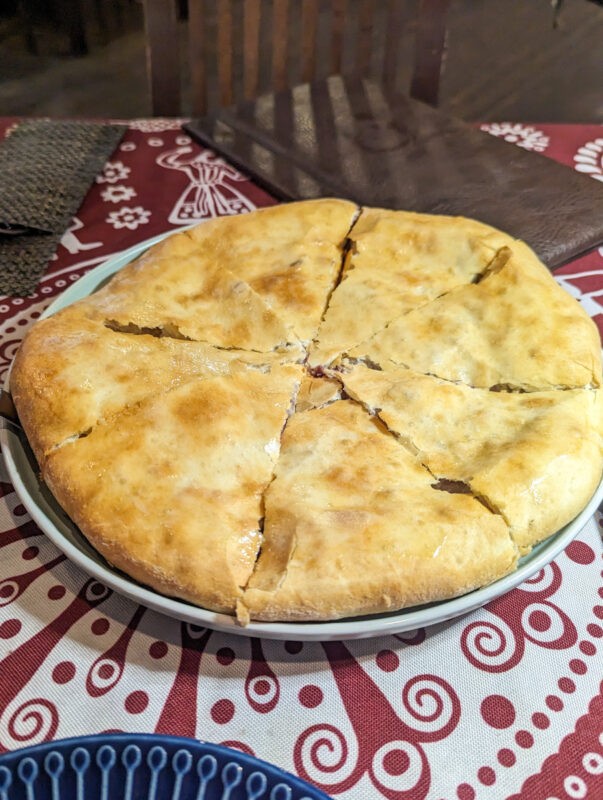
I spent a total of €54.50 on food and drink (including coffee and alcohol) in a day and a half in Tallinn.
First up was a coffee and pastry from Caffeine , my favourite Baltic coffee chain, which set me back €6.30 – notably more expensive compared to a similar breakfast I had in Riga, where the same combo cost just €3.30!
The quality was good, but the price difference was apparent!
For lunch, I dined at a Georgian restaurant Tbilisi , spending €19 on a lobiani (bean bread) and a tea. Initially, this felt pricey, but the bean bread was huge and very filling so I saved half for dinner.
Later on, I tried a hot Aperol from the Christmas market, which cost €8. It wasn’t quite as tasty as an Aperol Spritz – I think Aperol should be drunk in warm, sunny weather, but it was ok!
A standard glogg , the Estonian version of mulled wine, cost €6 and was tasty and warming. This was around the same as it cost in other Baltic markets.
For dinner, I had the rest of my Georgian bean bread and bought a bottle of juice, a protein bar, and a chocolate bar for €4.60.
I had the protein bar for breakfast the next day, and the chocolate and juice with dinner!
The next morning, I visited Caffeine for a morning coffee – which was €3.80 and ended up at the same cafe for a sandwich at lunchtime, which cost €6.80.
(I did like Caffeine, but obviously, there are plenty of other places to eat in Tallinn, too – just when I was out and about seeing the sights it always ended up being the best option!).
Cost of activities and attractions in Tallinn
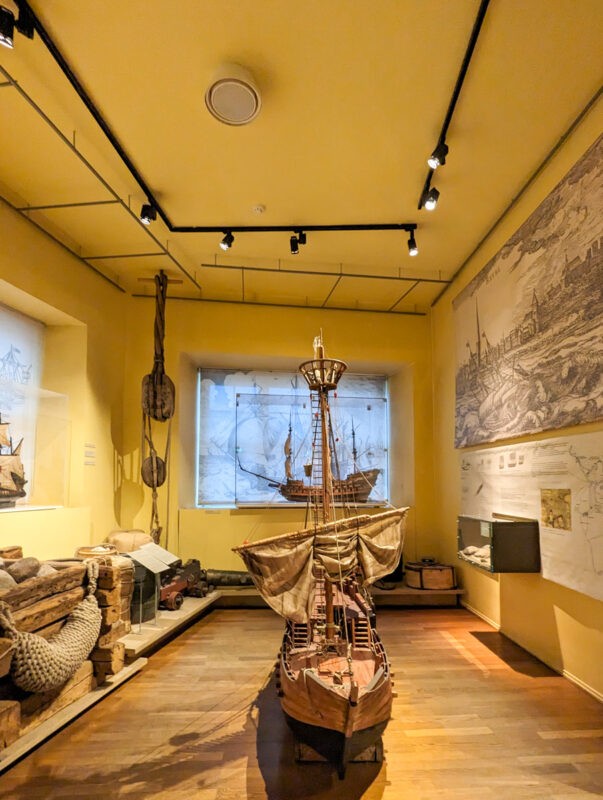
I spent €17 on attractions and activities in Tallinn , although I only went to one museum (and usually I go to at least two on my city breaks!).
The Tallinn Town Museum costs €6 to enter. It was a fantastic museum with lots of information on Tallinn’s fascinating history. Definitely recommend!
I also embarked on a walking tour with Tallinn in a Nutshell . Again, this was a wonderful way to discover the history and culture of Tallinn – my guide Kätlin was fantastic!
The tour cost me a nominal €1 booking fee, and I tipped Kätlin €10 for her excellent guidance and knowledge (tipping is expected, but it’s up to you how much you give – I usually do €10 if there are plenty of other people on the tour).
I also explored several of Tallinn’s attractions for free!
Walking around the Old Town independently on my second morning, enjoying a slice of solitude as the city woke up, was a highlight.
The Alexander Nevsky Cathedral is free (perfect for warming up in!) and is an interesting look at Estonia’s religious heritage (while Lutheran is the official religion of Estonia, Russian Orthodox is actually the most followed – but this is largely because most Estonians aren’t religious).
I took in the exterior of the imposing Toompea Castle and strolled through the Danish King’s Gardens; all of these parts of the Old Town give the essence of the city’s incredible, multi-faceted history.
Before I walked to the port (I was taking the ferry to Helsinki), I visited the Kalamaja neighbourhood (also for free).
This area is known for its bohemian vibe and artistic community, with street art and studios. It’s also where many of Tallinn’s start-ups are headquartered (Estonia is one of the most popular countries in the world for start-ups).
If you’re looking for more to do in Tallinn, here are a few activities on Get Your Guide that I liked the look of and the costs.
- From Tallinn: Day Trip to Lahemaa National Park – €109
- Best of Tallinn 2-Hour Bike Tour €31
- Tallinn Food Tour €120
- Coastal Cliffs and Rummu Submerged Quarry Day Tour €120
Is the Tallinn Card worth it?
The Tallinn Card , a pass for many of the city’s attractions and transport, could be worth purchasing if you’re planning on doing lots of museums and attractions and taking public transport.
Priced at €76.00 for a 3-day pass, it encompasses a comprehensive range of benefits that can enhance your visit to Tallinn.
One of the key attractions of the Tallinn Card is the inclusion of over 40 different attractions.
The card also includes public transport and substantial discounts on various tours, day trips, and other experiences.
These discounts can make some of the pricier activities more accessible.
Whether the Tallinn Card is worth it for you personally depends on your travel plans and interests – I’d recommend taking a look at what’s included and seeing if it lines up with what you want to do.
I decided against buying one myself as I didn’t have that long in the city, but it’s down to personal preference and needs!
Take a look at the Tallinn Card here.
Cost of transport in Tallinn
I spent a total of €12 on transport in Tallinn itself; I took two Bolt taxis and the tram twice. Bolt taxis were €4 each for a 10-minute drive and the tram was €2 per ride.
Bolt worked handily, especially when I first arrived in the city and was pushed for time, but if you’re visiting Tallinn on a budget, the trams are very easy to use.
I used contactless payment on the tram on the first day.
On the second day, I bought a ticket online and validated it upon boarding the tram.
I took FlixBus between the Baltic capitals. My 5-hour Riga to Tallinn bus cost €10.44 and was remarkable for its value.
Then, the boat trip to Helsinki cost €41.17. The ship was fantastic and I didn’t think it was too pricey for a two hour international journey.
Christmas market costs in Tallinn

In addition to the drinks, I spent an extra €21 at the Christmas market, buying a pair of thick woollen socks for my partner for Christmas (they were top of his list!) and a model of a traditional Estonian house for our flat.
Tips for saving money in Tallinn
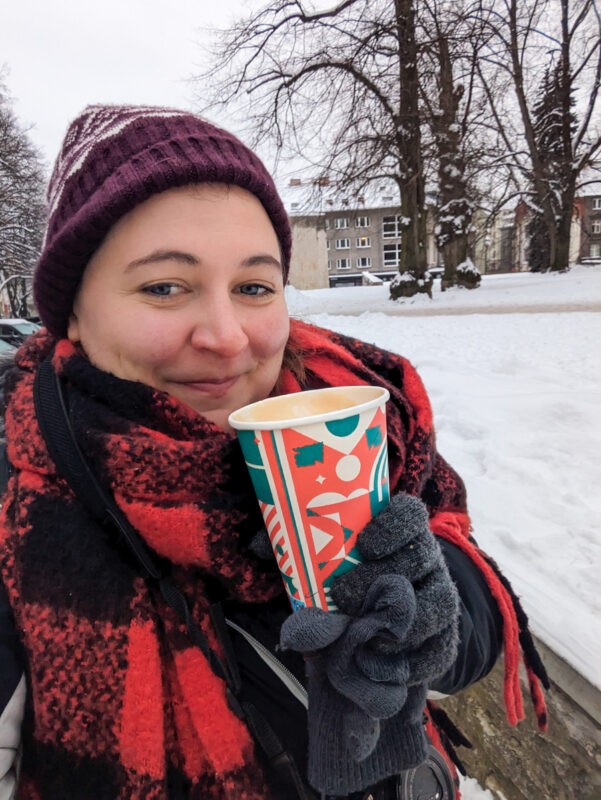
Here are my top tips for visiting Tallinn on a budget!
1. Stay out of the city centre
You’ll often find more affordable accommodation outside the Old Town.
Look for guesthouses, budget hotels, or hostels in neighbourhoods like Kalamaja, which is known for its bohemian atmosphere and historic wooden houses.
2. Consider a hostel or capsule hostel like I did
Look for budget-friendly accommodations like hostels – or choose the capsule hostel that I stayed at !
3. Favour free attractions
Many of Tallinn’s attractions are free.
Spend time wandering the Old Town, visiting the Alexander Nevsky Cathedral, or exploring the artistic Kalamaja neighborhood.
The Danish King’s Garden and Toompea Hill boast fantastic views without any cost.
4. Use public transport
Use Tallinn’s efficient public transport system to get around the city.
Trams and buses are affordable and cover most of the city. Consider buying a Tallinn Card if you plan extensive use, as it offers unlimited public transport and free entry to many attractions.
5. Find cheap eats
Avoid tourist-heavy areas for dining.
I’d recommend the street food market Balti Jaam for reasonably priced cuisine.
Also, many cafes offer affordable lunch specials on weekdays.
FAQs about the costs in Tallinn
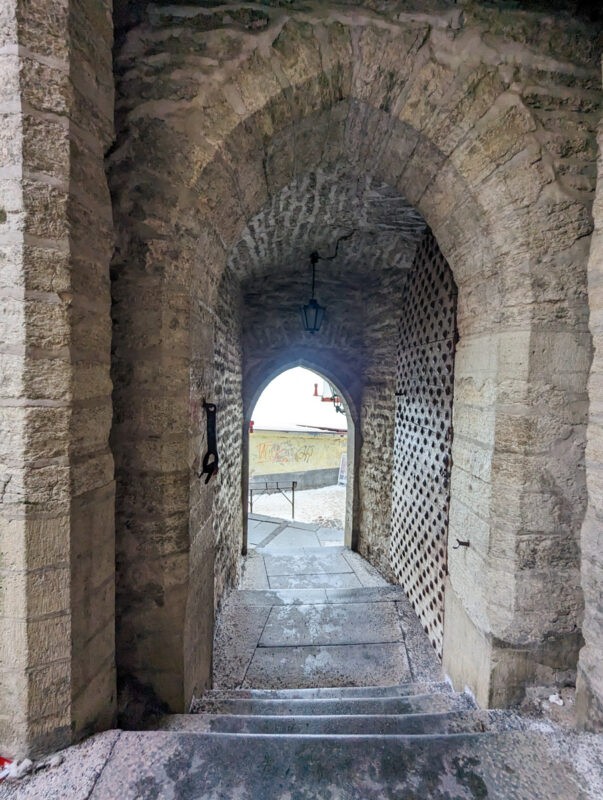
Here are some answers to frequently asked questions about prices in Tallinn!
How much does a meal cost in Tallinn?
In Tallinn, the cost of a meal varies.
A casual dining experience in a mid-range restaurant can range from €10 to €20.
For budget meals, like those in cafes or street food, expect to pay around €5 to €10.
How much is a pint of beer in Tallinn?
A pint of beer in Tallinn typically costs between €3 and €7, depending on the location and the type of beer. Pubs and bars outside the Old Town tend to offer lower prices.
Is Estonia cheap for tourists?
Estonia is relatively affordable for tourists, especially when compared to Western European countries.
Costs can be higher in popular tourist areas, but overall, it offers good value for money.
Is alcohol cheap in Estonia?
The price of alcohol in Estonia is moderate. It’s cheaper than in the Nordic countries but slightly higher than in some Eastern European nations. Expect to pay €3 to €7 for a pint of beer.
Is Riga or Tallinn more expensive?
Tallinn is generally a bit more expensive than Riga , especially in terms of accommodation and dining in tourist-centric areas. However, the price difference is not drastically high.
Is Vilnius or Tallinn more expensive?
Tallinn tends to be more expensive than Vilnius , particularly in terms of hotels and restaurants. However, both cities offer a range of options to suit various budgets.
Do I need cash in Tallinn?
Tallinn is extremely card-friendly – I didn’t use cash once when I was there. If you do need cash for any reason, there are plenty of ATMs.
Is Estonia more expensive than the UK?
Estonia, overall, is less expensive than the UK. Costs for accommodation, food, and entertainment are generally lower in Estonia compared to the UK.
How much is a cup of coffee in Estonia?
A cup of coffee in Estonia typically costs between €2 and €4, varying slightly based on the type of café and its location. Speciality coffee shops might charge a bit more.
So, what are the costs of travel in Estonia?
I didn’t think Estonia was expensive , but it certainly wasn’t the cheapest place I’ve been in Europe.
But I loved the history and culture, and think it’s definitely worth a visit !
If you’re doing some more research about visiting Tallinn, here’s my YouTube video from the city !
- New Zealand
- The Philippines
- The Netherlands
- United Kingdom
- Inspiration
- Overland Itineraries
- Packing Lists
- Travel Tips
- Working Abroad
- Accomodation Guides
- Overland Travel
- Preserving Cultures
- Protecting Animals
- Living Abroad

Estonia Travel Budget
Money & costs in estonia:.
$ 24 / night
$ 80 / night
$ 56 / night
$ 182 / night
Bottle of water:
Bottle of beer:
Bottle of wine:
Bottle of whisky:
Narva mnt D paike paevituskeskus :
Sunfactory Mahtra :
Sunfactory Sopruse :
Super Skypark :
Kuulsaal Bowling :
Estonian Open Air Museum :
Kadriorg Park :
Spot of Tallinn :
Krabi Bowling :
- Thrifty ( rent a car )
- Europcar ( rent a car )
- Sixt ( rent a car )
- Hertz ( rent a car )
- Avis ( rent a car )
$ 128 / day
- BikeRent ( rent a motorbike )
- Visit Estonia ( rent a bicycle )
Luminor Bank
Danske Bank A/S Estonia Branch
9 Things to Know Before Visiting Estonia
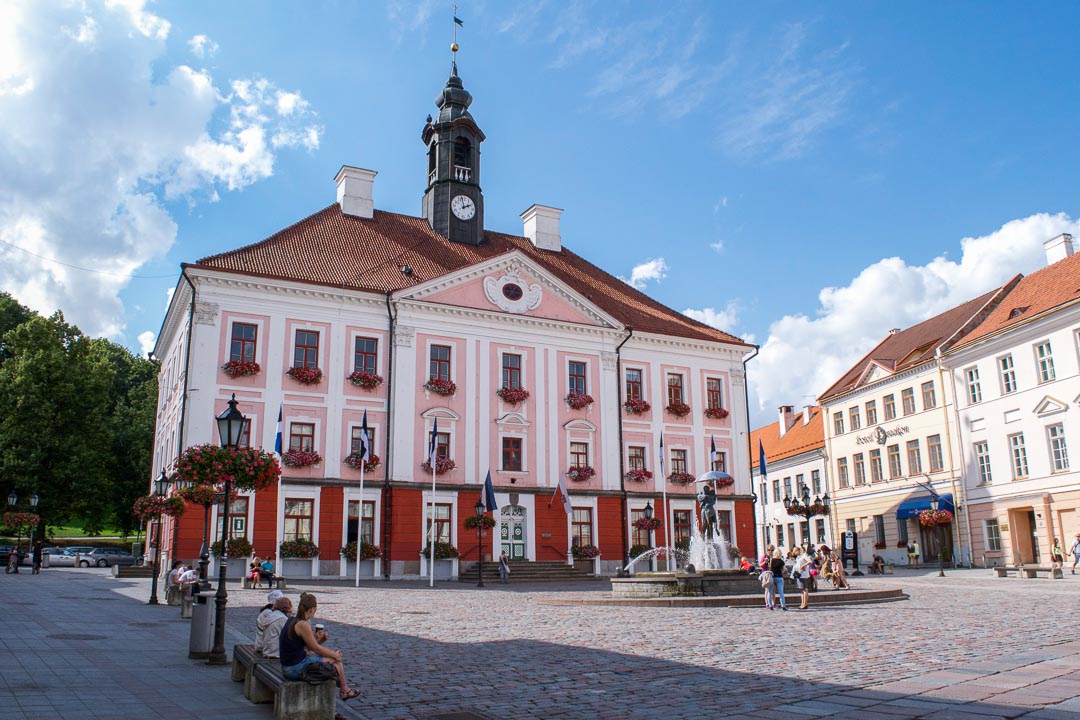
Disclosure: This post (probably) contains affiliate links. If you click on one, I may make a small commission. Of course, this will come at no extra cost to you and helps keep this site running.
Normally I’d be reluctant to provide tips for an entire country after such a short visit. Yet I was surprised by how much I learned about Estonia in two weeks. Maybe it’s because I started with knowing so little about this Baltic country, but I think that’s an all too common occurrence. I certainly don’t claim to be an expert now and there is plenty more of Estonia I have yet to explore, but here are 9 valuable insights on visiting Estonia I think are worth knowing.
Table of Contents
1. Not the Same as Latvia

It might come as quite a surprise that Estonia differs a considerable amount from neighbours Latvia and Lithuania . People tend to lump the 3 countries together as the Baltic States , assuming their shared geography carries over to things like culture and language. I know I certainly had that impression before visiting and still throw around the term “Baltic States” too often. It was only when I first crossed the border from Latvia to Estonia that I learned how wrong I’d been.
In truth, Estonia is far more similar to its northern neighbour across the sea, Finland. It’s probably most apparent in the language when you see the differences between basics like ‘bus station’ or other basic utilities. You’ll also find that Estonia has a higher cost of living than Latvia and a fondness for the tech industry like the Finns – the popular chat program Skype was created in Estonia.
I’d also say, without wanting to make a gross generalisation, that I found Estonians to also possess the very straightforward character that you often associate with people from Northern Europe. To me, Estonia is far more Northern European than either Latvia or Lithuania. That makes sense, since it lies north of Latvia, south of Finland and west of Russia, thus answering the question “Where is Estonia?”.
2. More than just Tallinn

A common remark I’ve noticed in the comments recently is that people have either only heard of Tallinn , or only visited there in Estonia. This honestly didn’t surprise me much and I only knew about places other than Tallinn after I started planning my visit. Hopefully, my previous posts on Pärnu and Saaremaa have shown that there’s much more to Estonia than its capital.
For example, Tallinn is not even Estonia’s only major city. There’s also the university city of Tartu , with its serene riverbank and hilltop ruins to explore. Another popular destination is the resort town of Haapsalu, which boasts restorative mud spas and a nice old castle. There’s also the country’s wilderness, from the many bog lands to its lakes and ancient forests. Not to mention, the country’s seasonal beaches. Which brings me to…
3. Many, Many Islands

I touched on this in my Saaremaa article – Estonia has a lot of islands! According to the Estonia Tourism Board, there are over 2000 Estonian islands in the Baltic Sea and it turns out that they each have their unique sights and cultures to share. I’ve talked about the windmills and meteorite craters of Saaremaa , but it is only the biggest island.
Speaking of meteorites, the island of Hiiumaa north of Saaremaa is said to have formed out of the aftermath of a meteorite impact. Hiiumaa is said to have beautiful varied landscapes, from forests to sandy beaches.
There’s also the small island of Kihnu, one of the rare matriarchal societies in the world. Yes, that’s right, the women officially run the show! The people of Kihnu still wear traditional clothes day-to-day and look quite the sight, zipping by on their motorbikes. Both of these islands are at the top of my list for my next visit!
4. Getting Around
Estonia may seem like a small country compared to other European nations, but it is still several hundreds of kilometres across so there are still some distances to travel to get about. While there is a limited domestic train network, the country’s buses are more likely useful for wider travel. The train network mostly connects Tallinn with the cities of Tartu and Narva , with international trains travelling through to St Petersburg and Moscow in Russia.
The buses on the other hand cover the width and breadth of the country and provide great value for money. Several different bus companies operate within Estonia, but my pick throughout the Baltic would have to be Lux Express . While they may be a little more expensive, the value you get is considerable. I don’t think I’ve ever had more legroom on a bus than I had with them, plus WiFi and personal TV screens make for an immensely comfortable ride. Broader bus information can be found here .
5. Short Summer

Owing to its latitude, Estonia suffers from short summers. There’s no getting around it. I arrived in mid-August and summer was already mostly in the rear view window. While there were several days when it was beaming sunshine with nice and warm temperatures, it was balanced out by some unfortunate wet weather.
Don’t let that deter you though, as there’s still plenty of sightseeing you can do when the forecast is looking grim. I still managed to see quite a lot of Tallinn, despite the heavy rain that hit during my walking tour. While on Saaremaa , it drizzled a fair bit on the days I went to explore Angla and Kaali, not that it stopped me having a blast. I think if you bring some light rain protection with you, if the weather turns it shouldn’t be a problem.
6. Language
As I mentioned earlier, the closest language to Estonian is Finnish. This probably won’t do you much good if you don’t speak Finnish. These languages are known as “Finno-Ugric languages” and their closest major cousin is actually Hungarian! Essentially, Estonian is almost assuredly going to be unlike any language you know.
Thankfully, based on my experience, a considerable percentage of the population speaks at least passing English, perhaps less so out on islands like Saaremaa. For instance, if you’re visiting Tallinn then you’ve got a good chance of getting help in English. Other likely useful languages to know are German and Russian based on the country’s history.
Interestingly, when I first heard people speaking Estonian, I kept mistaking it for Spanish! This isn’t because any of the words are similar but had more to do with the speed and cadence of conversation. Estonian seemed like a really fast and expressive language and I guess that made me think of Spanish. Weird!
Some useful phrases to know include Tere which is ‘Hello’; Aitäh which is ‘Thank you’, Palun for ‘Please’; and Ja and Ei for ‘Yes’ and ‘No’.
7. Intriguing Architecture

Possibly one of the things I most enjoyed about exploring the cities and towns of Estonia was the fascinating variety in architecture you could come across. It felt like you could find buildings from nearly every period in the country’s history, no small feat for a country continually subject to invasions and occupation throughout the centuries.
If you’re after medieval architecture, Tallinn Old Town is the place to go. Then there’s the charming Neoclassical buildings of Tartu, like its pink and red Town Hall seen above. You can find 19th-century working-class houses in the neighbourhoods of both Tallinn and Tartu, plus gorgeous wood panel houses by the seaside in places like Pärnu. But there are also signs of modernity in places like Tallinn’s Rotermann Quarter.
One architectural influence I was expecting and surprisingly saw little of was Soviet/Brutalist architecture from the second half of the 20th century. I think this was more a case of me not travelling to the right places than it not existing. Still, plenty of other wonderful buildings to enjoy.
8. Craft Beer

When people talk about the food and drink in Estonia, probably the most common thing mentioned is their delicious black bread. Since I already raved about it here , I thought I’d mention Estonia’s unsung hero, their craft beer. If you’re a beer enthusiast then this is one country you don’t want to miss.
Having first tried several in Pärnu, I was blown away by both the quality and variety of craft beer in Tallinn and elsewhere. Even in a small mini-market, you can find a decent selection of craft beers alongside the national fare. I spent my limited time in Estonia attempting to try as many different beers as I could.
My favourite has to be Tanker’s Sauna Session , a fantastic spiced ale whose name catches your attention. While there are plenty of IPAs and APAs that often dominate the craft beer market, they also have plenty of lighter ales like pale, blonde and amber ales.
9. Russia Relationship
Estonia’s relationship with Russia is a tricky one, so I’ll do my best to explore it as an outsider. Be gentle.
Firstly, people tend to have a misconception that Estonia is very similar to Russia, which for the most part is incorrect. As Estonia fell under Russian rule on and off between 1710 and 1991, there is a fair bit of wariness felt towards their eastern neighbours. Russians do however make up the largest ethnic minority in the country, at a considerable 25% of the population. The majority of the ethnic Russians stem from the occupation of Estonia by the Soviet Union, although there were small settlements in the country’s east before that.
Based on conversations I had with Estonians, there have been some problems with assimilation, particularly around citizenship and language. As I understand, many ethnic Russians either struggled with or didn’t want to learn Estonian, a critical requirement of citizenship. After the fall of the USSR, many ethnic Russians found themselves stateless – neither belonging to Russia nor Estonia.
These people would come to hold “Grey Passports”, identity documents that established them as stateless, all the while not really granting them any freedom to travel. They were effectively stuck in Estonia, unable to go elsewhere. Thankfully, this problem has decreased somewhat through various measures, shrinking from 32% of the country as stateless in 1992 down to 6.8% as of 2015.
Resources for Visiting Estonia

- Getting There: To find the cheapest and most convenient flights to Estonia make sure to check Kayak .
- Accommodation: Here you can find hotels, apartments and guesthouses across Estonia.
- Tours: There are countless day trips and sightseeing tours available in Estonia.
- Car Hire: If you want to travel more independently, consider renting a car to drive yourself about.
- Managing Money: The Wise card can be a great option for getting cash out and making purchases .
- Travel Medical Insurance: Need coverage in case you get sick, or injured, or your luggage gets lost? Get a quote for Nomad Insurance from SafetyWing .
What other things would you like to know before visiting Estonia? Have you visited Estonia and have other insights to share? Please share them in the comments below.
David is the author behind the Travelsewhere travel blog and is always on the search for the quieter, less-visited corners of the world.
You may also like
6 quick tips for visiting tallinn, estonia, where to stay in tallinn on your first trip, the best cafes in tallinn for digital nomads, 5 reliable tips for visiting narva, estonia, the island of saaremaa, estonia’s best kept secret, how to visit lahemaa national park in estonia, 40 comments.
Really interesting comments about Estonia – not a place that’s really on the tourist radar so it’s very cool to hear about it! I also love that you offer some deeper insight about the history, language, and politics such as the Russian occupation – I personally find that so much more interesting that “X things to do in…”
Love this post! So informative, seems like you really immersed yourself in the culture. I would love to visit the islands you mentioned some day!
Very informative! I admit, I know very little of Estonia even though I would love to go there someday. #wanderfulwednesday
So happy to have found this post! I never hear anything about Estonia except a) that Tallinn is amazing and b) that Hungarian is related to Estonian (but this could be because I live in Hungary 🙂 ). I’m planning on visiting this summer. I had no idea there were so many islands?!
I guess “the Baltics” have the same problem as “Scandinavia”. People just assume that all the countries are the same whereas they’re actually quite different from each other. I had heard of Tartu before but obviously, the image of Tallin’s old town is the first thing I think about on hearing about Estonia too 😉 Would still like to visit the country and travel around a bit though!
Love to have learned more about Estonia! I’m especially excited to hear about the craft beer scene there! I’m not hipster whatsoever, although sometimes I feel I’m too old for the scene, but I do LOVE me a goooood beer! #WanderfulWednesday
I don’t think its too hipster to appreciate different types of beers. Nice to mix it up with a pale ale after drinking so much lager there.
I’ve never been to Estonia but it’s been on my list for a long time. Our tour guides in Hungary told us about it being so close to Finnish! I was fascinated by that; I would love to study the pathway of language to better understand how these languages are related. The grey passport problem is also interesting to me. I wonder if we will see something like that in the US when they decide what to do with the undocumented population. I guess we essentially kind of already have those individuals who are in limbo. Things to think about.
Some very interesting tidbits about Estonia. Yes, I have grouped Latvia, Lithuania, and Estonia as ‘similar’ Baltic states (I won’t do that again). The grey visas must be very frustrating for persons unable to go back to what they were familiar with yet unable to become citizens because they did not want to learn the language.
very interesting! I didn’t realize that it’s got islands:) #wkdtravelinspiration
That was such a great read! I’m guilty of being one of those people who has only heard of Talinn but if I do get the chance to visit Estonia I’ll be sure to go further afield! Thank you for sharing! X
Oh David, you had me at Craft Beer! Okay, and the architecture, and the islands, and… Loved the post on Saaremaa, and this is a great primer for more of the country. We are fascinated with the Baltics, and would love to spend some time in Estonia. Thanks for sharing your trip and experiences!
My geography is terrible (despite my love of travel) so the fact that Estonia has islands is news to me. For the black bread and the craft beer, I’m totally there 😉 #wkdtravelinspiration
Estonia looks like an interesting place and I was told that I needed to visit Tallinn. Great history and stunning photos. Love the cobblestone streets, architecture and the many islands. Thanks for sharing 🙂
Really interesting stuff to know! definitely somewhere for us to visit in the future!
Great information! It’s funny that Estonian sounds like Spanish. I’m going to have to ask my Estonian friend to give me a demo of the language now.
I’d say the individual words don’t sound like Spanish, but but just the speed and way the language flows in natural conversation made me think of it. Your friend will probably think I’m nuts!
So I asked my friend to talk to me in Estonian and I agree with you! It can be confused with Spanish. I told him how you mentioned its similarity to Spanish and he thought about it and agreed as well haha. I sometimes think Japanese sounds like Spanish because of the consonant, vowel, consonant, vowel pattern.
Really informative post! I knew absolutely nothing about Estonia, but I know what to refer to when I get around to going 😛 Thanks for sharing this!!
All these facts are so true. I need to get back to Estonia and explore some of her islands…such a beautiful country.
Thanks for linking up with #wkendtravelinspiration! See you again next week!
Exactly the post I needed! I’m planing to go this year! thanks!
We loved Tallinn, I’m sure we’d love the rest of the country too. Plus I’ll go anywhere to try a new beer. Thanks for linking up with #wkendtravelinspiration, see you next week!
We are total beer nerds and will definitely be adding Estonia to the bucket list now. The black bread also sounds intriguing. We are curious, is it similar to pumpernickel bread?
I do think there’s a similarity to it yes, they’re both sweet rye breads. Delicious!
Not somewhere that we have thought about. This is a really useful post for visiting Estonia, great information. #feetdotravel
Wow, I literally knew nothing about Estonia so this is a fascinating post! I love seeing generalisations in culture like you did noticing the similarities to Finland 😀 It’s like you can almost see the whole history of the place happening before your eyes – if that makes sense! haha.
I like it! Off the beaten path somewhat and a quaint areas to explore. All these areas have so much history and wonderful architecture. Good food & beer are always a plus. Will definitely pin for a future visit.
Estonia hadn’t really made it to my list, not for any other reason than I didn’t know much about it and the list is pretty long. Thanks for all the details on history, politics, language and beer. Estonia has been added.
Craft beer is definitely enough! I’ve been to Estonia as a kid but need to go back and explore properly. Fortunately, I speak Russian which will make it easier to communicate. I am super excited about the delicious bread too! Great tips and will prove genuinely useful!
Hope you get a chance to visit mate, I think you’d like it.
Well done on portraying Estonia. It’s always interesting to hear how “outsiders” see our country and I am glad you are one of the few who actually knows what they are talking about haha! Makes me wonder I should start blogging about Estonia too maybe? So glad to see you are opening people’s eyes about the many things I always struggle with when someone asks me where Im from.
Thank you so much Kreete. Knowing you would read this made me extra careful haha. Happy to share your fantastic homeland with people.
Estonia is a very interesting place. One of my best friends is an Estonian Russian and when I visited him and his parents they speak in Russian, eat popular Russian dishes, watch Russian TV etc. Yet his girlfriend is Estonian and doesn’t speak any Russian – so they speak in Estonian (or English when I’m around). Its takes a bit to get your head around it but I suppose it’s like any other country with a large overseas community. Apparently it can be a touchy subject though as I’m told some shopkeepers will only speak to you in Russian, with naturally annoys some Estonians.
This is such an interesting post and I felt I learnt so much about Estonia from reading it contains detail that is sometimes missed (or is difficult to express) in a blog post about certain cities visited. I did not know that Estonia are responsible for Skype and I am surprised to learn that the language is similar to Finnish! Thank you for taking the time to write this and I loved reading Kreete’s perspective on this blog as well 🙂 #feetdotravel
I learn more about these countries from you than any other source. I had no idea Skype was created here – I’m really surprised about that! There’s a lot of great tips here on experiencing the country!
Only last year that I was able to visit this place. I must say that I enjoyed the place. What I like the most is their old town. I really felt in love of the place. I wish I can visit it again.
David I so enjoyed your write ups. I’m hoping to go to the Balkins next year. I definitely need more time. I had no idea there was so much to see. I am from the huge country of Canada and these are such small countries. Thanks so much.
Sorry I mean the Baltic’s. I planned on seeing other countries when I go but now I’ll spend my time here and leave Eastern Europe for another time hopefully.
I’m glad you find my posts on the Baltic interesting Helen and don’t worry, I still write the wrong place now and again. Yes, the region is small compared to places like Canada but no matter where you go, there’s always more to see than you ever expect. I think focusing on fewer countries and exploring in more depth is definitely a great way to go about it.
I have applied for admission in Estonia, hoping to get a positive response from them. Cant wait to come explore the city
Leave a Reply Cancel reply
This site uses Akismet to reduce spam. Learn how your comment data is processed .
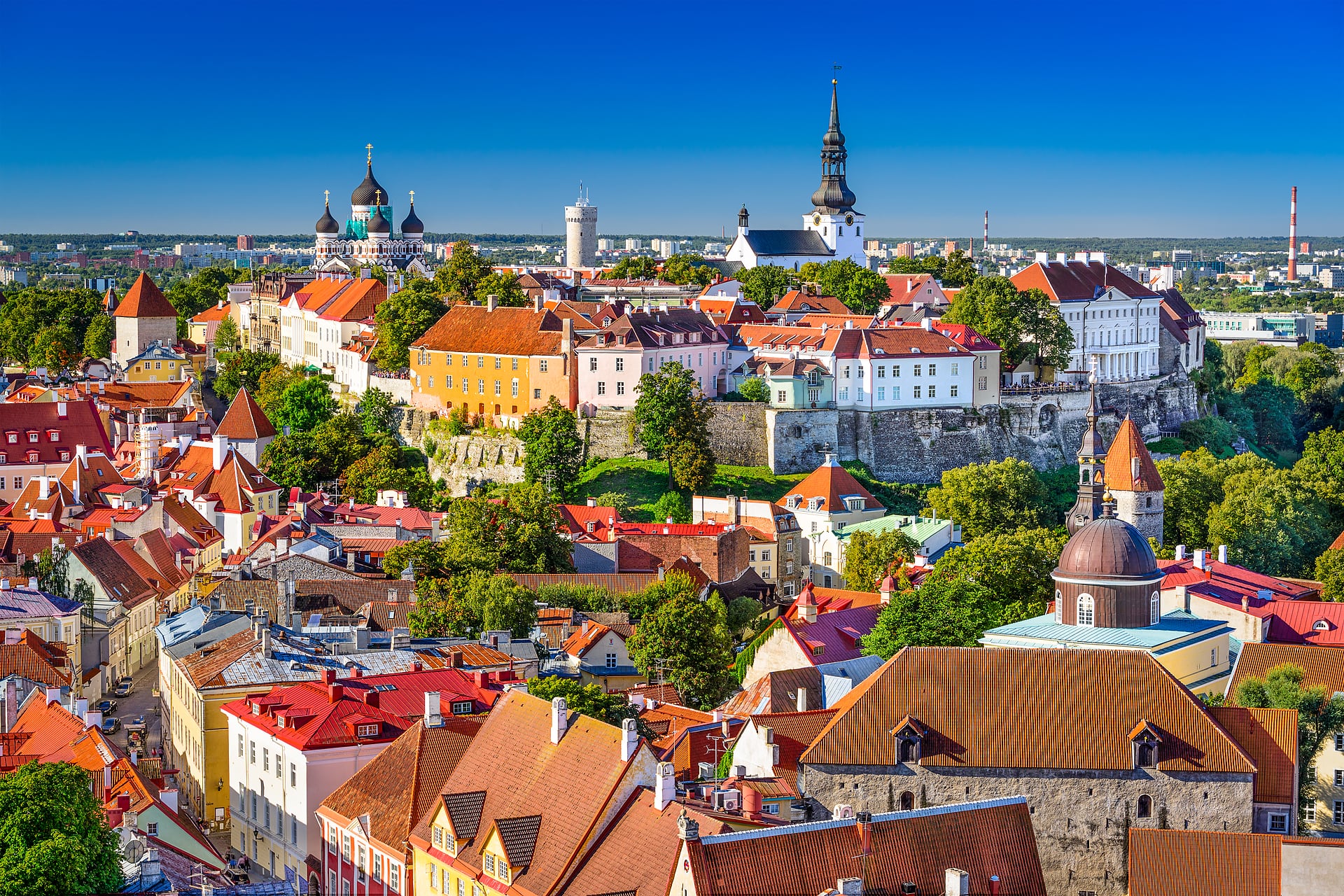
Prices and Cost of Living in Estonia
Travel budget calculator.
Calculate how much money you will spend on your vacation in Estonia. Sample budget for each type of traveler - food, transportation, sightseeing and accommodation expenses.
Transportation
Sightseeing
Accommodation
Backpacker's budget
Traveling with a backpack
from 52.55 USD to 65.93 USD
Daily budget for one person, assuming that two people travel in a standard close to 1 star (hostels, public transport). When traveling alone, the cost may be slightly higher (hotel room) or the same (dormitory accommodation).
Average daily expenses were calculated on the basis of the prices of accommodation, food (restaurants and shops), transport (public transport and taxis) and some tourist attractions. Values may vary depending on the city, tourist season, or during major religious and public events. Update 30 June 2024.
How much do you spend per day on travel and sightseeing?
Traveling and sightseeing in a cheap way (hostels, cheap food), you can fit into a budget from 49.04 EUR (52.55 USD) to 61.53 EUR (65.93 USD). On the other hand, a slightly higher standard (3-star hotel, meals in restaurants) you should expect to spend from 94.12 EUR (101 USD) to 129 EUR (139 USD). You should additionally take into account that if you are traveling alone, the cost may be slightly higher.
Food Prices - Calculate the Cost of Living
The calculator allows you to quickly and easily calculate how much you will spend on average to buy food at grocery stores in Estonia. Plan your daily, weekly and monthly food expenses.
Select the appropriate number of days to see how much you will spend on food during that period. Values given for one person.
Cheapest products
Here's how much you will spend in 1 day .
from 5.52 USD to 8.87 USD
Mid-range products
from 7.07 USD to 11.17 USD
Average values for capital or largest city. Purchase of food products in local stores and supermarkets corresponding to daily meals of 2,200 to 2,400 kcal was taken into account. Update 30 June 2024.

How much do you have to spend on groceries per day in Estonia?
When shopping for groceries in local stores and markets, the average daily cost of food expenses will range from 5.15 EUR (5.52 USD) to 8.28 EUR (8.87 USD) when buying the cheapest products. However, if you choose slightly more expensive products, you can expect to pay from 6.6 EUR (7.07 USD) to 10.42 EUR (11.17 USD) per day. These figures are based on daily meals consisting of approximately 2200-2400 kcal and may vary slightly depending on the city.
Budget and shopping basket update: 30 June 2024
Estimated budget and daily food costs are always given per person and are only a suggestion to help you plan your total travel costs.
Budget was calculated on the basis of average prices of accommodation in each category (hotels and hostels), food costs (restaurants and grocery shopping), transport prices and some tourist attractions.
BACKPACKER'S BUDGET • accommodation in a hostel or cheap hotel, • travel by public transport, • dining in cheap local restaurants or buying food in local stores, • small number of paid tourist attractions, • two people travel (when traveling alone, prices may be higher, but only if we use a hotel room instead of a dormitory).
TOURIST'S BUDGET • accommodation in a 3 star hotel (with a small number of available facilities, average prices of 3* and 4* hotels), • traveling by taxis, • catering in middle-class restaurants and buying food in grocery stores, • average number of paid tourist attractions, • two people travel (they share costs of accommodation and transport).
FOOD EXPENSES • daily meals containing 2200 to 2400 kcal (applies to both price variants), • shopping for food in local stores or supermarkets (no meals in restaurants), • value per person & for the capital or largest city.
Prices in Estonia
Below you will find a list of prices for products and services in Estonia, which will help you determine what expenses you should prepare for when going on vacation in this country. City: Tallinn.
Grocery Store Prices
Food and beverage prices in estonia.
Popular food products found on store shelves in Estonia include bananas, rice, bread, onions, eggs, tomatoes, cheese, beef and potatoes, among others. Prices for a kilo of these products range from 0.72 EUR (0.77 USD) for a kilo of onions to 13.23 EUR (14.18 USD) for a kilo of beef. The price of white rice is 1.88 EUR (2.01 USD) per kilo, while a loaf of fresh white bread costs 1.13 EUR (1.21 USD) per half kilo. Bananas cost 1.25 EUR (1.34 USD) per kilo, while apples cost 1.61 EUR (1.73 USD) per kilo.
Water, available in 1.5-liter bottles, costs 0.87 EUR (0.93 USD). Dairy prices in Estonia, on the other hand, are as follows: 1 liter of milk costs about 1.01 EUR (1.08 USD), and 1 kilogram of locally produced cheese is an expense of 9.39 EUR (10.06 USD). Chicken filet, which is a common ingredient in meat dishes, costs in the range of 7.11 EUR (7.62 USD) per kilo. Eggs (12 pieces per package) are an expense of about 2.3 EUR (2.46 USD), and the average price of tomatoes is 2.46 EUR (2.64 USD) per kilo.
Restaurant Prices
What is the typical cost for an affordable meal.
Prices in restaurants in Estonia vary and depend on several factors, such as the type of restaurant, location and time of day. For instance, a Cappuccino typically costs around 3.2 EUR (3.43 USD), while a 0.33-liter bottle of Coca-Cola or Pepsi is priced at approximately 2.13 EUR (2.28 USD). At a fast-food restaurant such as McDonald's, you can expect to pay 7 EUR (7.5 USD) for a meal, whereas a meal for two at a mid-range restaurant could cost around 59 EUR (63.22 USD). Budget-friendly dining options are also available, with some restaurants offering meals for as little as 12 EUR (12.86 USD).
Public Transportation Prices
How much does transportation cost in estonia.
The average expense of a one-way trip using local transportation stands at approximately 1.5 EUR (1.61 USD), while a monthly ticket for public transportation has an average cost of roughly 30 EUR (32.15 USD). Choosing to travel by taxi would entail an initial fee of 2.59 EUR (2.78 USD), along with a per-kilometer charge of 0.85 EUR (0.91 USD).
Fuel Prices
Fuel prices in estonia.
Average fuel prices in Estonia are 1.66 EUR (1.78 USD) per liter of gasoline and 1.64 EUR (1.75 USD) per liter of diesel. A liter of LPG autogas costs 0.67 EUR (0.72 USD).
Entertainment Prices
Apartment rental prices, how much does it cost to rent an apartment in estonia.
The cost of renting or buying an apartment in Estonia varies according to its location. On average, renting an apartment with one bedroom and a living room outside the city center costs approximately 474 EUR (508 USD) per month, while the same type of apartment in the city center can cost around 644 EUR (690 USD) per month. In comparison, the purchase price of an apartment in the city center is 3884 EUR (4162 USD) per square meter.
Apartment Buying Prices
Average salary, hotel prices in estonia.
A comprehensive list of the current prices of accommodations in various cities, ranging from budget-friendly hotels to high-end luxurious stays.
What is the average cost of a hotel room?
Accommodation prices in Estonia vary depending on the city, neighborhood or tourist season. For example, the average price of accommodation in Tallinn (July 2024) ranges from 37 EUR (40 USD) per night in a hostel to about 108 EUR (116 USD) in a 3-star hotel. The price of a night in a luxury hotel is an expense from 168 EUR (180 USD) upwards.
Accommodation prices based on data from 42 hotels in Tallinn .
• Prices for products and services in Tallinn . Prices may vary from town to town. • Updates: oldest data 03/2023, latest data 02/2024. • Prices were calculated based on several sources including Expedia.com, Booking.com, local supermarket websites, own sources, submissions from users. We do not guarantee their accuracy, however, we try, to keep them high. • If you have noticed an error, please report it .
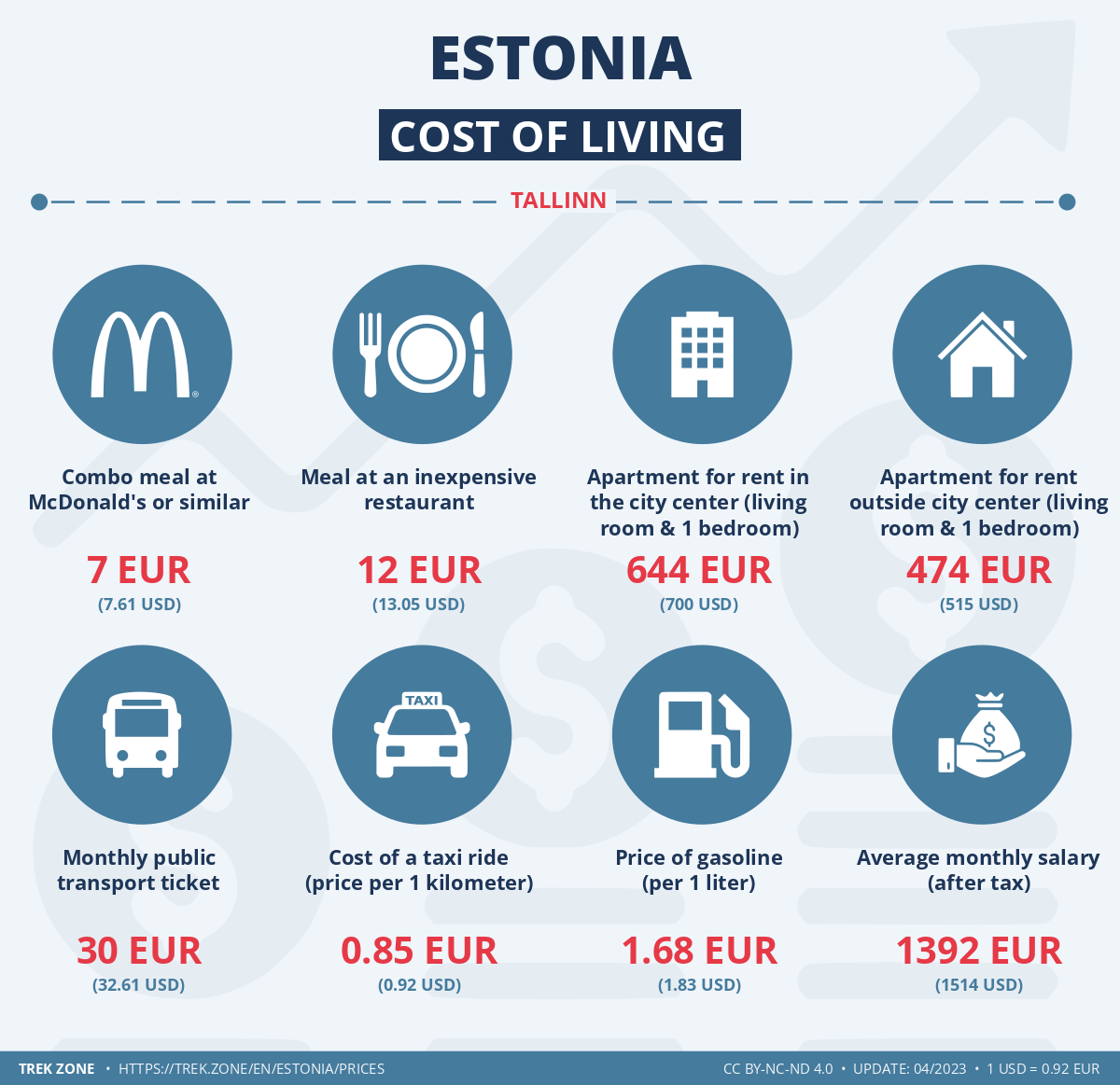
NomadTreneur
How to Travel to Estonia on a Budget
May 4, 2023
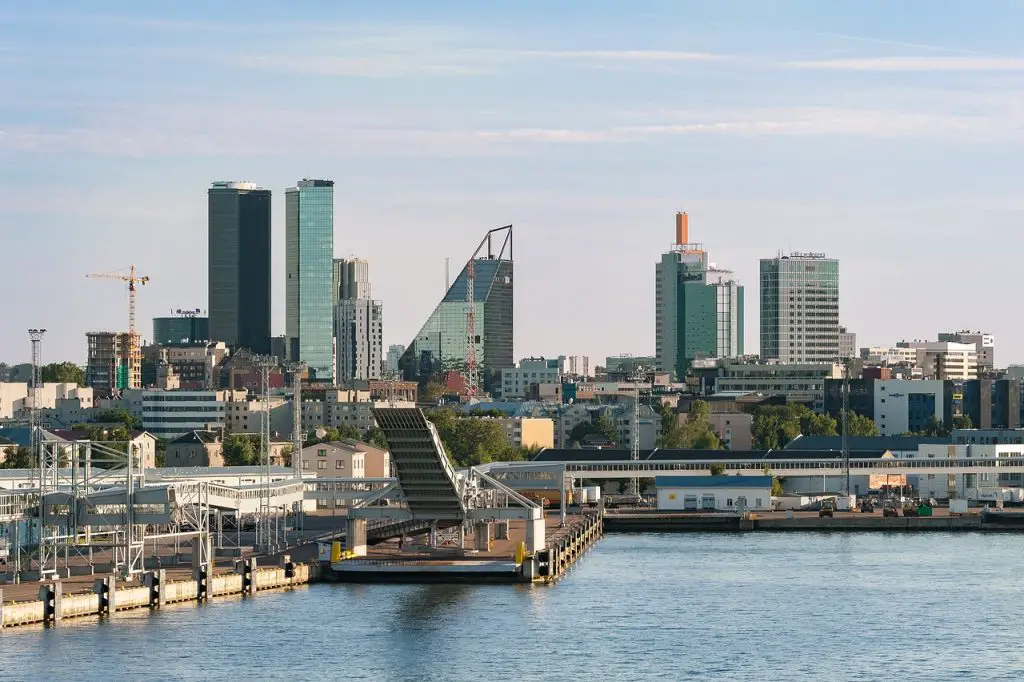
Estonia, a beautiful Baltic gem in Northern Europe, boasts a unique blend of rich history, stunning architecture, and vibrant culture. While it is relatively affordable compared to other European countries, traveling on a budget is always a challenge. In this guide, we will share tips and tricks on how to travel to Estonia on a budget, helping you make the most of your experience without breaking the bank.
Plan your trip during the off-season
One of the best ways to save money when traveling to Estonia is by visiting during the off-season. Peak tourist season in Estonia is from June to August, when the weather is warm and the days are long. However, prices for accommodation and attractions are generally higher during this period. Consider visiting during the shoulder season (April-May or September-October) or even in winter for lower prices and fewer crowds.
Book your flights early and be flexible
Airfare can be one of the most significant expenses when traveling abroad. To save on flights, book your tickets well in advance, as prices tend to increase closer to the departure date. Use flight comparison websites like Skyscanner, Kayak, or Google Flights to find the best deals. Be flexible with your travel dates and consider flying on weekdays, as flights are often cheaper than on weekends.
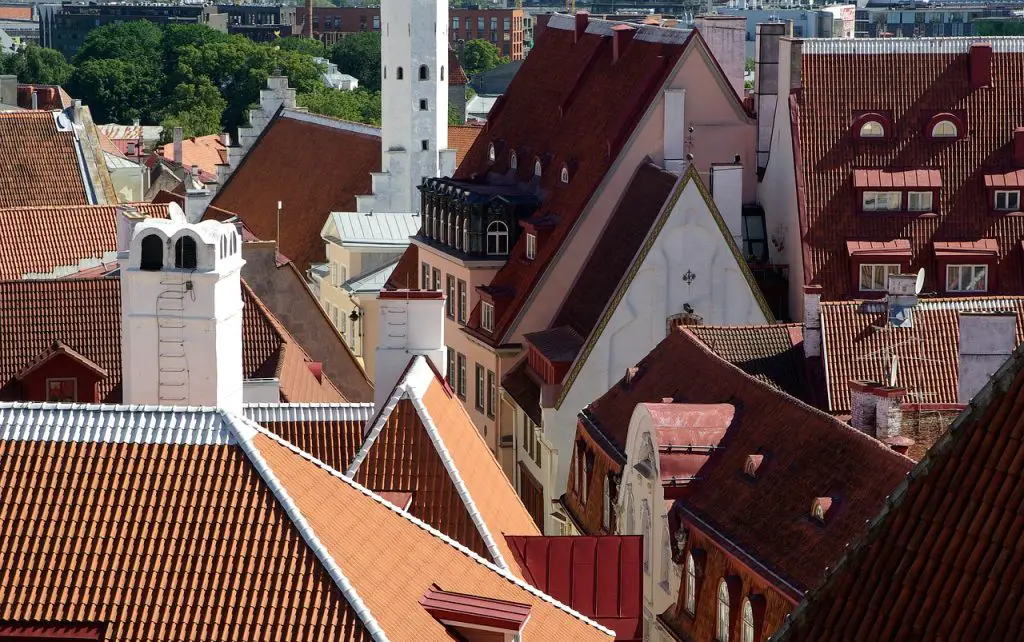
Choose budget accommodations
Accommodation is another significant expense when traveling. To save money, consider staying in budget accommodations like hostels, guesthouses, or budget hotels. Websites like Booking.com, Hostelworld, and Airbnb offer a variety of options to suit your budget. If you’re traveling with a group, consider renting an apartment, as this can be more cost-effective than booking multiple hotel rooms. For a truly budget-friendly experience, consider Couchsurfing, where locals offer travelers a place to stay for free.
Use public transportation
Estonia has a well-developed public transportation system, making it easy and affordable to get around. In Tallinn, the capital city, consider purchasing a Tallinn Card, which provides unlimited access to public transportation, as well as free or discounted entry to many attractions. If you plan to explore other cities or towns, take advantage of Estonia’s affordable bus and train networks. For shorter distances, consider renting a bike, as Estonia has a growing network of bike lanes and paths.
Eat like a local
Eating out in Estonia can be relatively affordable, especially if you avoid touristy areas and dine where the locals eat. Look for places offering daily specials or lunch deals, as these often provide excellent value for money. Popular Estonian dishes include hearty soups, meat and potato-based dishes, and local pastries. Visit local markets to purchase fresh produce and snacks, or prepare your meals if you have access to a kitchen.
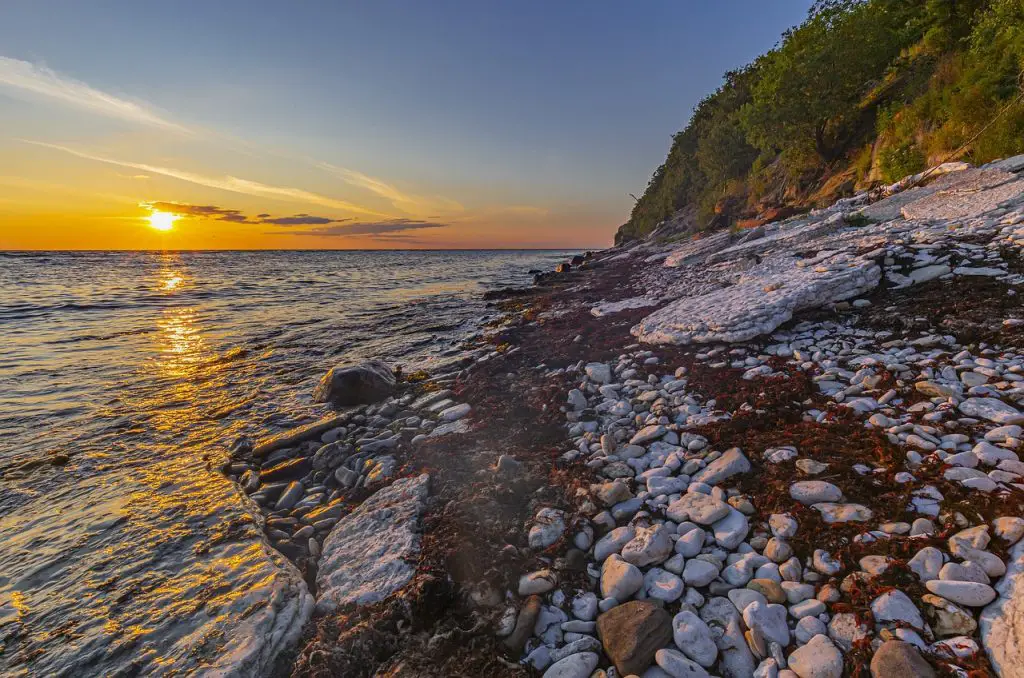
Take advantage of free attractions and activities
Estonia offers numerous free attractions and activities that cater to a variety of interests. In Tallinn, take a self-guided walking tour of the Old Town, a UNESCO World Heritage site with well-preserved medieval buildings and cobblestone streets. Visit the Kadriorg Park and Palace, home to the Kadriorg Art Museum and the President’s residence, where you can stroll through the beautiful gardens and enjoy the Baroque architecture.
Outside Tallinn, explore Estonia’s picturesque countryside and coastal areas, which offer ample opportunities for hiking, bird-watching, and beachcombing. Lahemaa National Park, located east of Tallinn, is a popular destination for nature lovers and offers free access to its trails and visitor centers.
Utilize student, senior, or group discounts
If you are a student, senior citizen, or traveling in a group, take advantage of the discounts available to you. Many attractions, museums, and transportation services in Estonia offer discounted rates for students, seniors, and groups. Be sure to carry a valid ID or student card to present when purchasing tickets or paying for services. These discounts can significantly reduce your overall travel costs, allowing you to enjoy more experiences on a limited budget.
Use free Wi-Fi
Estonia is known for its widespread availability of free Wi-Fi, particularly in urban areas. Make use of this free service to stay connected and save on data costs while traveling. Many cafes, restaurants, hotels, and public spaces offer free Wi-Fi to customers and visitors. This can also help you avoid international roaming charges if you’re traveling from abroad.
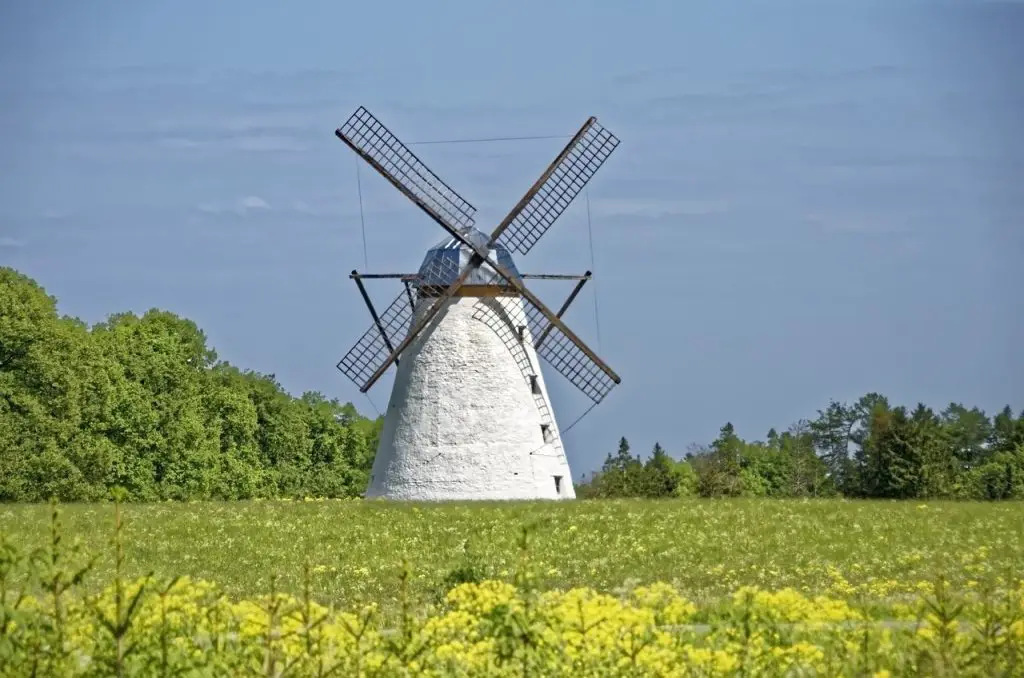
Visit less touristy destinations
Although Tallinn is Estonia’s most popular destination, there are many lesser-known cities and towns worth exploring, often at a lower cost. Consider visiting Tartu, Estonia’s second-largest city, which is home to a historic university, beautiful parks, and a lively cultural scene. Other noteworthy destinations include Pärnu, a charming coastal town known for its sandy beaches and spa culture, and Viljandi, a picturesque town with a rich history and an impressive castle ruin.
By exploring off-the-beaten-path destinations, you can experience authentic Estonian culture, enjoy lower prices, and avoid the crowds that flock to more popular tourist spots.
Set a daily budget and track your expenses
Before embarking on your trip to Estonia, create a daily budget to help you manage your expenses. Allocate funds for accommodation, food, transportation, attractions, and miscellaneous expenses, and do your best to stick to it. Consider using a budgeting app or spreadsheet to track your spending during your trip, making adjustments as needed. This can help you stay on top of your finances and ensure you don’t overspend during your adventure.
Traveling to Estonia on a budget is entirely possible with careful planning and smart choices. By visiting during the off-season, booking flights early, choosing budget accommodations, utilizing public transportation, eating like a local, and taking advantage of free attractions and discounts, you can make the most of your Estonian experience without breaking the bank. So pack your bags, embrace the spirit of adventure, and discover the wonders that Estonia has to offer while sticking to your budget.
most recent

american airlines a319 first class review

american airlines 763 business class review

best all inclusive resorts in bali
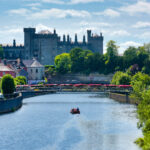
places to stay in kilkenny ireland

american airlines benefits

alaska airlines first class review
nomadtreneur
PH +1 000 000 0000
24 M Drive East Hampton, NY 11937
© {{2023}} Nomadtreneur

Map of Estonia
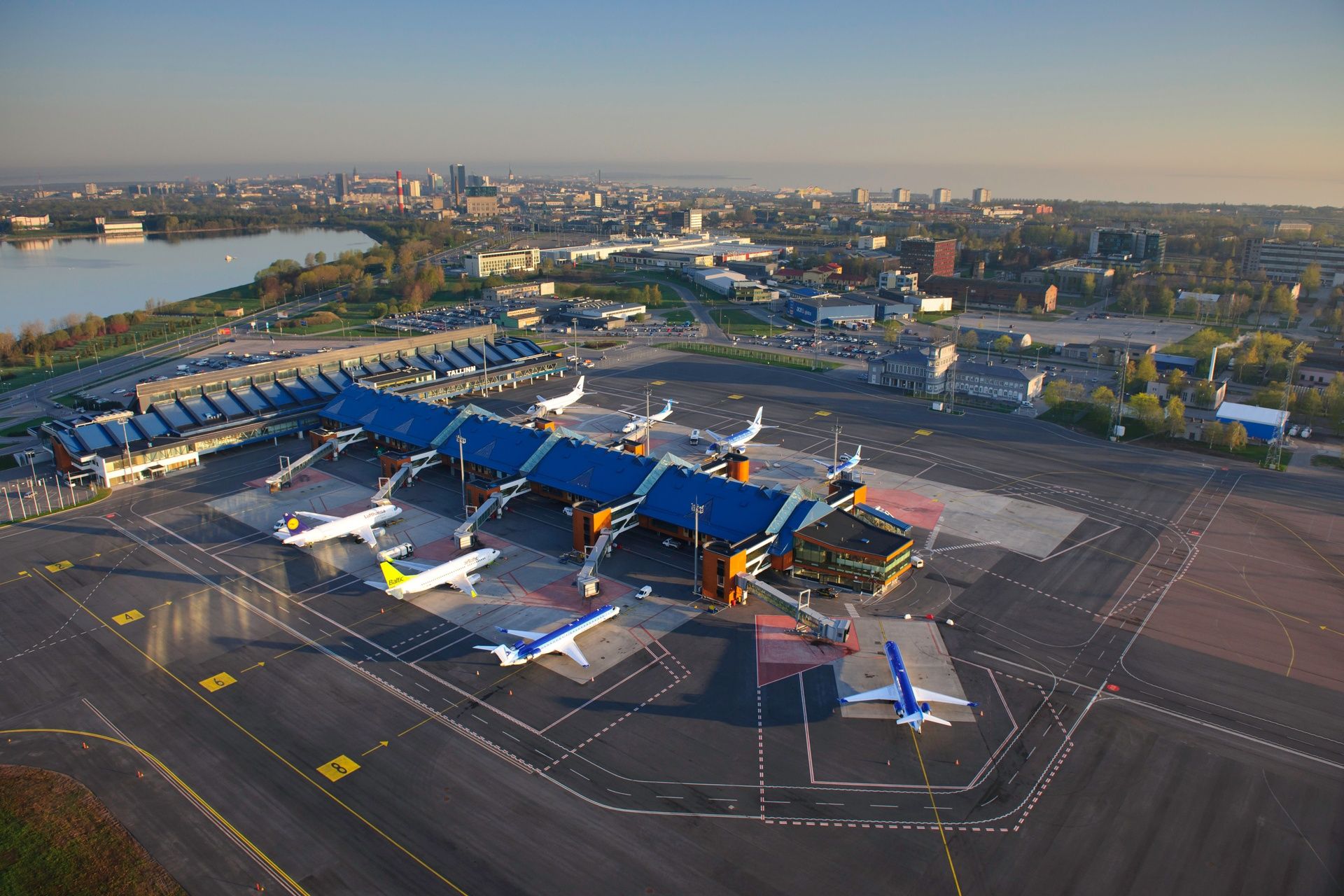
Travel to Estonia
Guide for traveling to estonia by plane, cruise ship, bus, ferry, car or with your own boat..
Estonia is located in northern Europe, bordered on the south by Latvia, on the east by Russia, and Finland to the north over the Baltic Sea. It is possible to get to Estonia by land, water, and air. Regular ferries run between Tallinn, Helsinki, and Stockholm, and landing at Tallinn Airport place you right in the middle of the city. Estonia is a member of the European Union and the Schengen Area.
The flights from Oslo and Stockholm to Tallinn are all under two hours. You can fly from Helsinki to Tallinn in 20 minutes, and from Helsinki to Tartu in a little less than an hour. More information about flight schedules is available on the Tallinn Airport website .
Tallinn Airport is very conveniently located — just 4 kilometers from the city center. You can easily travel to and from the airport by bus or taxi. Buses 2 and 15 travel to the city center from the airport. The buses leave from the airport's lowest level (stop Lennujaam), down the escalator from the arrivals hall.
From Tallinn Airport, you can also catch domestic flights to Kuressaare (the capital of Saaremaa Island), Tartu , and Kärdla (a town on the island of Hiiumaa ).

Source: Tallinn Airport
With a cruise ship
Tallinn is a popular cruise destination, especially during the summer. All main lines crossing the Baltic Sea stop in Tallinn .
In addition to Tallinn, Estonia’s largest island, Saaremaa, is another popular cruise destination in Estonia. The port of Saaremaa is located a 45-minute car ride from Kuressaare, the biggest town on the island.
For more information, please browse the list of all cruise operators currently sailing to Estonia.

Source: visit estonia
Several international coach companies travel to Estonia from central Europe and the Baltics. These are some of the main commercial operators:
- LuxExpress
Further information about international bus schedules is available at T-Pilet .

Source: Renee Altrov
Tallinn port is located a 15-minute walk from the city center. The ferry ride from Helsinki will take around 2-2.5 hours (except for one ferry, which takes four hours). The trip from Stockholm to Tallinn is a 12-hour overnight ferry ride.
The following ferry operators service the lines:
- Eckerö Line
- Viking Line
More information about ferry lines and tickets is available below:
- laevapiletid.ee — can see all ferry ticket options, administrated by Estravel (Estonian travel agency)
- portoftallinn.com

Source: Vaas / Transpordiamet
When driving in Estonia, the following documents should be carried with you:
- Full and valid driving license
- Proof of Insurance
- Proof of ID (passport)
- Proof of ownership (V5C certificate)
Your car will need to be equipped with beam deflectors, a fire extinguisher, and a warning triangle. All vehicles are required to have lights on during the day and night.
Estonia has right-hand traffic. The speed limit in the countryside is 90 km/h and 50 km/h in urban areas unless specified otherwise. During the summer, some highways allow for a maximum of 110 km/h speed. Passengers are required to wear seat belts and lights must be switched on at all times. Estonia has zero tolerance for driving under the influence.
Estonia recognizes driving licenses from countries around the world, please check for specific requirements here .
Foreign vehicles must have third-party liability insurance in Estonia. Vehicles registered in an EEA country can only be insured in that specific country of registration. Vehicles registered in the following countries must be covered by a Green Card as proof of insurance: Albania, Andorra, Azerbaijan, Bosnia and Herzegovina, Israel, Iran, Macedonia, Morocco, Moldova, Montenegro, Serbia, Tunisia, Turkey, Ukraine, Belarus, and Russia.
You can purchase cross-border insurance as an alternative to the Green Card. Those vehicles not registered in EEA or the countries listed above must all be covered with valid cross-border insurance upon arrival to Estonia.

By your own boat
Estonia is dotted with harbors and small marinas, often located in towns and little villages. The shortest route from the northern coast across the Gulf of Finland to Finland is just 25 nautical miles.
A guide to small marinas Registered ports in Estonia

Source: Mart Vares
Interactive Map Of Estonia
Get inspired.
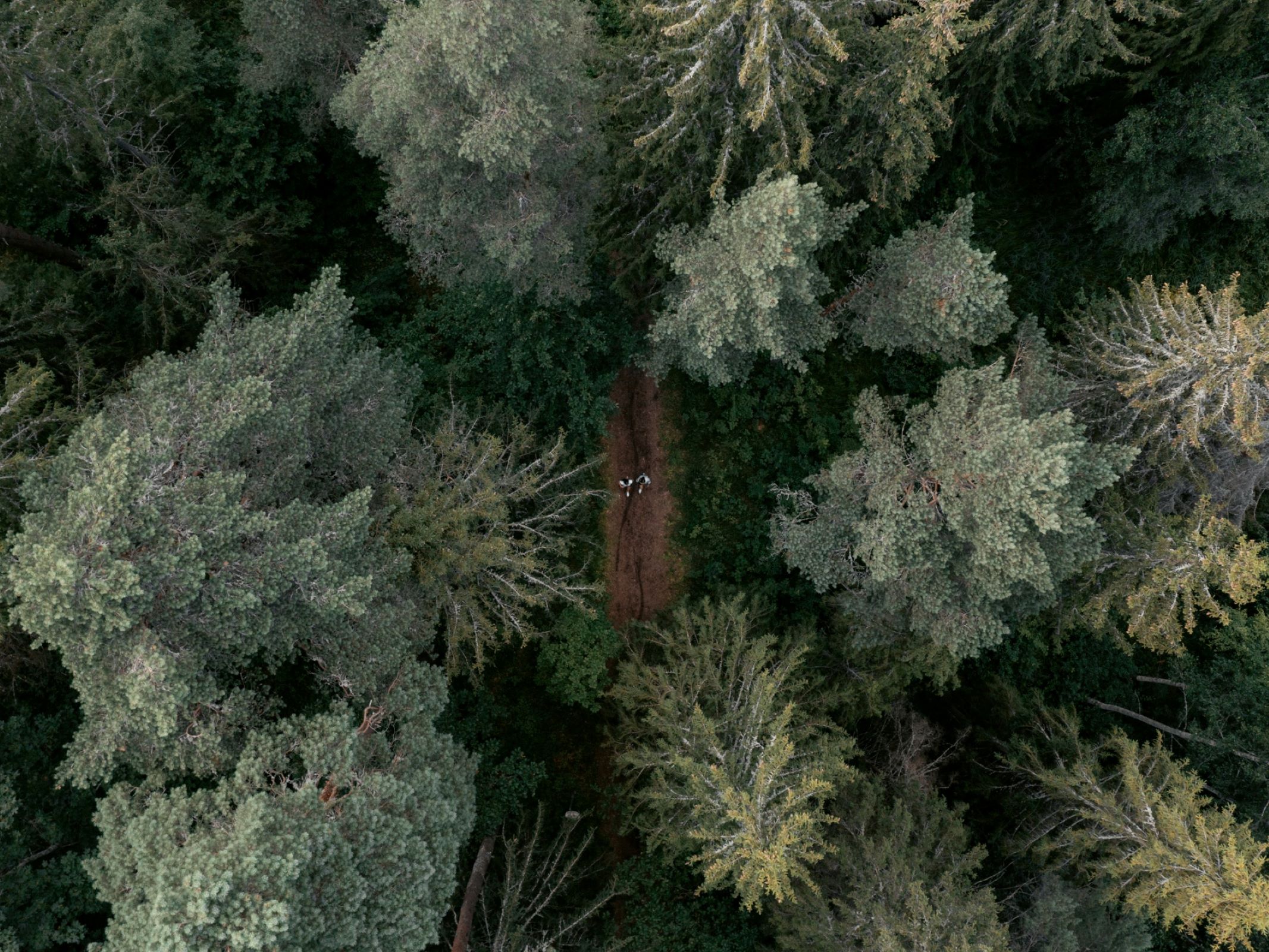
A Brief Introduction to Estonia
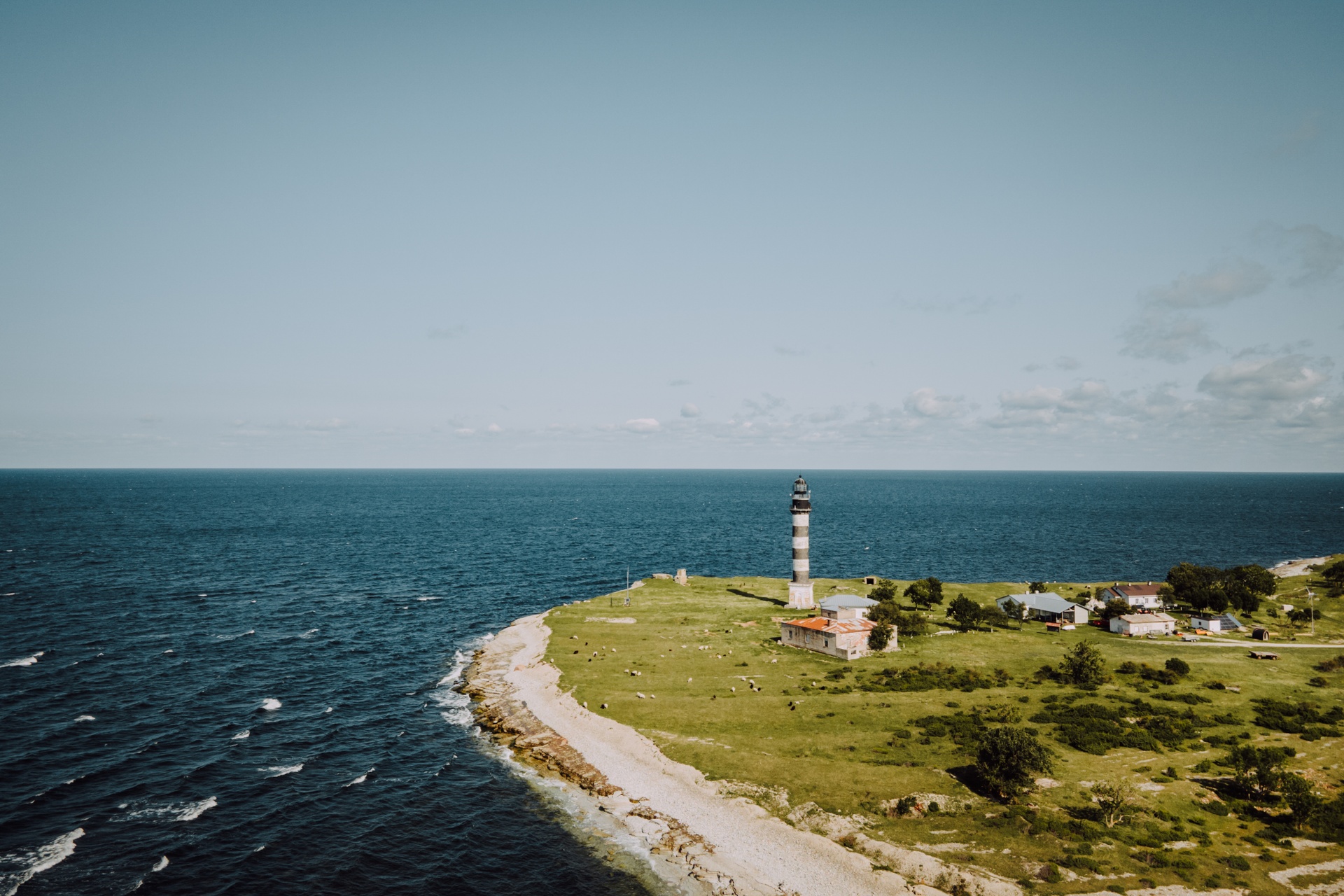
TOP 10 islands to visit this summer
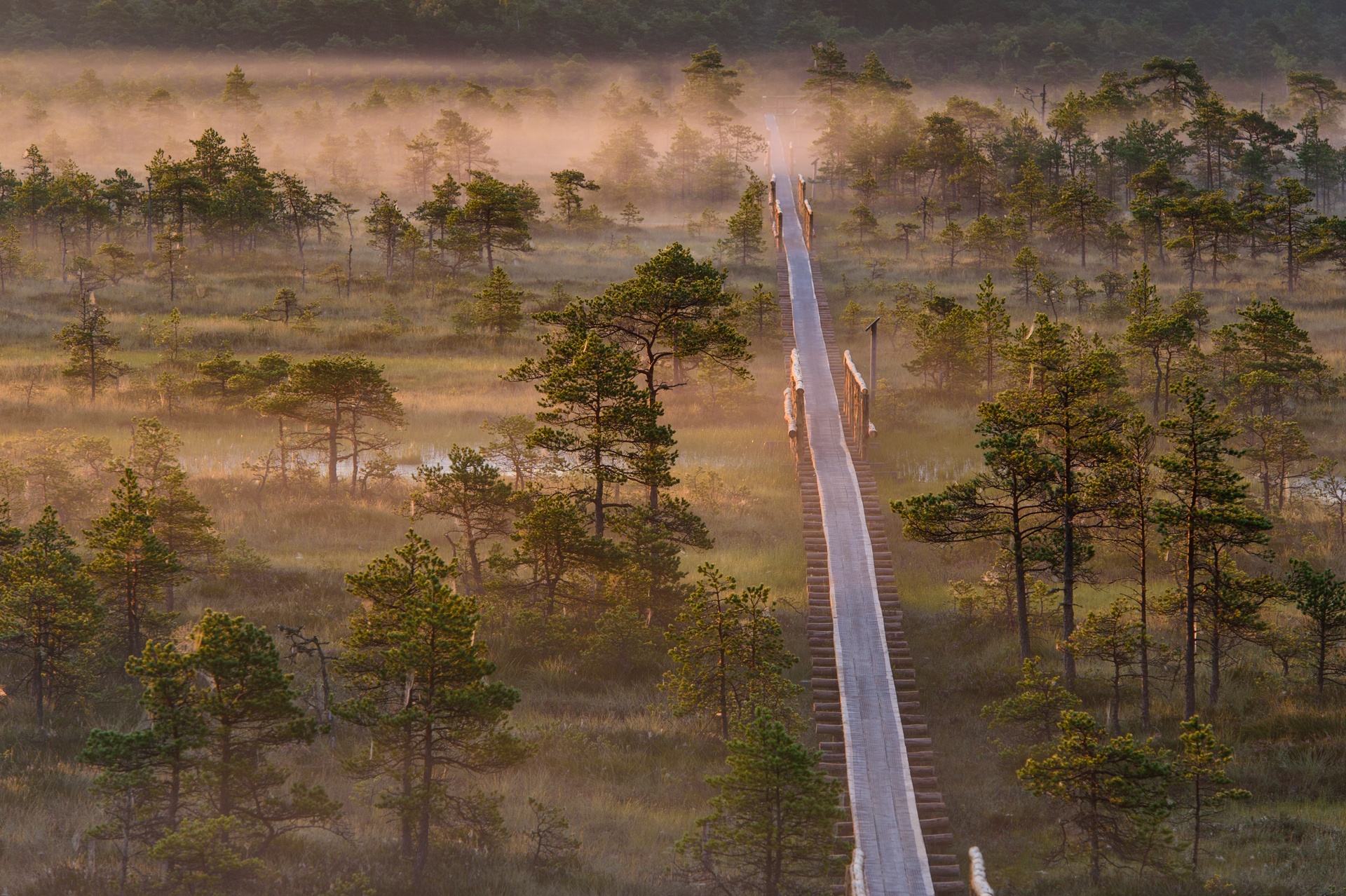
Top 10 hiking trails
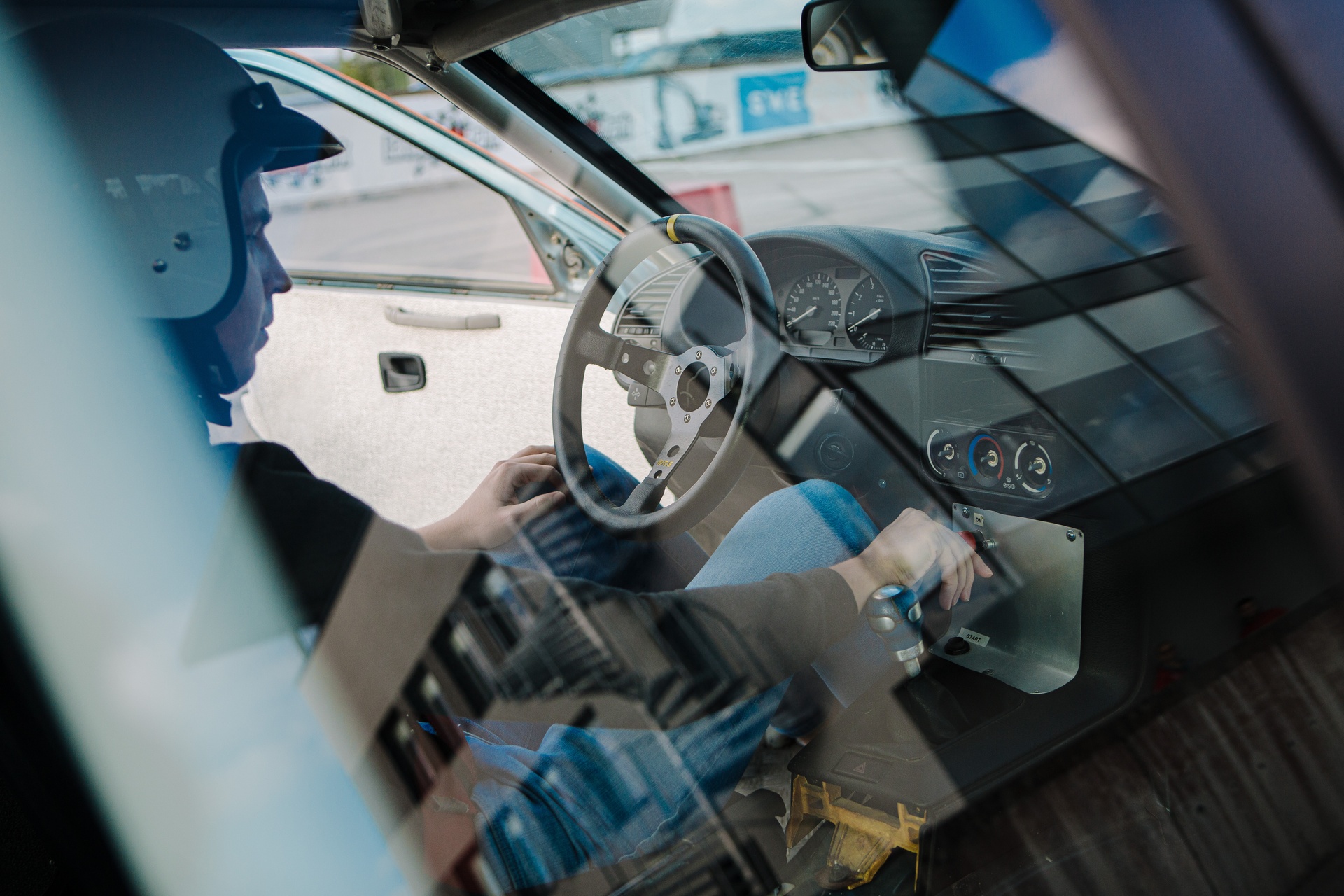
TOP adventure holiday activities in Estonia
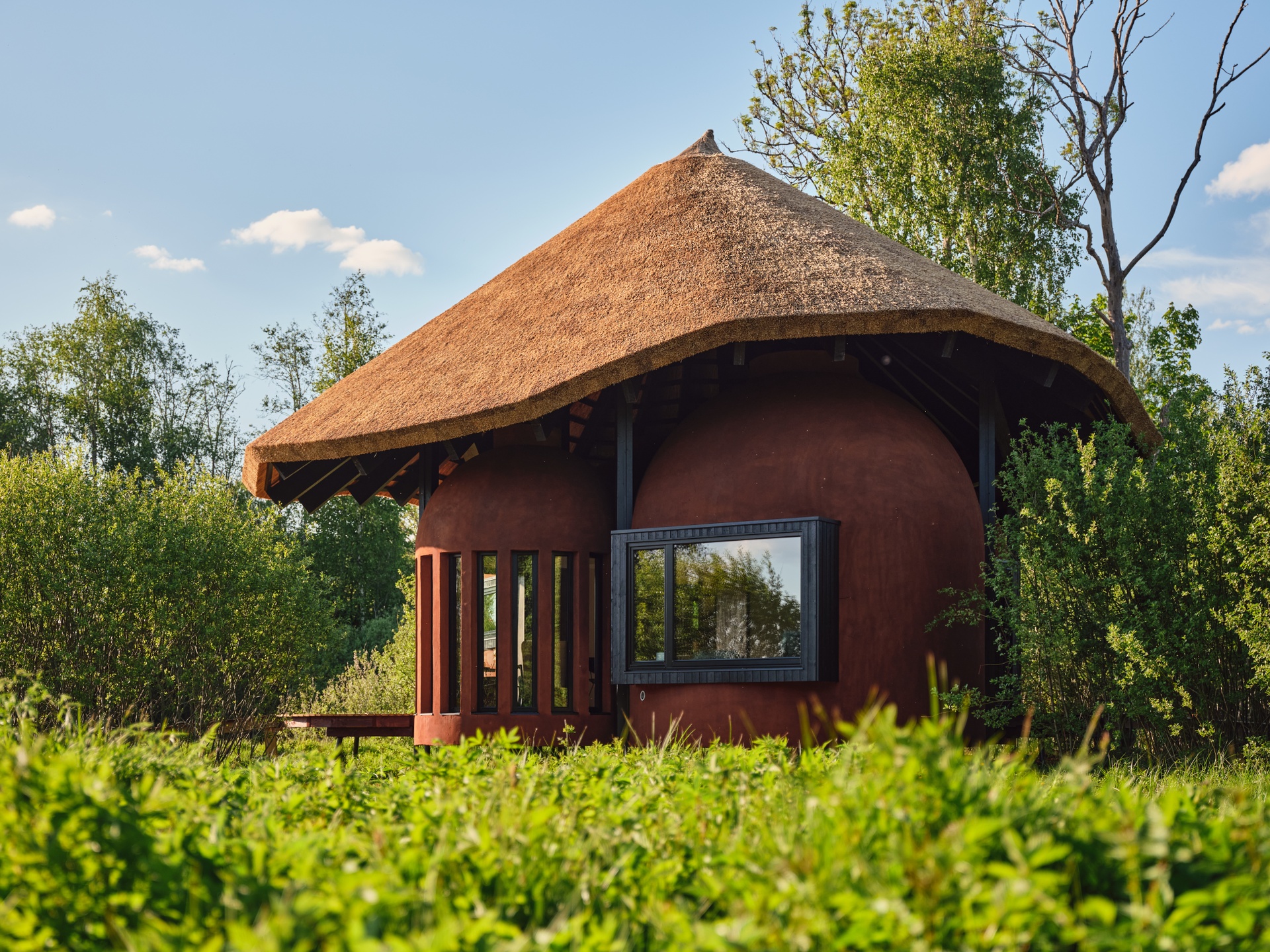
TOP unforgettable places to stay
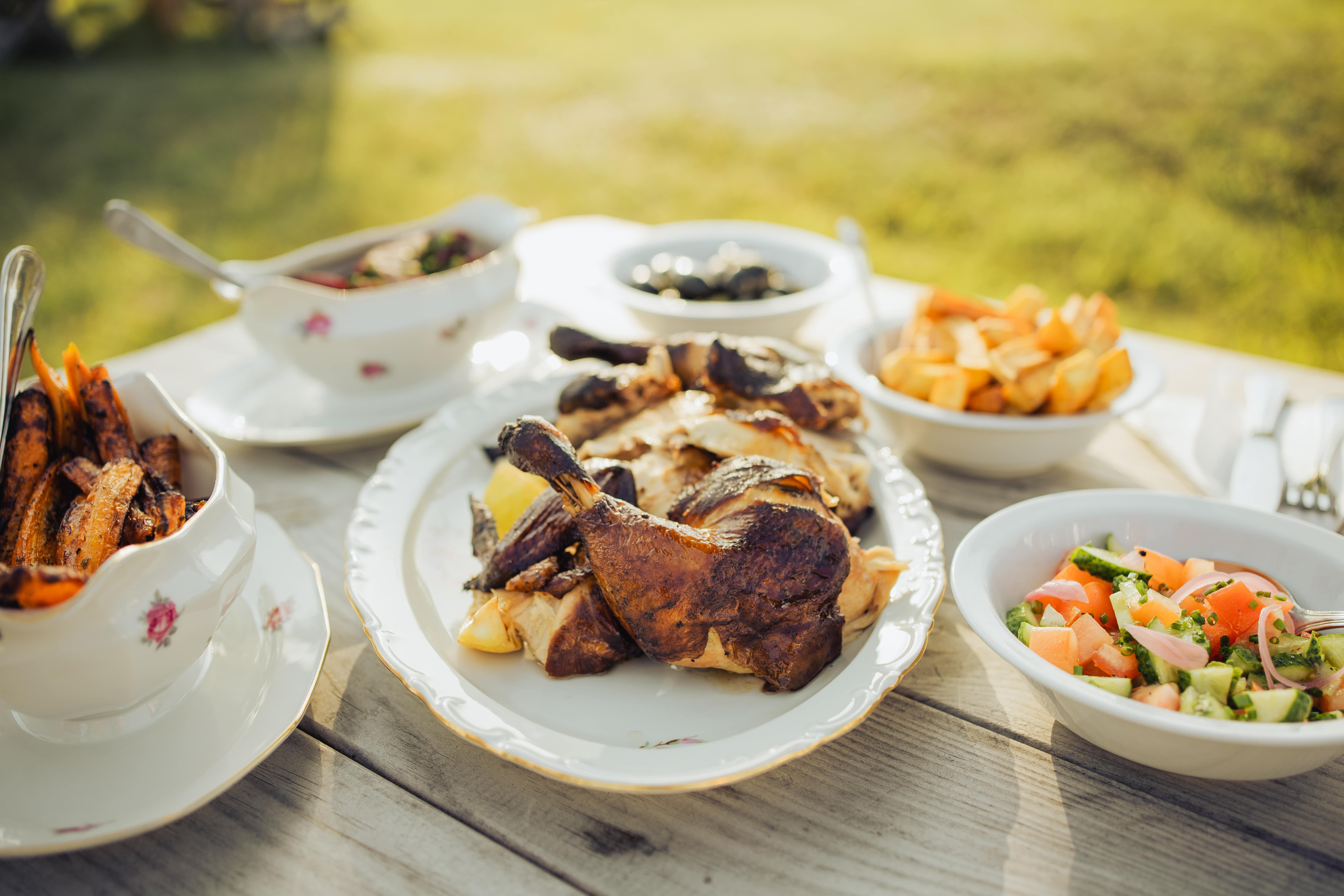
Top restaurants serving traditional Estonian food

TOP Estonian art museums and galleries

Last updated
- Accommodation
- Nature and Activities
- History & Culture
- Health & Wellness
Subscribe to our newsletter!
By signing up, you agree to personal data processing privacy policy .
Book the best hotels in Tallinn - in partnership with booking.com
Compare hotel rates in tallinn and save up to 80%.

Old Town 3BR Apartment Aia 5a

Old Town Deluxe Apartment with fire place.

Homesphere Apartments - Mere Boulevard 8 - 53

Rotermanni hostel 4Floor NO LIFT

Sea view apartment in Viru centre
Tallinn - the estimated travel expenses for food, public transport, attractions entrance and accommodation., how much does a trip to tallinn cost.
Currency in Tallinn is Euro
Tallinn prices guide., if you are travelling alone to tallinn, depending on your expectations, you will pay for an overnight stay from 19 usd (17 eur) for a hostel to 100 usd (94 eur) for a luxury hotel., the other daily costs you have to pay when travelling to tallinn are:.
- Food 7.90 USD (7.40 EUR)
- Meals in restaurants 21 USD (19 EUR)
- Bottled water 1.00 USD (0.98 EUR)
- Local transportation 8.60 USD (8.00 EUR)
- Entrance tickets 32 USD (30 EUR)
- Alcoholic beverages 4.60 USD (4.30 EUR)
As you can see - a stay for a few days in Tallinn can cost 191 USD (179 EUR) or 874 USD (815 EUR) , depending on whether you are a frugal tourist or you are planning to spend a luxurious holiday in Tallinn.
How much Euro should I have for one week in Tallinn?
If you want to spend a week in Tallinn the cost of your stay will be:
- 447 USD (417 EUR) - a cheap stay for 7 days in Tallinn
- 577 USD (539 EUR) - a budget travel for 7 days in Tallinn
- 859 USD (802 EUR) for a one week of comfortable stay in Tallinn
- 2,000 USD (1,900 EUR) for a week of luxury holidays in Tallinn
How much money do I need per day to stay in Tallinn?
If you are travelling alone to Tallinn, 64 USD a day should be enough. If you choose a hotel for your stay in Tallinn, the price will rise to 82 USD. A couple will have to pay around 140 USD for one day in Tallinn. A family with two children should have 250 USD for one day stay in Tallinn.
How to visit Tallinn on a low budget? How to travel Tallinn cheaply? How to save money while travelling in Tallinn?
In order not to exceed reasonable expenses during a trip to Tallinn, which we estimate at 82 USD (77 EUR) for a one day, you must comply with the following rules:
- Choose to stay in a hostel (19 USD (17 EUR) ) or in a cheap hotel (18 USD (17 EUR) ).
- Use public transport. The price for a one-way ticket is 2.10 USD (2.00 EUR) and for a monthly pass 32 USD (30 EUR) .
- Make your own breakfast and own dinner. Daily shopping cost in the shop is around 7.90 USD (7.40 EUR) in Tallinn.
- Choose restaurants outside the city centre and close to tourist attractions. Meal in a cheap restaurant cost around 13 USD (12 EUR) in Tallinn. McMeal at McDonalds (or equivalent meal in other fastfood restaurant) costs approximately 8.60 USD (8.00 EUR) .
Car-related costs are mainly fuel, road tolls and parking fees. Of course, the price depends on the purpose of the journey and energy efficiency of a vehicle.
In Tallinn, you will pay for the fuel accordingly:
- Petrol price in Tallinn is around: 1.80 USD (1.70 EUR)
- Diesel fuel price in Tallinn is around: 1.70 USD (1.60 EUR)
- 1kg sausage: 17 USD (16 EUR)
- 0,5 kg bread: 1.30 USD (1.20 EUR)
- 10 eggs: 2.70 USD (2.50 EUR)
- 1kg cheese: 11 USD (9.80 EUR)
- 1 liter milk: 1.20 USD (1.10 EUR)
- 1 kg apples: 1.70 USD (1.60 EUR)
- Bottle of local beer (0,5 liter): 5.40 USD (5.00 EUR)
Car rental prices in Tallinn
- What is the average price for a car rental in Tallinn?
- How much does it typically cost to rent a car in Tallinn?
- Is it cheaper to rent a car for a week in Tallinn?
What is most famous in Tallinn? How much does an average entrance to travel attractions in Tallinn cost?
The most important tourist attractions in tallinn that we recommend:, the museums worth a visit in tallinn:, on warmer days, we recommend walking in parks in tallinn. below is a list of the largest and most interesting parks in tallinn. parks in tallinn:, alcohol prices in tallinn, tallinn - whisky prices comparison, tallinn - rum prices comparison, tallinn - vodka prices comparison, tallinn - gin prices comparison, view map of hotels and accommodation.
Old Town Apartment with infrared sauna - Vene

Jerry Daniels
- travel writer and photographer (33 years old, zodiac sign: aquarius).

- X (Twitter)

Budget for the Baltics – Our Expenses for 19 Days of Travel
One type of post we both find very useful is budget posts. When trying to figure out how much money we need to save for a trip, it’s helpful to see how much other travellers have spent. That’s also why we keep a detailed record of our expenses – we want to know how expensive different countries are.
The same applied when we went to the Baltics. We wrote down every single cent we spent. And now we’d like to share this budget with you. Hopefully, it will help you plan your own trip.
We’ll also be sharing lots of great advice on how to save money, so you don’t have to break your bank for travelling to the Baltics.
Table of Contents
Here’s a breakdown of our expenses in the Baltics. In total, we spent 1100 € per person. Since we travelled for 19 days, that means we spent 57.89 € per person per day.

Compared to many other European countries, we found the Baltics very affordable. Food was cheap, we didn’t spend much on transport as distances were short, and we also found decent accommodation everywhere we went.
Our itinerary

We started our trip in Vilnius, the capital of Lithuania. After spending two days here, and also exploring the nearby castle of Trakai , we moved on to the coast. On our way, we stopped in the Hill of Crosses, a place, unlike anything we had ever seen before. We then had a few days to explore Klaipeda and the Curonian Spit .
From Lithuania, we moved north to Latvia. We based ourselves in Riga, which, with its central location, is perfect for exploring the country. After spending a few days exploring the capital, we went on day trips to see Sigulda, the Gauja National Park and the medieval town of Cesis .

Finally, it was time to travel to Estonia. We stayed here longest, starting in Tartu before moving on to Pärnu at the Baltic coast. After a short trip to Saaremaa , Estonia’s biggest island, we ended up in Tallinn . From here, we eventually took the ferry to Helsinki and travelled on to Finland, but we won’t include that part of our trip in this post.
Here, we’re only going to talk about our expenses while travelling the Baltics, so you know how much money you need for a similar trip.
Breakdown by categories
Accommodation.

We spent 370 € per person on accommodation, which breaks down to 19.47 € per person per night.
During our trip, we always had our own room with a private bathroom. We used a mixture of guest houses, hotels and AirBNBs. Especially the latter was often an excellent value.
One of our primary concerns was doing laundry. In summer, it’s easy to wash clothes in the sink as they usually dry overnight. But as we were travelling in winter, this was not a great option. Therefore, we made sure to rent an apartment equipped with a washing machine from time to time. The tumble dry function was usually enough to dry the clothes to a point where they could air dry within a day or two.
Besides that, a great way of saving money is to make sure that you have a kitchen in your apartment or guesthouse. That way, you don’t need to go out for breakfast every morning and can save some money there.

As already mentioned, we saved some money by having breakfast in our own apartment. Grocery shopping is usually affordable in the Baltics, no matter where you go.
For lunch and dinner, we’d usually go to a local restaurant. We never paid too much, and we wanted to sample as much local food as we could. Nineteen days sounds like a lot, but it really isn’t when you visit three countries. Therefore, we often ordered a few dishes and shared them between us.
In total, we spent 384 € per person on food, which breaks down to 20.21 € per person per day. Food is probably the category where you can save the most money if you need to. Look for accommodation with a kitchen and then buy groceries. By cooking your meals, I am sure that you could cut these expenses in half.

We found local transport in the Baltics very affordable. The countries have a lot to offer, but distances are short, so you’re not going to have to pay too much.
In Lithuania, we went by train to get from Vilnius to Klaipeda. Besides that, we mostly relied on the local buses which connect all towns and cities in the Baltics. Most of the longer-distance buses were very comfortable, with big, reclinable seats and sometimes even our own private TV screens.
Within the city, we usually walked. If that wasn’t an option, local transport was always affordable.
In total, we spent 122 € per person on local transport.
Sightseeing

Depending on where we travel, we spend a lot of money on entrance tickets and activities. I always figure that if I’ve come that far, I don’t want to miss out on the main attractions just to save a few euros.
The Baltics were surprisingly cheap. Our biggest expense was the Maritime Museum in Tallinn, for which we paid 15€ each. Besides that, we mostly spent less than 10€ and often even far less than that.
The good news is that if you’re travelling on a budget and want to save money, you will find lots of free activities. Walking through all those stunning medieval towns won’t cost you anything, for example. Or you can enjoy the coastline for free or go for a hike in one of the many national parks.
You can also save money by not joining organised tours. When we visited the Trakai island castle, for example, we skipped the tour and went by public transport , which saved us quite a bit of money.
Our total expenses for entrance tickets were 137 € per person.

In this category, we sum up everything that doesn’t fall into one of the big categories above. This includes souvenirs, for example. Daniel collects keychains from all the places we visited, and I like to buy a magnet in every country I go to.
We also had to buy an umbrella in Vilnius and ended up getting woollen sweaters in Tallinn. As we were going on to Lapland afterwards, these turned out to be an excellent investment.
In total, a sum of 87€ falls into this “other” category.
By the way, we did not spend any money on parties and going out, since we were not interested in that. If you want to go to clubs and bars, you should budget extra money. If not, you should be able to get by with our travel budget above.
Oh, and remember to get travel insurance. We didn’t need to include that since we’re covered through our EU health insurance card. But if you come from outside the EU, you should take that extra expense into account.
Breakdown by country
So what if you only want to visit one or two of the Baltic states? Are the prices the same everywhere?

In general, we did not see substantial price differences between the countries. Estonia turned out to be a bit more expensive than Latvia and Lithuania. This is especially true for Tallinn, so you should budget a bit more if you only want to visit Estonia’s capital.

The first country we went to was Lithuania. We were here for a total of five days and spent 273 € per person. That means that we paid 54.60 € per person per day.
Lithuania was the country in which we found our cheapest accommodation. For those five nights, we only paid a total of 68 € per person. That’s just a bit more than 13 € per night. Compare that to Estonia, where we spent more than 22 € per night!
Our biggest expense in Lithuania was food, thanks to the wonderful Etno Dvaras restaurants. This chain of restaurants offers traditional Lithuanian food, and we came here regularly to try as many dishes as we could.
Sightseeing was very cheap with only 20 € spent on entrance tickets. And we paid a total of 63 € on transport, which includes renting a taxi to go to the Hill of Crosses, with the taxi driver waiting there for us until we had finished visiting the area.

We spent as much time in Latvia as we did in Lithuania. During our five incredible days, we paid a total of 256 € per person (51.20 € per person per day), which makes it the cheapest of all three Baltic countries.
We based ourselves in Riga for those five days. This was convenient, as we did not have to pack our bags regularly and could visit the country on day trips. The big disadvantage was that hotels in Riga are not cheap. We paid a total of 98 € on accommodation, which is almost 20 € per person per day.
Food was a bit cheaper than in Lithuania, and we only paid 77 € for 5 days. We also didn’t pay much for transport and only spent 14 €.
As for sightseeing, entrance tickets were a bit more expensive than in Lithuania, but at 45 € in total for five days still affordable.

We stayed in Estonia for nine days, which is longer than the two previous countries. Plus, Estonia turned out to be the most expensive of the Baltic states, and we paid a total of 571 €. This breaks down to 63.44 € per person per night.
As already mentioned above, Estonia was the most expensive country for accommodation. We spent a total of 204 €, which is more than 22 € per person per night. Tallinn was more costly than the rest of the country. Also, we decided to splurge on a spa hotel in Kuressaare, on Estonia’s biggest island .

We spent almost exactly as much money on Estonian food as we did on accommodation, with 205 € per person.
Transport was surprisingly cheap in Estonia, and we only spent 45 € per person. And while we paid more for sightseeing than in any other country, we only spent 72 €.
Even the woollen sweaters we bought weren’t very expensive, which is why only 45 € fall into the “other” category.
We hope that the above numbers will help you in planning your own trip. You should now have an overview of how much it costs to travel to the Baltics. Of course, everyone’s travel style is different, so depending on the things you enjoy, you might want to add or subtract a bit.
If you’re planning on travelling to the Baltics, you’ll find plenty of useful resources on this blog. Check out the following, which will be helpful for your trip:
- What to see in Tallinn – 15 amazing sights you shouldn’t miss
- How to visit the Curonian Spit – Lithuania’s unique UNESCO World Heritage Site
- The best things to do in Cesis – Latvia’s cutest medieval town
- How to spend a day in Kuressaare on Estonia’s biggest island
- Visit Klaipeda and explore Lithuania’s west coast
We have many more posts ready for you that you can all find on our destinations page. Also, if you have any questions, please leave us a comment. We’ll be happy to help you.
Like it? Pin it!

Ilona is a world traveller passionate about sharing her experiences and giving advice to fellow travellers. Having visited over 70 countries, she is always excited about her next trip.
Related Posts
Jeonju choco pie: everything you need to know, how to get to gamcheon culture village & unmissable things to do there, zurich to liechtenstein day trip – your complete guide, write a comment cancel reply.
Save my name, email, and website in this browser for the next time I comment.
Notify me of follow-up comments by email.
Notify me of new posts by email.
Cookie consent notice
Privacy overview.
Necessary cookies are absolutely essential for the website to function properly. This category only includes cookies that ensures basic functionalities and security features of the website. These cookies do not store any personal information.
Advertisement cookies help us provide our visitors with relevant ads and marketing campaigns.
Analytics cookies help us understand how our visitors interact with the website. It helps us understand the number of visitors, where the visitors are coming from, and the pages they navigate. The cookies collect this data and are reported anonymously.
Preference cookies are used to store user preferences to provide them with content that is customized accordingly. This includes the language of the website or the location of the visitor.
Travel expenses in Estonia
The Bezala travel expense app allows you to apply for local per diems and mileage allowances defined by the Estonian Tax Office.
In Estonia, Bezala supports VAT rates, expense reimbursements, mileage allowances, and per diems.
Mileage allowance in Estonia for the year 2024
When driving your own car for business use, the tax-exempt mileage allowance is 0.30€ / km.
You can claim for mileage allowance in Estonia with Bezala app.
Per Diem in Estonia for the year 2024
In Estonia, tax-exempt per diems are only paid to reimburse costs for business travel abroad.
Companies can pay per diems between 22.37 € and 50 € per day. However, the maximum amount of 50 € can only be paid for the first 15 days of travel. After that, the maximum amount is 32 € per day. However, usually companies pay empoyees 32€ per day from the first day.
In Estonia, a full travel day is any travel day that starts before 9 pm. The partial per diem payments are not specified. Per diem will be paid from the day of the return if the day ends after 3 am.
Deductions from per diems
The Estonian tax administration does not specify how the employer-provided meals on the business trip affect the paid per diem paid to the employee. However, a common practice is to make a 15 % deduction for one meal served and a 30 % deduction for two meals to the paid per diem.
Bezala supports per diems in Estonia, including the possible deductions.
Bezala – Europe's most automated expense software
Your team can easily file Receipts, Mileages and Per Diems and you can Approve them with one click. We'll remind your employees of missing credit card receipts and automatically take care of your accounting.
Integrations
Bezala has an integration to USA based ERP system NetSuite . In additional, you can create and modify csv files and we will send them directly to an SFTP server or e-mail. Check out our integrations .
Recent news
The company settings page will be clarified, bezala news 4/2024, bezala news 3/2024.
- Search Please fill out this field.
- Manage Your Subscription
- Give a Gift Subscription
- Newsletters
- Sweepstakes
How I Took My Family of 3 on an Epic 3-week Vacation in Jamaica for About $4,000 — Including Flights
Here's how we did it.
Evie Carrick is a writer and editor who’s lived in five countries and visited well over 50. She now splits her time between Colorado and Paris, ensuring she doesn't have to live without skiing or L'As du Fallafel.
:max_bytes(150000):strip_icc():format(webp)/evie-carrick-df91be43396540c492c4141c56a71a9e.jpg)
Eve Carrick/Travel + Leisure
The drive from Montego Bay was supposed to take four hours, but five hours in, it was clear Google Maps didn’t account for the fact that the last 12 miles was an unpaved and potholed single-lane road.
Our rental car (a little Mazda Demio) and driver (my husband) were tasked with dodging potholes, pulling over every time a vehicle came from the other direction and letting teens zip past on their motorbikes. It was dark and our arrival window for the Airbnb was long gone. Oh, and there was a screaming baby in the back seat.
It was our first trip as a family of three. My daughter was a fresh 6 months, with a brand-new passport , and we were in Jamaica. But as you might have gathered, we weren’t headed to an all-inclusive resort in Negril or Montego Bay, like many families do.
Eve Carrick/Travel + Leisure
I take great pride in my ability to get off the beaten path and save a buck, and I was determined to not let the fact that I now had a baby change that. Plus, our friend who grew up on the island promised our final destination — Boston Bay, on the far eastern side of the island — would be worth it.
The almost six-hour journey from the Montego Bay airport to the far eastern coast of Jamaica was brutal, but Boston Bay was the paradise our friend guaranteed. Clean beaches , great surf, and quiet nights. And after a day in the water, the drive was a distant memory.
Here’s how we made this trip happen on a budget, spending a little over $4,000 for three people to spend three weeks in paradise.
We booked flights a month in advance, used miles, and didn’t have to pay for the baby.
Cost: $1,656
In our family, booking last-minute flights is the norm. That, paired with the fact that we live six hours from the nearest international airport, usually means we pay more for flights. However, for this trip, we had two major wins: I had some flight miles , which shaved off a few hundred bucks, and my daughter — who was 6 months old — flew for free on my lap.
We rented a car, which ended up being a major expense.
We booked the cheapest car on the island from a small rental company. The total for three weeks was $340 — a steal. Of course, like many things that are too good to be true, the online cost didn’t match the actual price. After admitting that, yes, we did need insurance, we forked over $750. It was an unexpected expense, but there was no way around it. We drove the car daily.
We split our time between two Airbnbs.
Cost: $1,010
We stayed in two different Airbnbs during our trip, both in the Boston Bay area. The first had a queen bed and a crib and the second had two queen beds (we utilized a pillow barrier in the latter). An Airbnb was key because we ate breakfast and dinner at home every day — another money-saving tip.
Related: The Best Times to Visit Jamaica, According to Local Experts
We rarely went out to eat, and when we did, it was for lunch.
Cost: Approximately $900
Our food costs were wonderfully low thanks to the fact that there aren’t many restaurants in Boston Bay and we had a little human who needed to be in bed by 7 p.m. For breakfast, we ate yogurt and tropical fruit and did lots of pasta for dinner. Lunch was typically a PB&J sandwich eaten on the beach.
That said, it was ackee season when we arrived, so we enjoyed a few nice meals at Aya Naturals and visited several of the area’s famous Jamaican jerk stands, where jerk cooking was invented.
All in all, we spent around $95 a day on food and lodging, plus flights and a rental car. The total trip cost was $4,316.
We spent a full 20 days in Jamaica, which helped offset the cost of flights and the 20-day car rental. We had such a great time, we’re planning to do it again this fall — this time with a toddler.
Related Articles
These are the best solo travel destinations for 2024

Solo travel remains a popular trend throughout 2024, but some places are better to visit when you're alone than others.
If you want to plan a trip for yourself and aren't sure where to go, a new study has revealed some of the best solo travel destinations around the world right now.
The research by Ubuy considered key metrics such as the Safety Index, budget-friendly dining choices, the average cost of a one-night hotel stay plus activities listed on TripAdvisor, and Walk Score.
Nearly half of the best solo travel cities are located in Asia, but one Aussie city did make the list.
Here are the top 10...
- Solo Travel
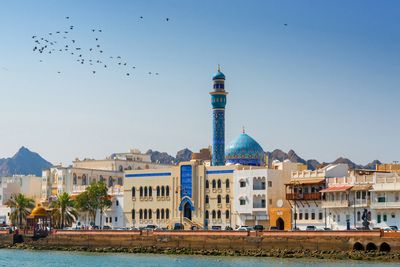
10. Muskat, Oman
Muscat, Oman, kicks off the list in 10th place with a score of 79.8. Muscat offers a great mix of activities while still being great value for money.
It has the most affordable food and hotel options, making it a great place to enjoy oneself.
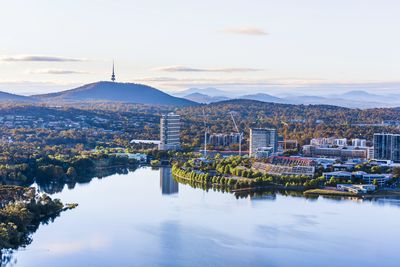
9. Canberra, Australia
Canberra, Australia, is the ninth city for solo travel on the list, with a composite score of 82.7.
Here, a meal at an inexpensive restaurant, on average, costs $AU39, the highest on the list, yet it offers a more affordable options for one one-night stay compared to some of the higher ranked places.

8. Helsinki, Finland
Helsinki, Finland, is eighth on the list of the best cities for solo travel, with a composite score of 85.2.
Like Munich, Helsinki also has an almost perfect walkability score of 99. The city offers over 1,000 attractions listed on TripAdvisor.
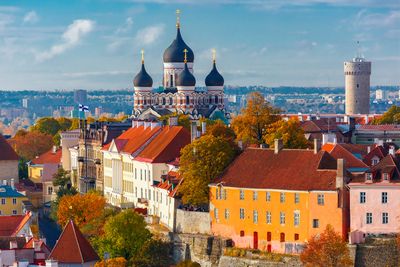
7. Tallinn, Estonia
The seventh location on the solo travel bucket list is Tallinn, Estonia, scoring 87. The city is safe for solo travellers and offers low-cost food and hotel options.
A one-day hotel stay averages around $140, making it more affordable than Luxembourg.
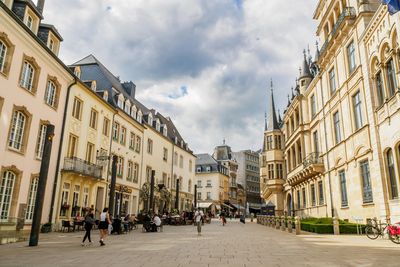
6. Luxembourg
Following behind is Luxembourg, one of the best cities in Europe for solo travel, with a composite score of 87.6.
Aside from Hong Kong, Luxemburg is the second city with a perfect 100 walkability score, with 1000 things to do listed on TripAdvisor.

5. Munich, Germany
Munich, Germany, rounds out the top five cities for solo travel with a composite score of 88.1.
The city is safe and highly pedestrian-friendly, having an almost perfect walkability score of 99. In Munich, a meal at an inexpensive restaurant will cost around $24.
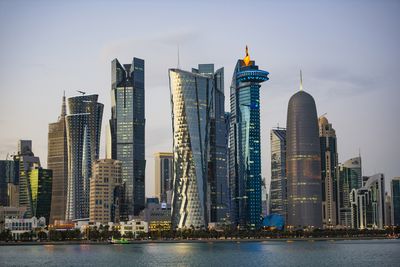
4. Doha, Qatar
The fourth best location on the solo travel list is Doha, Qatar, with a composite score of 89.5.
This city is the more budget-friendly among the top five, offering low-cost options for food and drinks, making it one of the most affordable destinations also on the list.
On average, a one-night hotel stay with a beach view costs $165.

3. Abu Dhabi, UAE
Abu Dhabi, United Arab Emirates, is the third best location for those looking for a solo getaway, scoring 90.8.
The city is safe for solo travellers, as it has the highest safety score on the list, 88. In Abu Dhabi, a one-night hotel stay with a beach view costs $330.
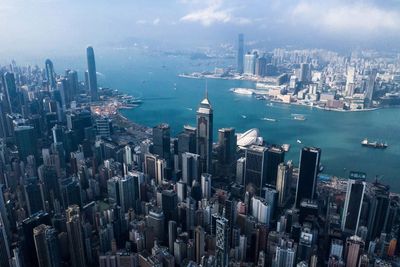
2. Hong Kong
Hong Kong is the second-best city to take a solo trip, with a composite score of 92.0.
Hong Kong's local food scene is slightly higher, with dining in inexpensive restaurants costing around $13.
The average cost of a one-night hotel stay is $210, making Hong Kong an attractive Asian destination for solo travellers.

1. Taipei, Taiwan
The best city for solo travel is Taipei, Taiwan, with a composite score of 95.7. Navigating the city alone is easy due to its high safety and walkability scores, making it an ideal choice for solo travellers.
The city offers budget-friendly dining choices, with meals at inexpensive restaurants costing around $9, which is one of the lowest meal costs among the top destinations.
We've got cookies to analyse traffic, remember your preferences, and optimise your experience. By using CostPocket services you agree to our cookie policy

Watch CBS News
We may receive commissions from some links to products on this page. Promotions are subject to availability and retailer terms.
Retiring soon? Consider these 6 insurance options to protect your retirement
By Angelica Leicht
Edited By Matt Richardson
Updated on: June 28, 2024 / 2:52 PM EDT / CBS News

Managing your finances in retirement can be surprisingly tricky. After all, in 2021, the average income for individuals 65 and older was $55,335 per year , according to the Bureau of Labor Statistics (BLS), while average expenses totaled $52,141 annually. This narrow margin between the average retiree's income and expenses leaves little room in the budget for unexpected costs.
Yet, retirement often brings a host of unforeseen expenses . From unanticipated healthcare needs and surprise home repairs to family emergencies, these unexpected costs can quickly derail even the most carefully planned retirement budget . But while it may not always be possible to set aside funds for every potential expense, there are ways to prepare for these financial curveballs.
One of the most effective strategies is ensuring you have the right types of insurance coverage in place. Proper insurance coverage can help mitigate the costs associated with unexpected events and protect your hard-earned retirement savings . But there are a lot of different coverage options to consider. So, what types of insurance play a crucial role in safeguarding your retirement funds against unexpected events and financial challenges? Below, we'll break down what you should know.
Find out how the right long-term care insurance policy can help protect your retirement funds .
6 insurance options to protect your retirement
Here are some of the key insurance options that can help protect your retirement savings:
Long-term care insurance
One of the biggest potential threats to retirement savings is the cost of long-term care . As we age, the likelihood of needing assistance with daily activities increases. And, long-term care insurance helps cover the expenses associated with longer-term care, whether it involves a nursing home, assisted living facility or in-home care.
Without this coverage, retirees may deplete their savings rapidly to pay for the long-term care they need , potentially leaving their spouse or loved ones in financial jeopardy. After all, the cost of a private room in a nursing home averages about $100,000 per year right now — and the cost of long-term care is only expected to increase in the future.
But if you have the right long-term care insurance coverage in place, your policy can help pay. In turn, this type of policy can preserve your retirement assets and provide peace of mind.
Learn more about the long-term care coverage options you have in retirement .
Medicare supplemental insurance
Healthcare costs are often one of the largest expenses in retirement, making adequate health insurance coverage crucial for protecting your retirement savings. And while Medicare, which is the federal health insurance program for people who are 65 or older, can provide substantial coverage, it doesn't cover all medical expenses.
This is where Medicare supplemental insurance , or Medigap, comes into play. Medigap policies are sold by private companies and can help pay some of the health care costs that Original Medicare doesn't cover, such as copayments, coinsurance and deductibles. Some Medigap policies also offer coverage for services like medical care when you travel outside the U.S.
There are 10 standardized Medigap plans , labeled A through N. Each plan offers a different level of coverage, allowing you to choose based on your needs and budget. And, it's important to note that Medigap policies are standardized and regulated by state and federal law, meaning the benefits are the same for any given plan letter, regardless of which insurance company sells it. You can start comparing your Medicare supplemental policy options online here .
Life insurance
While life insurance is often associated with income replacement for younger families, it can play a significant role in retirement planning and protection as well. As you enter your later years, life insurance can serve multiple purposes beyond its primary death benefit.
For example, if you have a pension that doesn't include survivor benefits, life insurance can provide ongoing income for your spouse after your death. For those with substantial assets, life insurance can be used to pay estate taxes, ensuring that your heirs receive the full value of your estate. Or, if you own a business in retirement, life insurance can fund buy-sell agreements or provide liquidity for estate taxes.
And, there are a few different types of life insurance options to consider if you're retiring. One is term life insurance, which provides coverage for a specific period, usually 10-30 years. It's generally less expensive but expires without value if you outlive the term. There's also whole life insurance, which provides lifelong coverage and often accumulates cash value over time . The cash value can be borrowed against or withdrawn from, providing a potential source of emergency funds in retirement.
Final expense insurance, also known as burial insurance, is another option and is designed to cover end-of-life expenses, relieving your family of this financial burden.
It's worth noting that you may also be able to add a rider for long-term care coverage to certain types of life insurance policies. This can be particularly valuable if you've been denied standalone long-term care insurance due to health issues. These hybrid policies typically allow you to access a portion of the death benefit to pay for long-term care if needed. If you don't use the long-term care benefit, your beneficiaries still receive the full death benefit. Find out more about your top life insurance options now .
While not traditional insurance, annuities are insurance products that can provide a guaranteed income stream in retirement . In turn, annuities can help protect against the risk of outliving your savings, known as longevity risk.
There are various types of annuities to consider in retirement , including:
- Fixed annuities, which provide a guaranteed payout
- Variable annuities, which offer the potential for growth based on investment performance
- Indexed annuities, which provide returns based on a specific market index
Each type has its pros and cons, so it's important to carefully consider your options and consult with a financial advisor before purchasing an annuity. You can get started and compare your annuity options here .
Travel and international medical insurance
Many retirees look forward to increased travel opportunities after they stop working, but there can be numerous opportunities in which you face financial losses related to traveling. That's where travel insurance can come in handy . This type of coverage can help protect against financial losses from trip cancellations, medical emergencies abroad or lost luggage.
For those planning extended trips or considering retiring abroad, international medical insurance might be worth considering to ensure access to quality healthcare wherever you go. These policies typically offer worldwide coverage, allowing you to seek treatment in any country, including your home country in many cases.
And, unlike travel insurance , which is for short trips, international medical insurance can provide continuous coverage for months or years. Many insurers will also offer tiered plans, allowing you to choose the level of coverage you need. Options might include outpatient care, dental and vision coverage and alternative therapies. Find out more about the travel insurance options available now .
Identity theft insurance
As more of our financial lives move online, the risk of identity theft increases. And retirees, who are often perceived as having more assets or being more vulnerable to scams, can be prime targets for cybercriminals. But identity theft insurance can help, as it's designed to cover the costs associated with restoring your identity and repairing your credit if you become a victim of identity theft.
The bottom line
Insurance plays a vital role in protecting your retirement funds and ensuring financial security in your golden years. The right mix of insurance products can shield you from a wide range of risks that could otherwise derail your retirement plans. However, insurance needs can vary greatly depending on individual circumstances, including health status, financial situation and retirement goals. So, it's important to regularly review your insurance coverage as you approach and enter retirement, adjusting as needed to ensure you have adequate protection without overpaying for unnecessary coverage.
Angelica Leicht is senior editor for Managing Your Money, where she writes and edits articles on a range of personal finance topics. Angelica previously held editing roles at The Simple Dollar, Interest, HousingWire and other financial publications.
More from CBS News

Buying long-term care coverage in your 60s? 5 tips to compare policy options

Buying long-term care coverage in your 70s? 3 tips for getting approved

Should you refinance your home equity loan this summer? Here's when it may make sense

4 big student loan mistakes experts say to avoid
Airlines got too confident, and now they are paying the price despite record-breaking travel
- Despite booming travel, airlines are struggling to turn a profit.
- Southwest expects seat-mile revenue will decline up to 4.5%, while American predicts up to 6%.
- Experts blame fewer last-minute business travelers, overcapacity, Boeing delays, and inflated costs.

Making money in the airline industry has never been easy.
It's a capital-heavy business with the constant need to expand and innovate while simultaneously managing ever-changing demand and costs.
Expensive fuel, maintenance, and labor don't help, nor do unpredictable setbacks outside the airline's control, like pandemic travel bans and production slowdowns at planemaker Boeing.
Despite the challenging environment, 2024 is still set to see record-breaking passenger numbers, according to the International Air Transport Association, or IATA ,
With so many people traveling, US airlines were poised for success. Some, like Delta, have found it. But across the industry, many airlines are struggling to turn profits thanks to issues like overcapacity, unrelenting competition, and unexpectedly high costs, according to experts.
Take Southwest, for example, which in June cut its forecasts and now expects revenue per seat mile — a key financial metric for airlines — to fall by up to 4.5% where it had previously expected 1.5% to 3.5%.
Before that, American in May warned it expected the same metric to fall by 5% to 6% compared to last year. Its earlier prediction was 1% to 3%.
Across the board, airlines have trailed the benchmark S&P 500 index with more debt than the average publicly traded company and thinner margins.
Airlines got overambitious with their expansion plans
Travel analyst Henry Harteveldt told Business Insider that thining margins are, in part, because airlines added too much to the market too fast amid confidence in the soaring demand and now can't sell all of those seats.
Reuters reported American hurt its pricing power after aggressive growth in its domestic market. The airline also missed out on revenue from corporate customers due to a flawed ticket sale strategy it has since admitted was a mistake to adopt.
"We're seeing softness in customer bookings relative to our expectations that we believe is in part due to the changes that we have made to our sales and distribution strategy," American CEO Robert Isom said during a May conference.
Southwest also cited its struggle to predict demand as part of its revenue problem. And, unlike ultra-low-cost carriers , Southwest doesn't charge extra for ancillaries like bags or seats — another missed revenue opportunity.
In fact, activist firm Elliott Investment Management recently pumped nearly $2 billion into Southwest, questioning strategies like its lack of add-on fees and calling for a board shake-up and the firing of Southwest CEO Bob Jordan.
Business travelers are booking fewer last-minute premium-priced tickets
Part of the industry's overcapacity problem is because lucrative business travel still hasn't completely rebounded since the pandemic, Harry Kraemer, former CFO and CEO of healthcare firm Baxter International, told BI.
Corporations aren't spending as much on last-minute business travel since the pandemic made Zoom and Google Meet more convenient.
Related stories
"Half of the market is gone, and it's their highest margin," Kraemer said. "You've got all this excess capacity, and you've bought these planes, so what are you going to do with them."
Further, Harteveldt said companies have become more price-sensitive and are looking for cheaper options, noting ULCCs Frontier and Spirit are even getting business customers.
Over the past 12 months, shares of Spirit and Frontier have declined roughly 79% and 50%, respectively, far underperforming competitors and the market.
In an effort to boost revenue, they've changed their strategies to capitalize on the demand for more premium perks, such as dropping change and cancel fees and creating "business" class-like seats.
Boeing delivery delays have eaten into profits
Harteveldt said Boeing's ongoing delivery delays have cost airlines like American, Southwest, and United millions of dollars. This has forced them to adjust their planned flying, impacting revenue opportunities and flight availability.
He also said the lack of new planes means airlines are flying older ones for a longer time. The costs of maintenance and lesser efficiency can add up, and customers can't get access to the nicer amenities and reliability of newer jets.
Airlines need to expand with new routes and planes, he said — it's the nature of the highly competitive industry.
However, Harteveldt noted these forced network shake-ups, like Southwest's exit from four airports , could be beneficial for better leveraging airline pricing power, as capacity can be brought back in line with demand.
"The airlines should find and serve routes that are the most profitable, and that means they may need to increase capacity in some markets and completely exit others," he said.
Low-cost competitor JetBlue Airways overhauled its network to stay above water after its failed merger with Spirit.
Harteveldt noted that Airbus is also facing production setbacks that are impacting deliveries and worrying investors, though not as dire as Boeing.
Airlines are plagued by high costs in an extremely competitive industry
Nearly everything is more expensive than it was before the pandemic, and airlines are no exception.
"It's the worst possible combination of high fixed costs and inflation on the variable costs," Kraemer said, pointing to costs like planes, labor, and fuel. "There are so many permanent changes like virtual meetings that airlines will need several years to adjust for."
Fuel costs in April were 33% higher than they were during the same time in 2019, according to the most recent report from the Bureau of Labor Statistics. Meanwhile, US airline pilots have gotten huge pay raises in recent years to help fend off a labor shortage.
For low-cost carriers like Frontier and Spirit, these high costs make it challenging to make money, Kraemer said. Still, they force competitor fares down — creating another profit obstacle for mainline carriers. IATA reported in June that industry ticket prices, including ancillary, are 15% below 2019 levels despite high growth.
Harteveldt said beefing up revenue in any way possible is the best way to counteract the ever-growing costs.
"These days, it's less about having the lowest costs and more about generating the most revenue," he said, suggesting strategies such as charging for more ancillaries, reducing the number of discount tickets sold, or creating more enticing bundle packages.
Watch: Thousands of bags pile up at US airports after flight cancellations
- Main content
Major Melbourne hospitals impose hiring freeze after being asked to cut costs by government
The Victorian government has denied its push for funding cuts to hospitals will make them drop key services, saying "there should be no impact to patient care".
Health Minister Mary-Anne Thomas said the health department was asking the state's health services to "take a good look at where they are spending their money", but emphasised the government was "not asking hospitals to stop any care whatsoever".
Her comments come as Western Health — which operates 14 locations across Melbourne's west, including hospitals in Sunshine, Footscray and Bacchus Marsh — confirmed it had imposed a hiring freeze.
A spokesperson said the health service was "taking active steps to respond to a restrained fiscal environment, such as recruitment holds, capital expenditure and preventing travel at this time".
It said this was in order to have minimal impact on treatment, care, research and education.
In an email to staff, Northern Health — which runs services across Melbourne's north, including the Northern Hospital at Epping — said a "temporary freeze" on recruitment had been imposed for some areas.
"This decision is necessary as we strive to reduce our operating deficit for 2024-25," the email said.
"We recognise that uncertainty and stress is present across our community who have already adapted to significant change across the last few years."
Cuts will affect patient care, peak health body warns
The Victorian Healthcare Association (VHA) said metropolitan, regional and small rural health services would face some "difficult decisions" as a result of the cuts imposed by the government.
"We're very concerned that health services have been left with no choice but to make plans which include redundancies of frontline staff, cutting back hospital wards and winding back planned surgeries," chief executive officer Leigh Clarke said.
"In the absence of a change of course — these budget cuts will have immediate flow-on effects for the delivery of care, leading to longer waiting lists and loss of services."
She urged the government to look at budget cuts and ease cost containment measures to ensure there were no impacts to the delivery of care and services.
On Thursday, Ms Thomas told ABC Radio Melbourne her "clear message to health services" was that there should be "no impact to patient care".
She said the government's requirement of two dozen health services to negotiate their upcoming budgets was to look at where they could "streamline" their spending.
This meant cutting "waste and duplication" in the executive, communication and marketing arms of large hospitals, she said, as well as hospitals spending money on sending staff overseas for professional development.
Her defence of the need for hospitals to cut their budgets comes as the government has agreed on a pay rise for nurses and midwives of 28.4 per cent over four years.
Ms Thomas defended the decision to increase spending on staff wages while asking hospitals to cut their budgets, saying this would encourage critical frontline workers to stay in the industry and to take on permanent hospital jobs, rather than nursing agency work.
"A health service leader the other day said that one of the outcomes of budget negotiations was that they would have to offer more ongoing jobs and less agency jobs. That's a good thing," she said.
Health service says cuts being made to travel, recruitment
Victorian Premier Jacinta Allan said on Thursday there was no confirmation of recruitment freezes because hospitals were yet to submit their draft budgets to the health department. "Absolutely no final decisions have been made on those budgets," Ms Allan said. "So for emails to be sent out saying certain things that we have seen in the last couple of days, that does not reflect where discussions are between hospitals and the department nor where the government has approved final hospital budgets."
Victorian Opposition Leader John Pesutto said any cuts to health services were alarming.
"It is now becoming a very real and present risk that Victorians will die as a result of budget pressures on our health network because of the financial mismanagement of the Allan Labor Government," he said.
He dismissed Ms Allan's claim that budgets had not been finalised, with health services confirming to his party they had been warned by the government about budget cuts.
"Lives will be put at risk because of the severity and the savageness of these budget cuts by the Allan Labor government," he said.
- X (formerly Twitter)
Related Stories
Ambulance victoria says "tough decisions" need to be made as cost pressures exceed funding allowance.
- Public Health
- State and Territory Government
- Travel Planning Guide
The Best Affordable Budget Tours to Estonia

Embark on a wallet-friendly escapade that doesn't compromise on fun with these amazing budget tours to Estonia. We've meticulously analyzed a diverse selection of affordable organized tours from highly reviewed companies, guaranteeing you an unforgettable experience in Estonia without breaking the bank. From pocket-friendly prices and exceptional guest ratings to outstanding service, captivating destinations, and thrilling activities, these curated tours prove that adventure and affordability can go hand in hand. So, let's find your next budget-friendly tour to Estonia in our selection below.
- Christmas Market in Tallinn (Minimum booking of 2 guests) 4 Days, $350.00
- Baltic Capitals Explorer - 10 days 10 Days, $1615.00
- Baltic Bike self-guided supported cycle tour in Latvia and Estonia (From Riga) 10 Days, $1344.26
What are budget and low-cost tours like in Estonia?

Here are the important factors:
- 13 trip options analyzed
- $119 average price per day (USD)
- 4 to 11 days in length
- 4.63 of 5 average rating
- 23 people or less on average
Curious about the diverse range of budget tours? Prepare to be amazed by the array of options available to suit every traveler's preferences. It comes as no surprise that visitors adore these tours, given their exceptional average guest rating of 4.63 out of 5 stars. When it comes to group sizes, the average maximum capacity stands at 23 people, allowing for a comfortable and sociable experience. The shortest tour is 4 days, while the longest is 11 days. As for physical activity options, the tours are thoughtfully categorized as easy, moderate, and relaxing, with the most being easy. With a comprehensive analysis encompassing 13 budget tours, you can rest assured that Estonia has something tailored to your interests and preferences, promising an unforgettable experience for all.
(All tour prices are in US Dollars before taxes, and come from a base price that is reported by TourRadar. Peak season prices can vary significantly, particularly in destinations where seasonal travel fluctuates dramatically.)
So, let's get to it and see...
The 10 Best Budget Tours in Estonia
Christmas market in tallinn (minimum booking of 2 guests).
- Great Value: the daily price is lower than average for budget tours.
This exceptional trip offering by Smart Travel OU has received a 4 out of 5 rating. On this 4-day journey you can unwind while also making new memories. You'll start and end this amazing trip in Tallinn. With a group size of 16 people, it's suitable for travelers of any age. This remarkable trip is priced at an unbeatable $88 per day.
- Sightseeing
- Festival & Events
Baltic Capitals Explorer - 10 days
- On Sale: 18% Off See Prices
- High Quality: guest ratings are higher than average.
Check out this trip that has received rave reviews, earning a stellar 5 out of 5 rating, visiting Lithuania, Latvia, and Estonia. This itinerary covers 13 captivating destinations, with stops in Liepaja, Riga, Jurmala, and Gauja, among others. Vilnius marks the starting point, while Tallinn stands as the final stop on your incredible journey. This terrific trip also highights local culture and family-friendly activities. Spanning across 10 unforgettable days, this voyage offers an intimate group experience with 21 participants, and it's great for travelers from 5 to 80 years old. Brought to you by the renowned On The Go Tours , this exceptional opportunity is priced at an incredible $132 per day - an unbeatable value. Hurry and secure your spot while this incredible sale lasts!
- In-depth Cultural
Baltic Bike self-guided supported cycle tour in Latvia and Estonia (From Riga)
This 10-day trip, visiting Latvia and Estonia, is ideal for travelers from 15 to 90 years old. And priced at only $134 per day, it's a great value, too. Immerse yourself in a travel experience that includes 11 destinations, featuring Tartu, Otepaa, Sangaste, and Sigulda. Your adventure starts and ends in Riga. It's offered by Baltic Bike Travel UAB , a very popular company with rave reviews and knowledgeable guides.
Baltic Bike Tour: Vilnius to Tallinn (self-guided supported)
Priced at just $132 per day, this terrific 11-day voyage, visiting Lithuania, Latvia, and Estonia, is ideal for travelers from 8 to 90 years old. Uncover the beauty of 14 destinations on this itinerary, with highlights such as Klaipeda, Palanga, Hill of Crosses, and Riga. Vilnius will mark the start of your journey, while Tallinn will serve as its final destination. Organized by the reputable Baltic Bike Travel UAB , this is one of the best tours on this list.
- Self-Guided Cycling
Baltic Bike Tour: Tallinn to Vilnius (self-guided supported)
Check out this incredible trip that has received a 4.5 out of 5 rating from previous guests, visiting Estonia, Latvia, and Lithuania. With a duration of 11 days, this journey ensures an intimate group size of 15 people, and is good for travelers from 15 and up. Traverse through 17 enchanting destinations, with Tartu, Otepaa, Sigulda, and Turaida among the must-see stops along the route. Tallinn marks the starting point, while Vilnius stands as the final stop on your incredible journey. This fantastic option, organized by Baltic Bike Travel UAB , presents an unbeatable value at just $136 per day.
New Year in The Baltic States
Spanning over 8 days, this journey, visiting Lithuania, Latvia, and Estonia, has a maximum size of 8 individuals. Welcoming travelers of any age, it is organized by Smart Travel OU , a very popular company with plenty of great reviews. This trip visits 6 destinations, including Riga, Parnu, Siauliai, and Bauska along the way. Beginning in beautiful Vilnius, you'll have a terrific journey that ends in Tallinn. And since the priority is on local culture and family-friendly activities, this tour is a great choice. Available at an unbeatable price of only $140 per day, this option also has a rating of 5 out of 5 stars from previous guests.
Baltic Highlights
Here's your chance to take off on an exceptional trip, visiting Lithuania, Latvia, and Estonia, that has garnered a 5 out of 5 rating. With a duration of 8 days, this jouney will have 40 participants, and it warmly welcomes travelers from 5 and up. Rest assured, this trip is all about local culture and family-friendly activities, guaranteeing an unforgettable adventure. Expertly organized by Baltic Nature Travel , this amazing trip is an incredible value at just $106 per day.
Small Group Baltic Highlights and Sea Visit in 10 Days (Guaranteed Departure)
This memorable trip, visiting Lithuania, Latvia, and Estonia, is offered by Travel Addicts Club which has received plenty of positive reviews. The trip itself has a guest rating of 4.8 out of 5 stars, and is priced affordably at $107 per day. Explore 6 incredible locations on this trip, including Kaunas, Nida, Liepaja, and Riga. Vilnius marks the starting point, while Tallinn stands as the final stop on your incredible journey. The maximum group size is 21 people, welcoming travelers from 18 and up.
Small Group 11 Days Baltic Highlights Loop (Guaranteed Departure)
Set off on an extraordinary journey, visiting Latvia, Estonia, and Lithuania, that has been awarded a 4.7 out of 5 stars by previous guests. With a duration of 11 days, this trip offers an intimate group setting, accommodating 21 individuals, while extending a warm welcome to travelers from 18 and up. Discover a journey that spans 7 destinations, with notable stops in Lahemaa National Park, Tartu, Daugavpils, and Vilnius. Beginning in beautiful Riga, you'll have a terrific journey that ends in Vilnius. Brought to you by Travel Addicts Club , this exceptional deal is an incredible steal at a mere $116 per day.
Highlights of Baltic States in 8 Days (Guaranteed Departure)
With this option you can experience an unparalleled trip for 8 unforgettable days, visiting Lithuania, Latvia, and Estonia. It ensures an intimate group setting with 31 participants at most. This trip takes you on an adventure to 6 destinations, including Riga, Parnu, Trakai, and Siauliai. Vilnius will mark the start of your journey, while Tallinn will serve as its final destination. Travel Addicts Club , the organizer of this journey, extends a warm invitation to guests travelers from 18 and up. This extraordinary opportunity offers exceptional value at only $106 per day.
See also The Best Family-Friendly Tours to Estonia , The Best Historical Tours in Estonia , The Best 10-Day Tours in Estonia , The Best Bicycle Tours in Estonia , The Best Christmas & New Years Tours in Estonia , The Best Adventure Tours to Estonia , The Best Sightseeing Tours in Estonia , The Best Cultural Tours in Estonia , The Best Romantic Tours for Couples in Estonia , The Best Walking Tours in Estonia , The Best Tours Under $1000 in Estonia , or The Best Tours for Seniors to Estonia for more tour ideas. With so many options, there's a guided tour or vacation package for every type of traveler.
Also, if you're departing from a specific destination, see The Best One-Week (7-Day) Tours from Tallinn or The Best 2-Week Tours from Tallinn for more package tour options.
How much do budget tours cost in Estonia?
After analyzing 13 budget tours in Estonia, we found the average price to be a remarkably economical $119 per day. Naturally, this region has many fantastic options for budget tours with a variety of prices. The individual costs will vary by the destinations, travel style, available dates, and other factors. If you're interested in more information about tours here, see our guide to tour prices in Estonia .
And for more information on Estonia, see Estonia Travel Costs and Estonia Hotel Costs .
Subscribe to our Newsletter
By signing up for our email newsletter, you will receive occasional updates from us with sales and discounts from major travel companies , plus tips and advice from experienced budget travelers!
Budget Your Trip

Some of the links on this website are sponsored or affiliate links which help to financially support this site. By clicking the link and making a purchase, we may receive a small commission, but this does not affect the price of your purchase.
- Privacy / Terms of Use
- Activities, Day Trips, Things To Do, and Excursions

IMAGES
VIDEO
COMMENTS
A one week trip to Estonia usually costs around $768 (€714) for one person and $1,535 (€1,427) for two people. This includes accommodation, food, local transportation, and sightseeing. A two week trip to Estonia on average costs around $1,535 (€1,427) for one person and $3,070 (€2,854) for two people. This cost includes accommodation ...
Estonia Travel Costs. Accommodation - Hostel dorms start at 10 EUR per night for a bed in a 10-20 bed dorm. A smaller dorm with 6-8 beds costs 15 EUR per night. For a private room in a hostel, expect to pay at least 30 EUR per night. Free Wi-Fi is standard and most hostels have self-catering facilities.
This amount includes sightseeing activities, hotels, restaurants, local transportation, and other travel expenses. For two people, a one week trip would cost $1,535. How expensive is a two week trip to Estonia? On average, a two week trip to Estonia costs about $1,535 per person. This is based on the previous expenses of actual travelers, and ...
ESTONIA TRAVEL COSTS. Estonia is generally cheaper than Western Europe, but it is no longer the bargain it used to be in the 1990s; and in touristy areas (like Tallinn's Old Town), prices are at Scandinavian levels. A bottle of local beer (0,5l) costs around 1€ in shops and 2,5-3,5€ in modest pubs.
The Cost of a Trip to Estonia. A trip to Estonia for one person usually costs between $44 and $272 per day and $89 to $544 for two people. This is a wide range of costs, and the daily average per person from our data is $110 (€102) per person.
Our daily expenses in Estonia were EUR47.30 / USD52.85 per person per day, which means, we went a bit over our budget of USD50.00. We spent a total of eight days in Estonia - two nights in Tartu , three nights in Tallinn and three nights on Saaremaa Island.
If you're looking for more to do in Tallinn, here are a few activities on Get Your Guide that I liked the look of and the costs. From Tallinn: Day Trip to Lahemaa National Park - €109. Best of Tallinn 2-Hour Bike Tour €31. Tallinn Food Tour €120. Coastal Cliffs and Rummu Submerged Quarry Day Tour €120.
Safety. Estonia is very safe to travel to. As a liberal, social democracy with a small population, low crime, and fairly equal income distribution, Estonia is a perfectly safe place to travel to. This applies to families, solo female travelers, or homosexuals equally. Estonia's crime rates are low, and often limited to petty crime.
Plan your travel budget to Estonia. Explore the cost of living insights, uncover how much it costs to fly to Estonia, and gain valuable tips for optimizing your expenses while enjoying a memorable journey.
4. Getting Around. Estonia may seem like a small country compared to other European nations, but it is still several hundreds of kilometres across so there are still some distances to travel to get about. While there is a limited domestic train network, the country's buses are more likely useful for wider travel.
The card has a slightly heftier price tag, however, at about USD $34 for 24 hours, USD $45 for 48 hours, or USD $55 for 72 hours. Internal bus routes in Estonia start at just USD $2, and train rides can be anywhere from USD $1 to USD $13, depending on the train and the distance you're traveling. Most Estonian towns are fairly small, so in ...
Accommodation prices in Estonia vary depending on the city, neighborhood or tourist season. For example, the average price of accommodation in Tallinn (June 2024) ranges from 37 EUR (40 USD) per night in a hostel to about 113 EUR (122 USD) in a 3-star hotel. The price of a night in a luxury hotel is an expense from 170 EUR (184 USD) upwards.
These discounts can significantly reduce your overall travel costs, allowing you to enjoy more experiences on a limited budget. Use free Wi-Fi. Estonia is known for its widespread availability of free Wi-Fi, particularly in urban areas. Make use of this free service to stay connected and save on data costs while traveling.
Car-related costs are mainly fuel, road tolls and parking fees. Of course, the price depends on the purpose of the journey and energy efficiency of a vehicle. In Estonia, you will pay for the fuel accordingly: Petrol price in Estonia is around: 1.90 USD (1.70 EUR) Diesel fuel price in Estonia is around: 1.80 USD (1.60 EUR)
Guide for traveling to Estonia by plane, cruise ship, bus, ferry, car or with your own boat. Estonia is located in northern Europe, bordered on the south by Latvia, on the east by Russia, and Finland to the north over the Baltic Sea. It is possible to get to Estonia by land, water, and air. Regular ferries run between Tallinn, Helsinki, and ...
If you want to spend a week in Tallinn the cost of your stay will be: 447 USD (417 EUR) - a cheap stay for 7 days in Tallinn. 577 USD (539 EUR) - a budget travel for 7 days in Tallinn. 859 USD (803 EUR) for a one week of comfortable stay in Tallinn. 2,000 USD (1,900 EUR) for a week of luxury holidays in Tallinn.
Estonia. We stayed in Estonia for nine days, which is longer than the two previous countries. Plus, Estonia turned out to be the most expensive of the Baltic states, and we paid a total of 571 €. This breaks down to 63.44 € per person per night. As already mentioned above, Estonia was the most expensive country for accommodation.
In Estonia, tax-exempt per diems are only paid to reimburse costs for business travel abroad. Companies can pay per diems between 22.37 € and 50 € per day. However, the maximum amount of 50 € can only be paid for the first 15 days of travel.
Tallinn, the capital of Estonia, is located on the southern coast of the Gulf of Finland. It has a population of more than 430,000 people and is a charming, yet cosmopolitan place to visit. ... With average daily travel costs that are calculated from the budgets of real travelers, plus an analysis of hotel and tour prices, you can find out how ...
We booked the cheapest car on the island from a small rental company. The total for three weeks was $340 — a steal. Of course, like many things that are too good to be true, the online cost didn ...
The fourth best location on the solo travel list is Doha, Qatar, with a composite score of 89.5. This city is the more budget-friendly among the top five, offering low-cost options for food and drinks, making it one of the most affordable destinations also on the list. On average, a one-night hotel stay with a beach view costs $165.
Johnson initially arrived in Estonia on "a regular tourist visa" before acquiring a student visa. He went on to marry an Estonian and his two children, ages 16 and 19, were born in the country.
A daily allowance for a business trip abroad is meant to compensate for both the price difference and other inconveniences (absence from family and friends). The minimum allowance to be paid to an employee per day is 22.37 euros in Estonia. But it may be more. It is allowed to pay up to 50 euros tax-free for the first 15 days of a business trip ...
Managing your finances in retirement can be surprisingly tricky. After all, in 2021, the average income for individuals 65 and older was $55,335 per year, according to the Bureau of Labor ...
Concur Travel and Expense, Rutgers' new, mobile-friendly travel and expense management system, launches July 1. The new system boasts first-time features: streamlined processes for per-diem; simplified personal car mileage reimbursements and cash advance requests; improved credit card management; and a built-in request for pre-trip approval.
Based on the travel expenses of others, a weekend trip to Tallinn costs around $310 on average, per person. This includes food, sightseeing, local transportation, accommodation, and nightlife. For two people, a weekend trip costs $620. Based on our calculations from previous travelers, a one week trip to Tallinn will cost around $723 per person.
Despite booming travel, airlines are struggling to turn a profit. Southwest expects seat-mile revenue will decline up to 4.5%, while American predicts up to 6%. Experts blame fewer last-minute ...
Here, too, check your policy for the cap on reimbursable travel delay expenses. Your plan might provide anywhere from $100 to $300 per day, with an overall per person cap such as $500 to $1,000.
The Victorian health minister says she has asked health services to "take a good look at where they are spending their money", but emphasised the government was "not asking hospitals to stop any ...
After analyzing 11 budget tours in Estonia, we found the average price to be a remarkably economical $120 per day. Naturally, this region has many fantastic options for budget tours with a variety of prices. The individual costs will vary by the destinations, travel style, available dates, and other factors.